
EBRD Mortgage Loan Minimum
Standards Manual
Updated
June
2
011

TABLE OF CONTENTS
ACKNOWLEDGEMENTS
..II
INTRODUCTION
.. .3
1.
..........
L
ENDING CRITERIA (MS
01)
..4
2.
...........
MORTGAGE DOCUMENTATI
ON (MS 02)
.
.1
3
3.
..........
MORTGAGE PROCESS AND
BUSINESS OPERATIO
NS (MS 03)
...17
4.
..........
PROPERTY VALUATION (
MS 04)
..
21
5.
.........
PROPERTY OWNERSHIP A
ND LEGAL ENVIRONMENT
(MS 05)
.
26
6.
.........
INSURANCE (MS 06)
.
29
7.
.........
CREDIT AND RISK MANA
GEMENT STANDARDS (MS
07)
33
8.
.........
DISCLOSURES (MS 08)
.
42
9.
.............
BASEL II A
ND III REQUIREMENTS
(MS09) .43
10.
SECURITY REQUIREMEN
TS
. ...
....................
....................
.........................
..................50
11.
.......
MANAGEMENT INFORMATI
ON, IT & AC
COUNT MANAGEMENT (MS
11)
...
52
APPENDICES
A1.
LOAN APPLICATION FORM
A2.
LOAN APPROVAL OFFER LETTER
A3.
UNDERSTANDING SECURITISATION
A4.
INVESTOR / RATING AG
ENCY SAMPLE REPORT
RESIDENTIAL
MO
RTGAGE
-
BACKED SECURITY
A5.
INVESTOR / RATING AG
ENCY SAMPLE REPORT
COVERED MORTGAGE
BOND
A6.
BIBLIOGRAPHY
A7.
GLOSSARY
A8.
LIST OF MINIMUM STANDARDS

Mortgage Loan Minimum Standards Manual
June 2011
ii
ACKNOWLEDGEMENTS
This
EBRD
Mortgage Loan Minimum Standards Manual (the Mortgage Manual ) was
originally
written on
behalf of the European Bank for Reconstruction and Development (EBRD) in 2004 by advisors working for
Bank of Ireland
International Advisory Services. It was updated in 2007.
In
June
2011, ShoreBank International
Ltd. (SBI) updated
further
the Manual, which was funded by the
EBRD
-
Financial Institutions Business Group
.
The 2011
List of Minimum Standards
(
LMS
)
provide
s
guidance for those lending institutions that will receive
mortgage financing from EBRD. This was produced based on the EBRD Minimum Standards and Best Practice
July 2007
outlined in the Mortgage Loan Minimum Standards Manual
.
In addition to supporting the primary market, the application of these guidelines
should
also ensure that the
mortgage loans will meet requirements for the possible future issuance of Mortgage Bond (
MB
) or Mortgage-
Backed Securities (
MBS
). For a mortgage portfolio to be considered suitable for inclusion in an MB or MBS,
the lending institution must be aware of the prospective requirements of both credit rating agencies and
investors.
We
wish to thank the following for their insights and contributions:
Alexander Tanase (who was the Operation Leader), Andreea Moraru and Sibel Beadle, all from the
EBRD Financial Institutions Group
. Frederique Dahan from OGC also provided very useful comments
;
Olga Gekht, Daniel Kolter and Maria Serrano of Moody s Investors Service, Inc.;
and
SBI Team
Pamela Hedstrom, Mitch
el
Medigovich, Ira Peppercorn, Lauren Moser Counts, Alan
Martinez, Anna Fogel and Georgiana Balanescu.
We also appreciate comments and suggestions from mortgage professionals at Banca Comerciala Rom
an
a
(
BCR,
part of Erste Group) and Banca Transilvania, which have been clients of previous EBRD mortgage
lending programs.

Mortgage Loan Minimum Standards Manual
June 2011
3
INTRODUCTION
This
EBRD Mortgage Manual has been written based on the EBRD List of the Minimum Standards and Best
Practices
- June 2011. This is the third edition outlined in the List of Mortgage Lending Standards to provide
guidance for those lending institutions that will receive mortgage financing from EBRD. All partner banks and
non
-
bank
financial institutions receiving mortgage credit lines from EBRD
should
comply with the List of
Minimum Standards and Best Practices to ensure that, as much as possible, the mortgages underwritten using
EBRD funds are originated and managed in a prudent manner. In addition to supporting the primary market, the
application of these guidelines
sho
uld
also ensure that the mortgage loans will meet requirements for the
possible future issuance of Mortgage Bond (MB) or Mortgage-Backed Securities (MBS). For a mortgage
portfolio to be considered suitable for inclusion in an MB or MBS, the lending institution must be aware of the
prospective requirements of both credit rating agencies and investors. The application of these minimum
standards and best practices is appropriate for the ongoing management of both the primary and secondary
mortgage business.
Th
is
M
anual
should
provide further explanation for each standard or best practice, as required, in the LMS. The
LMS and M
anual
were
updated in
June
2011 and contain recommendations and information based on research
undertaken by
the
EBRD and its consultants. It is not intended to be
definitive
. Further improvements to
mortgage lending practices will be identified as the partner banks and
non
-
bank
financial institutions further
develop this business and this document may be updated from time to time.
Funds used for mortgages not only create a benefit for the financial institutions and the borrowers, they impact
many other industries from construction to insurance and to
appliance
s, just to name a few
.
Historically
, prior
to enlargement and the 2008 global
finan
cial crisis, the mortgage
market
in Europe expanded at a rate of 8
percent per annum and accounted for 40 percent of GDP. However
,
in 2009 the mortgage market in the 27-
country EU grew at only 0.6% reaching EUR 6.1 trillion.
1
The financial crisis demonstrated how important it is to stay with the basic principles of mortgage lending and
not to assume that the trend is always upward. The trends to originate mortgages with lower and lower down
payments, with foreign denominated mortgages and with interest rates that adjusted beyond a borrower s means
show what can happen when these basic principles are not followed.
The M
anual consists of the following chapters:
1.
Product and Lending Criteria (MS
O1)
2.
Mortgage Documentation (MS
O2)
3.
The Structure of a Mortgage
Busi
ness Operation
(
MS
03)
4.
Property Valuation (MS
04)
5.
Property Ownership (MS
05)
6.
Insurance (MS
06)
7.
Credit and Risk Management Standards (MS
07)
8.
Disclosures (MS
08)
9.
Basel II and III Requirements (MS
09)
10.
Security Requirements (MS
10)
11.
Management Information, IT a
nd Account Management (MS
11)
Within most of these chapters, the document outlines the List of the Minimum Standards, Best Practices,
and
Reasons
for Minimum Standards/Best Practices, possible Investor/Rating Agency Issues and further Points to
Note are in
cluded
(see Appendix A8). Further operational information and details are included in the
other
Appendices
.
1
European Mortgage Federation
,
www.hypo.org

Mortgage Loan Minimum Standards Manual
June 2011
4
1.
LENDING CRITERIA
(MS 01)
1.1
Minimum Standards
EBRD has adopted specific lending criteria for local currency and foreign currency mortgage loans to provide
guidance for those lending institutions that have received mortgage financing from EBRD. All partner banks
and financial institutions should comply with the Minimum Standards and Best Practices to ensure that the
mortgages underwritten using EBRD funds are originated and
managed in a prudent manner.
All mortgage products should have certain characteristics. Differentiated standards apply to local currency and
foreign currency mortgages.
This approach is designed to tighten standards on FX loans relative to local currency
l
oans, to create a buffer against devaluation risk. There may be country cases in which macroeconomic volatility
is such that a bias towards local currency mortgages would not be appropriate. In those cases, the standards will
be adjusted as necessary.
MINI
MUM STANDARDS
COMMON FEATURES
MS
01:
The following features should be observed for all types of mortgage products:
Purpose:
Residential properties - purchase, remortgage, build or
improve, including the relevant land, if any principal private
dwelling or "buy
-
to
-
let" houses or apartments.
Product Type:
Constant annuity mortgage only, with full amortisation to
liquidate the debt by the end of the mortgage term.
Property location:
Within the country of the lender.
Borrower:
Nation
als and non-nationals resident in the country. Nationals
and non-nationals resident outside the country purchasing
within the country.
Amount:
Minimum/maximum amount stated - 250,000 Euro equivalent
in local currency.
Loan Term:
Minimum 5 years/maximum
30 years (subject to funding).
Borrower Age:
Minimum
age of legal contract. Maximum (at completion of
the mortgage loan term): legal retirement age, as regulated in
the respective country, unless demonstrable evidence of
sufficient pension and/or other income to support mortgage
payments up to the end of contracted mortgage.
Minimum Standards
Interest Rate:
Interest Rate: Variable or Fixed. Fixed interest rates are
preferable. If they are not available in the country or if the
borrowers opt for variables rates, the lender should
appropriately inform the borrowers about the risks involved.
Teaser rates are not allowed. Interest rate switching from fixed
to variable (or vice-versa) are allowed, but in such cases the
borrower must be notified in writing (at least 3 months in
advance) and should the borrower choose to pre-pay, the
prepayment fee should be waived.
Variable Rate Mortgages (VRM). Where the interest rate
charged to the customer is variable, it should be linked
(indexed) to the relevant reference rate for the loan currency
(e.g. Libor, Euribor, etc.) and contain a margin for profit. The
index should ideally be equitable and independent:
Reasonable efforts should be undertaken by lenders to
link to external indexes, such as those published by
Central Banks;
When this is not possible, lenders can use internal
indexes, but these should be published regularly.

Mortgage Loan Minimum Standards Manual
June 2011
5
Property
Valuation
Should be carried according to Section 4. The LTV limit is to
apply to the lower of either the actual purchase price or the
valuer s estimation. In the event that the purchase price is
higher than the valuer's estimation the lender should lend on
the lesser of these two figures.
Tenure of Property:
Full ownership. Freehold recommended. Leasehold with
minimum of 50 years after the maturity of the loan or legal
maximum, if lower (see MS
05
).
Security Required:
First rank mortgage over the property. Assigned life insurance
for the amount and term of the mortgage. Property insurance
in the joint names of the lender and customer to cover the
re
instatement cost of the property. This policy to be index
linked, if available.
Verification:
Suppo
rting documents as listed in MS
02.
MINIMUM STANDARDS
LOCAL CURRENCY MORT
GAGE LOANS
MS
01:
The lender must adopt the following criter
ia for local currency mortgage l
oans
Currency:
Local currencies only
Loan to Value:
Maximum 80% LTV for owner-occupied properties.
Maximum 70% for buy-
to
-let .
PTI:
Up to 50% of borrower s net income for owner-
occupied
properties. Maximum 35% of bor
rower s net income for buy-
to
-let (For mortgage with higher incomes, lenders may use
the maximum rate, but within the limits of the procedures and
prudential requirements of the Central Bank).
Minimum Standards
Affordability Test
: Use of Net Disposable Income (NDI), Debt Service Ratio
(DSR) model or Payment-
to
-Income (PTI). This model should
stress test the customer s ability to repay by adjusting the
interest rate upwards, usually by 3% (300 basis points). The
model should have a floor limit of funds available for livin
g
expenses.
BEST PRACTICES
LOCAL CURRENCY LOAN
S
Best Practices
BP 01
Local Currency Mortgage Loans
i.
Lenders should also consider introducing geographic and employer
diversification parameters to avoid concentration risk by setting limits on the
percent
age of the portfolio that can be in a particular location or loaned to
staff of a particular employer. The level of geographic diversification will
depend on city size and population.
ii.
For local currency loans maximum 80% LTV unless supported by a mortgage
indemnity guarantee to be exercised in a prudent manner (taking into account
the repayment capacity of the mortgagees) and with creditworthy insurers.
iii.
PTI or DSR: Prudential regulations should be applied.

Mortgage Loan Minimum Standards Manual
June 2011
6
MINIMUM STANDARDS
FOREIGN CURRENCY LO
ANS
MS
01:
The lender must adopt the following criteria for foreign currency mortgage loans:
Currency:
Euro and USD currencies only.
Loan to Value:
Dependent on lender Credit Policy
maximum 70% LTV for
owner
-
occupied properties. Maximum 60%
for buy-
to
-let .
PTI:
Up to 35% of net income for owner-occupied properties.
Maximum 30% of net income for buy-
to
-let (for mortgage
with higher incomes, lenders may use the maximum rate
within the limits of their procedures and prudential
requirement
s of the Central Bank).
Minim
um Standards
Affordability Test
: Same as for mortgage loans denominated in Local Currencies.
In addition, this model should test the customer s ability to
repay in case of depreciation of the local currency (it is
recommended that various degr
ees of depreciation are tested).
BEST PRACTICES
FOREIGN CURRENCY LO
ANS
Best Practices
BP 01
Foreign Currency Mortgage Loans
i.
For hard currency or forex loans maximum 70% LTV unless supported by a
mortgage indemnity guarantee to be exercised in a prudent manner (taking
into account the repayment capacity of the mortgagees) and with creditworthy
insurers.
ii.
Forex loans should be given to individuals whose revenue is in Forex or
Forex
-
linked.
Underwriting Criteria is the practical application of the lender s Credit Policy and the key aspect is to establish
the applicants ability to repay the loan.
In addition to supporting the primary market, the application of these lending criteria will also ensure that the
mortgage loans will meet requirements for the possible future issuance of Mortgage Bond (MB) or Mortgage-
Backed Securities (MBS).
For a mortgage portfolio to be considered suitable for inclusion in an MB or MBS, the
lending institution must be aware of the prospective requirements of both credit rating
agencies and investors.
FURTHER READING
Refer to Appendices A4 and A5 for examples of Residential Mortgage
-
Backed Securities and Covered Mortgage
Bond issues.
1.2 E
stablishing Interest Rates
The credit committee and treasury must have a working relations
hip to establish interest rates for various loan products.
The
interest rate charged to customers should be adequate to cover the bank's cost of funds plus a suitable margin for
profit and operating expenses. Where the interest rate charged to the customer is variable, it should be linked to the
relevant reference rate for the loan currency (e.g. Libor, Euribor, etc.). The index should be equitable and, if possible,
independent.
An organi
s
ation establishes interest rates on several factors; the most importa
nt of which is the Cost of Funds.

Mortgage Loan Minimum Standards Manual
June 2011
7
When establishing an interest rate for a fixed rate loan, the lender must also consider the matter of a matching
maturity. For example, if the lender is a bank and the bank is funding loans from deposits, the average term
of a
loan should be matched to similar time periods for long term deposits. In circumstances where long term
deposits are not customary or available, the bank should consider a hybrid product that has a fixed rate for a
specified period of time, and later
converts to a variable rate.
Variable interest rates have two components which, when added together result in the interest rate the borrower
will pay for a specific period of time.
The components are the cost of funds index, such as an inter-bank offered rate (IBOR) and the margin for profit
and overhead.
For example:
Index IBOR
4.5%
Margin
2.5%
Interest rate
7.0%
The period during which the interest rate is set at 7% is 3 years, then adjusting each one to three years thereafter
for 20 years.
The
borrow
ers
rate changes in line with changes in the market benchmark. The precise mechanics can vary by
lender or country. For example a 'tracker mortgage' usually defines the precise time response for upward and
downward movements to the IBOR rate and may guara ntee a maximum
deviation from this rate.
With regard to Residential Mortgage-Backed Securities (RMBS), these transactions are usually structured so that
the interest to bond holders is struck at IBOR plus a premium expressed in basis points. This might be 1 month or
3 month IBOR plus 50 basis points. Clearly if the underlying mortgages that are securitised are all variable
interest rates it makes sense to have these rates adjustable in similar fashion. Some of the structures might have
a fixed
interest rate
at the outset.
Often with Mortgage Bonds, the interest rate on the underlying bonds may be fixed for a specified duration or
they might be variable. Some countries have preferences for fixed rates - such as Germany - whereas the UK and
Ireland see
many cu
stomers with variable rate mortgages.
Both RMBS and Mortgage Bonds therefore require considerable care and attention as to how
underlying
mortgages are priced and then how the underlying interest rates can be changed. This potentially can affect the
abilit
y for product flexibility
and profitability.
The mechanics of dealing with duration risk and interest rate risk are beyond the scope of this Mortgage
Manual.
1.3 M
ortgage Sales Channels
Loan Origination may be carried out through several channels including direct contact, mail, e-mail, SMS text,
telephone
and other acceptable banking
channels
.
Loan officers can execute marketing campaigns through several methods the first and most effective of which is
direct contact with a prospective borrower. A loan k
iosk
or
desk
located in an existing branch of a bank is most
convenient. Often, banks will develop loan centres with physical locations outside of the bank. Loan centres can
be easier to access and less intimidating to prospective borrowers and can accommodate amenities such as a
play room for young children while the parents participate in the loan process.
Other but less effective methods of soliciting prospective borrowers is through mail, SMS text and telephone.
Typically direct mail has the lowest response rate of 1-
2
percent
; therefore the campaign must be well designed
and targeted to areas where home buyers are most likely to be found, such as apartment houses or flats.

Mortgage Loan Minimum Standards Manual
June 2011
8
Another successful method of loan origination is through wholesale operations. The lender may engage in
purchase agreements with loan originations from third party companies such as affiliates or brokers. In this
method the third party takes the application, coordinates the appraisal and title search and often obtains
verification of i
ncome, employment, assets and liabilities. Wholesale lending operations require the allocation of
greater resources to verify and validate the information provided from third party originators.
Wholesale loan operations require a well
-
designed fraud preven
tion program that addresses methods of fraud,
identification of schemes and which parties to the transaction might present the greatest risk of fraud.
1.4 M
ortgage Market Segments
Once the organisational structure is determined, the Credit Committee and senior management of the
organisation must then consider the market segment it wishes to pursue. Each segment has unique requirements
and borrower characteristics that should be reviewed for compatibility to the culture as well as the investment
objectiv
es of the organisation.
After the organisation determines its target market, the selection of mortgage products that will be sold must be
considered. The following chart identifies the transaction type, its unique characteristic and suggested actions to
ta
ke for managing the type of clients.
Table
1.
Target market characteristics and actions
Transaction Type
Unique Characteristic
Suggested Actions
Purchase
First time home buyer
The borrower will have no
experience with the process or
knowledge of the responsibilities of
home ownership.
Use loan officers, underwriters and
closers who are current
homeowners. A mature loan
closer/attorney is best suited to
take the time necessary to help the
first time buyer become
comfortable. Most first time home
buyers will need to have each step
and each term explained. Take care
to define terminology used and try
to avoid jargon when describing
terms and covenants in the loan
agreements.
Purchase
Move up
Second home
relocation buyer
This borrower has been through
the
process and generally does not
require the same amount of
attention as the first time home
buyer.
Be sensitive to the amount of time
you are requiring of the move up
buyer. Most will not need detailed
explanation of every detail of the
transaction.
Re
finance
Existing home owner
The objectives of this buyer should
be clearly identified. In most cases,
they are refinancing to lower debt
and/or lower payments.
Quickly identify the benefits that
the borrower will realised when the
transaction is complete. If the
benefit is not obvious, investigate
further the borrower s objectives.
Home Equity
The borrower s objective is to
utilise equity that has been
The lender should inquire as to the
borrower s intended use of the

Mortgage Loan Minimum Standards Manual
June 2011
9
accumulated over a period of years.
Typically the borrower will have a
predetermined use of the funds.
funds
and look for opportunities to
sell the borrower other bank
products; this is known as cross
selling.
Self
-
Build
Or
Owner
-
Builder Projects
Self
- build projects are the highest
risk
loan for a mortgage lending
organisation. Often the loan is based
on the projected cost of materials
and some labour. Typically the
borrower intends to provide most of
the labour themselves. Risks
include poor workmanship, failure
to complete the project or delays in
construction. See more on Self-
Build projects in Chapter 6.
The lender should require the
borrower to provide a construction
budget with the type and grade of
material to be used. The lender
should verify the costs and advance
the loan funds incrementally only
after verification of the work
complete.
1.5
Product Types
The chart below illustrates the type of mortgage loans that are typically offered to home buyers and those who
currently own a home. Loan products should be carefully matched to the objectives of the borrower and the
availability of funds. See more about matching funds in the discussion on interest rates.
Table
2
.
Mortgage
p
roducts
Product Type
Features
Optimum Borrower
Lien Rank
Fixed Rate
Predictable Principal and Interest payment which
can be amortised for periods of 5, 10, 15, 20 and
25 years.
First time home buyers,
families and borrowers on
fixed income.
First Rank
Variable Rate
(VRM)
The interest rate is tied to a well-known index
and includes a margin in addition to the index
rate. Payments may change each 1, 3 or 5 years
based upon the agreement of the lender and
borrower. Most VRM loans have a lower initial
rate of interest than fixed rate loans. The loan
may be amortised or interest only for an initial
period (say 3 years) and then amortised over the
remaining term of the loan.
Typically, high income
borrowers or young
professionals who expect
their income to increase in
the coming years.
First Rank,
or
on an
exceptional
basis
if the
loan is a
home
equity
loan,
second
rank.
Interest Only
Loans
Monthly payments are calculated on the basis of
the unpaid principal balance at the note rate. This
type of loan requires the borrower to make a
single payment, also known as a balloon
payment at a predetermined date.
This product is best suited
for self-build loans, or loans
for short term purposes.
Borrowers should be
carefully analysed to
determine their ability repay
the balloon payment.
First Rank
Home
Renovation
and Energy
Efficiency
Loans
Monthly payments should be structured as
principal and interest payments over a period of
5, 10 or 15 years. Before issuing the loan the
lender should evaluate the cost of the
improvements and the potential benefits to the
borrower. There are cases where improvements
to a property will extend the economic life of a
house which may be beneficial to the borrower.
Owners of homes and flats
more than 10 years old.
First Rank

Mortgage Loan Minimum Standards Manual
June 2011
10
Self
-
Build and
Owner Builder
Projects
The principal of the loan is disbursed in draws on
a predetermined loan amount based on work that
has been complete. Owner-builder loans are
short term, 1
-
3 years which requires the borrower
to pay off the loan or seek long term financing.
The loan should require interest only payments
on the amount of the unpaid principal balance.
An experienced craftsman
is optimum; however, a
borrower who has trade
skills generally makes a
reasonable risk.
First Rank
1.6 S
elf Build Projects
When a customer owns the land and wishes to construct a home, the construction may be carried out by
eith
er a
'registered
builder' or by 'direct labour , also known as Owner-Builder. In many countries, the construction
industry, with Government approval and support has set up a scheme which provides guarantees on the quality
of
construction of houses. We have examined this scheme in more detail under Insurance in Chapter 6. Once the
scheme is set up, builders are anxious to join because buyers naturally try to purchase properties where the
standard of construction is guaranteed.
Construction lending presents the greatest risks to a lender. The risk of development should be reflected in the
interest rate charged. Critical to the security of the loan is the manner in which the lender releases funds for
construction of the project. There are two methods of constru
ction management:
i.
Phased drawdowns based on a percentage of the work, such as 20%, 20%,
20%
,
10%,
10%
, for
example
ii.
Drawdowns on the actual work or stages which have been completed
Regardless of the method that a lender prefers to follow, all construction loans begin with the analysis of the
construction budget. It is recommended that the lender retain an architect or engineer to carefully analyse the
cost of labour, materials and land.
In most cases the land should be paid in full by the borrower as their equity contribution, see the chart below.
Thereafter, the loan should be analysed to identify the cost per square meter of the project and compare the
costs with similar projects in similar areas. Project costs may vary depending upon the type of construct
ion,
(wood vs. concrete), and the finish of the interior. In addition to hard costs such as bricks and labour,
construction financing includes soft costs such as architectural and engineering fees, permits, insurance and loan
costs. The lender must require course of construction' insurance to protect the lender and borrower in the event
of a catastrophic event while the project is being built.
Analysis of risk of construction loans employs both the Loan to Value Ratio and the Loan to Cost Ratio. The
Loan
to Value ratio is applied on the basis of the finished value of the property, while the Loan to Cost Ratio
considers the total cost of the project, valued by components of land, material and labour and the loan amount.
For example if the project being built is a stand-alone single family home on a residential plot of land the
components should be valued independently. The lender should then make the loan on the lower of the Loan to
Cost or Loan to Value.
Components
Actual Cost of
Construction
Maximum Loa
n to
Cost @ 80%
Appraised Value
Maximum Loan to
Value @75%
Land
25,000
12,500*
Materials
45,000
36,000
Labour
35,000
28,000
Soft Costs
10,500
8,400
Total
115,500
84,900
145,000
108,750
Table 3.Risk analysis of construction loans

Mortgage Loan Minimum Standards Manual
June 2011
11
*Some lenders will permit the borrower to contribute the value of the land as a portion of their equity in the
project. However, it is highly recommended that the value of the land contribution
typically
not exceed 50% of
the cost of the land
, depending on the country and actual location of the respective land.
Registered Builder/Fixed Price contract
In all instances where a builder is employed the customer should ensure (and the lender should insist)
that only a
fixed price contract is used. Such a contract will assure both the lender and borrower that price increases cannot be
made. It is important to note that in an expanding or emerging economy, fixed priced contracts may not be feasible
as materials and labour increase. In this case, the lender must approve any changes in the contract and/or the
borrower must be prepared to pay for increased costs from their own resources unless the borrower s equity is
substantial enough to keep the Loan to Value at or below the requisite level.
Direct Labour (Owner
-
Builder)
Direct labour means that the borrower is either bu
ilding the house himself/herself or is employing all
the various
skills
-
bricklayers, plumber, electrician or other trades.
Extra diligence is required to ensure that the budget is closely followed. An experience construction loan
manager should be retain
ed to verify all costs incurred by the borrower.
However suitable situations and opportunities will arise - e.g. customer is a building professional and has
previous experience. Undoubtedly a well-managed 'self-build' project will cost the owner less than employing a
builder.
Phased Payments
Borrowers who chose to build a home require a mortgage in the same way as people purchasing a finished
homes do. The
difference is that the need the money in phases or stages.
In many cases the borrower will have begun construction with their own funds first. From a lenders perspective
this ensures commitment and equity contribution. The more of their own funds they use the less likely they are
to default or to abandon the project. For example, if the total cost is 100k and the mortgage is 70k then the
customer s
contribution is
30k -
these funds will be used before the lender will release the phased payments.
The facility offers gradual drawdown of funds typically in tranches as the construction progresses. These ar
e
clearly defined completion points in the project and are:
Stage 1: Site preparation and foundation
Stage 2: Framing
-
exterior walls and roof erected, windows framed and roughed in
Stage 3: Mechanical
electrical, water, heating or cooling systems and i
nsulation
Stage 4: Interior finishes such as plaster and paint applied
Stage 5: Interior trim such as doors, faucets, toilets flooring
Stage 6: Exterior finishes, landscaping, onsite parking
At each stage the lender requires inspection and certification by an architect or other suitably qualified
professional (engineer or quantity surveyor) that the work has been completed satisfactorily prior to
drawdown
of the funds.
When advising a customer on financing a self- build project, it's critical to stress the importance of
thorough
preparation especially in relation to costs and cash flows.
Construction Loan Risks
-
Self Build
Construction lending presents risks unlike that of a traditional mortgage loan. The highest risk is the failure of

Mortgage Loan Minimum Standards Manual
June 2011
12
the contractor
/
owner
-builder to finish the project and to ensure the property meets all applicable
building
codes.
To a lending institution an owner-builder project is more risky since most, if not all of the work will be
performed by the borrower. This person may also be emp
loyed in another trade or profession, which means that
the construction of the subject property may experience delays.
The lender needs to be confident that the customer will see the project through and that cost overruns will be
kept to a minimum. The wor
st
-case scenario for a lender is that the project is abandoned half way through which
leaves the lender with a partially constructed property or a poorly constructed property that is difficult to sell.
Before agreeing to lend on a self
-
build project the l
ender must be satisfied that:
The borrower owns the land unencumbered with appropriate access
The plans meet local authority planning
/permission and by
-
law conditions
In course of construction property valuations will be carried out
During
construction
per
iod,
insurance will be in place
The site will be fully serviced with all utilities
The customer has funds available (i.e. their equity)
These funds will be used before the phased drawdowns commence
The builder is a properly licensed professional and regist
ered with the proper authority
A qualified architect will supervise the
construction
The property will be readily marketable in the event of a forced sale
The completed house will be adequate security to cover the mortgage
Construction Loan Risks
Contrac
tor Build
Buyer s prepayment in
tranches
In some regions, developers will have an apartment building under construction and at the same time will be
promoting the project to the public. Developers will agree to sell a specific unit to a buyer if the buyer agrees to
make a down payment ranging from 20%-30% with future deposits required at specific intervals of 20-
30%
until the agreed upon purchase price is paid in full
by completion of the unit
This type of purchase arrangement requires additional
attenti
on since the specific unit may not be finished when
the borrower makes a loan request from the financial institution for a portion of the purchase price. First, a
l
ender
must carefully evaluate whether the developer/contractor has sufficient financial resources to complete
the project. There have been many cases
where buyers have made substantial payments to developers and where
the developers failed to complete the project. Lenders should not advance any funds to a buyer or developer for
an unfinished unit or home, unless the developer or the lender on his behalf (in escrow) is holding funds
sufficient to complete the unit or home.
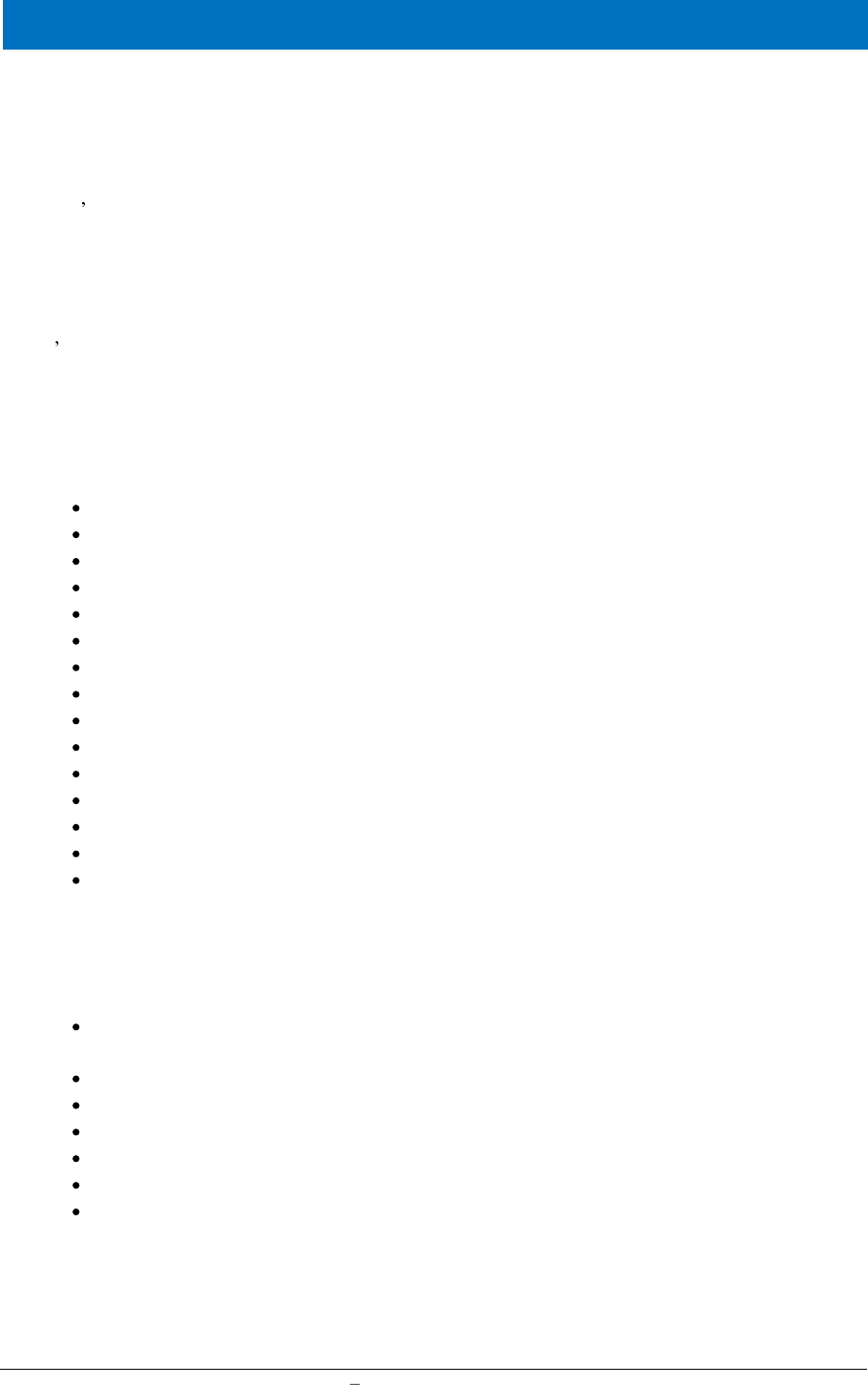
Mortgage Loan Minimum Standards Manual
June 2011
13
2.
MORTGAGE DOCUMENTATI
ON
(MS 02)
Documentation plays a critical role in the mortgage lending process. Financial institutions use mortgage
processing forms to capture, store and analyse the substantial amount of information that is necessary to
prudently originate mortgages and to effectively manage them during the years that they are outstanding. Legal
documents embody the contractual relationship between the lender and borrower, and they secure the lending
institution s interest in the properties that serve as collateral for its mortgages.
This Chapter describes the types of documents that lenders typically employ to document and manage their
mortgage programs. Sample forms including a mortgage loan application and mortgage offer letter are included
in Appendices A1 and A2.
EBRD s Minimum Standards require:
i.
Development of all documentation supplied in the mortgage process must involve suitable
qualified
legal
advisers.
ii.
The
Mortgage Application Form
and supplementary materials should include the following details:
Personal details, including postal codes
Occupation and income
Financial assets
Current debt/repayments
Bank account details
Details of legal body
-
according to local legal norms (e.g. lawyer, etc.)
Current living accommodation
Details of property to be purchased/built, including postal codes
Amount of loan required
Full costs of transaction
Source of funds to cover the cost
Type of mortgage required
Ter
m/repayment schedule
Illustration of interest rate/payment changes
The Application Form(s) should meet consumer protection legislation and must include explicit
consent for inquiries to a credit bureau (if relevant to country) or credit information reporti
ng
system.
(See sample application
form in Appendix A1.)
iii.
Lenders must ensure
verification
of the information in the Mortgage Application by requesting the
following documents:
Completion of standard conditions in application form (including authority for lender to sell the
mortgage)
Valuation and/or structural survey report
National identity cards (according to local legislation)
Marriage certificate or proof of marriage, if applicable
Divorce/separation agreements, if applicable
Architect certificates
-
fo
r self
-
build products
Proof of appropriate registration of the property, such as cadastre excerpts or the equivalent

Mortgage Loan Minimum Standards Manual
June 2011
14
It may be that in the case of real estate to be built or under construction, not all the documents mentioned
above will be available upfront, such as valuation report, cadastre excerpts, etc. These should be made
available in due course as agreed with the client.
For Income Verification,
at least one
of the following:
-
Certificate of income from employer
- State certificate of earnings and /or tax paid (or similar documents according to local
legislation)
- For self-employed people: certified audited accounts or local income confirmation, as the
practice may be in the respective country
Independent confirmation real estate taxes are up to date, if
applicable
Savings or loan statements or other justification of source of advanced payments
Rent accounts, if relevant
iv.
The
Mortgage Offer should be documented in an offer letter and/or mortgage loan agreement that is
legally binding, complies with consumer legislation, safeguards the customer and the lender and will
stand in a court of law. The contents of the letter/agreement should include:
Name & address of customer, including its postal code
Address of property being mortgaged, including its postal cod
e
Amount of credit advanced
Period of the agreement
Number of repayments
Total amount repayable
Cost of the credit
Interest rate (APR ("Annual Percentage Rate"), if the practice of the respective country has such a
banking instrument)
Annual Effective Rate (AER). This is the rate used to computer the equivalent, on an annual basis,
of the present value of all loan repayments and charges, future or existing, agreed between the
creditor and the consumer.
Security (mortgage right) required on the financed prop
erty
General conditions
Consents required to enable the sale of mortgage loan and mortgage rights to third parties, transfer
of data to third parties and the appointment of a third party administrator/servicer, including
consent for access to credit bureau
data, if existing in the respective country.
v.
Post sale documentation.
The following, at a minimum, should be provided post sale:
Written confirmation of the key terms of the loan once the contract is signed and subsequent
notification, at least on an annual basis, in cases where the structure of fees change (e.g.,
redemption penalties, statement fee, re
-
mortgage, early repayment charges, etc.).
Annual statements to the borrower detailing the principal outstanding, interest payments made
during the year and
any penalty interest.
Written notification if the mortgage is sold if required under local legislation.
Written notification of early repayment charge and arrears charges applied by the lender in cases of
arrears and repossession policy or equivalent inte
rnal regulations.
vi.
Documentation
will be required throughout the entire mortgage process. A mortgage lender will
develop a wide range of other documents to cover specific activities and situations. The following is a
list of documents the lender should have
:
Consumer guides to process and
products
Loan disclosure forms (see Chapter
8
for more discussion on the content of disclosures)

Mortgage Loan Minimum Standards Manual
June 2011
15
Relevant marketing material
Application form(s) meeting consumer legislation and/or secondary market requirements
Credit asses
sment template, data analysis forms and system input forms
Letter(s) of offer (loan agreement) - meeting legislative and/or secondary market requirements
(including sale to third parties)
Mortgage deed
Certificate of title report
Assignment of insurance po
licies forms
Valuation or
property appraisal form
BEST
PRACTICES
Compliance with consumer protection legislation is mandatory, but best practice would also include a range of
risk warnings
and advice
in the offer letter or loan agreement such as:
Advice
that the home is at risk if payments are missed.
Advice that the variable interest rates may be adjusted (up and down) from time to time and that the
mortgage payments would also be adjusted to reflect the future change, as the case may be.
Advice that movements of exchange rates could increase which effectively reduce the repayments in
the local currency (numerical illustration is recommended)
Advice to obtain independent legal advice before signing the contract.
For foreign currency loans, advice on the risk undertaken by the borrower should it experience an
erratic change in value
.
REASONS FOR BEST PRA
CTICES AND MINIMUM S
TANDARDS
Application and Supporting Documents
The mortgage application form and accompanying authorisation of borrower enables the lender to collect all the
relevant information verifying documentation to adequately assess the application. The interview is a key
activity in the assessment process. Traditionally lenders have gathered information by using a mortgage
application form and this is reinforced by additional facts collected at a face-
to
-face interview. Many businesses
now use an online data collection process in addition to or instead of a mortgage application form but the
required
information does not change.
The data collection
enables the lender to:
Assemble information about the applicants financial circumstance (status) in order to assess if
the
customer will be able to service the repayments on the loan; and
Assemble information relating to the property on which the loan wil
l be secured.
Assessment of ability to repay
and valuation of security go hand in hand but it is the first of these which is most
important. Even with excellent security there is no point in lending to a person who will find it difficult or
impossible to m
aintain regular repayments. Such a situation causes stress and
hardship for the customer and can
lead to unnecessary administrative work, legal expense and loss for the lender.
The ability to repay is discussed in much greater detail in the chapter on Cred
it and Risk
Management.
Most people agree that it is wise for a prospective borrower to have an initial discussion with their lender about
how much of a loan they can afford before selecting a property and completing a formal application. Many
lenders provide a prequalification worksheet which will indicate the level of borrowing available to the customer
subject to documentary
evidence and final approval.

Mortgage Loan Minimum Standards Manual
June 2011
16
Offer Letter or Mortgage Loan Agreement:
The offer letter (when accepted) is the formal commitment between the lender and the customer. Once the
Underwriting Department approves a mortgage the next step is to issue a Letter of Offer or a Mortgage Loan
Agreement. An Offer Letter is a very important legal document and once it is
accepted
by
the customer it b
ecomes
a binding legal contract under which the lender agrees to lend and the customer agrees to borrow a specified
sum of money, for a specified term, at a specified interest rate (defined variable or fixed) with specified security
and on specified terms and conditions. An accepted Letter of Offer is therefore the legal basis of the lenders
relationship with the borrowing customer. In the event of a dispute regarding the loan it is this document that will
be referred to. Accepted Letters of Offer must be treated as one would treat items of security. They should be
retained in the security file. They should not be written on or defaced as this may affect the validity of the Loan.
The terms and conditions in a Letter of Offer will be comprehensive for informa
tion purposes. The key areas are
set
out under the Minimum Standards at the beginning of the Chapter. A range of consents are required of
the
customer including specific consent for the sale of the mortgage for securitisation /mortgage b
ond purposes.
WHAT
INVESTORS AND RATING
AGENCY MAY REQUIRE
Investors and rating agencies require evidence that loan decisions are made on the basis of interview supported
by collection and/or retention of comprehensive data. The application and supporting documents should be
carefully retained for possible review at a later stage by auditors acting on behalf of investors/rating agencies in
the event of a mortgage bond or mortgage
-
backed securities issue.
FURTHER READING
Refer to Appendix A1
for a sample mortgage
application f
orm.

Mortgage Loan Minimum Standards Manual
June 2011
17
3.
MORTGAGE PROCESS AND
BUSINESS OPERATIONS
(MS 03)
The mortgage lending process is the foundation for the largest financial transaction that most consumers will
undertake in their lives. It is imperative that each member of the staff of the lender or mortgage providers
(commercial banks, non-bank f
inanci
al institutions and others), whether they are employed in sales, marketing,
underwriting, processing, legal or in other functions, understands and be committed to a process that is clear,
fair, transparent and consistent. For the protection of both the borrower and the bank, the lender needs to ensure
that the mortgage is within the customers means over the long term and consumers need to be fully aware of
the commitments and risks they are taking.
3.1
Minimum Standards
(MS 03
)
There are several ke
y points in managing the Mortgage Process:
i.
The lender must have a written description of
its
minimum
standards, of the
required
documentation
and of the steps involved in originating a mortgage. This includes the initial contact with the customer,
the mortgage application and any documents that become a part of the mortgage file. This description
should include a flow chart showing the steps involved a written description of each of these steps and
the responsibilities of each party at every stage of the process. The lender should have processes in
place to ensure that staff from all areas of the bank or the lending division that have a material role in
the process receive
sufficient
training to ensure that they understand and are committed to the process.
ii.
T
here should be a clearly defined organisational structure that includes responsibilities, accountabilities
and roles in all aspects of the mortgage process. Additionally, it is recommended that the employees of
the mortgage lend staff understand that their individual performance records are influenced by the long
term performance of the loans they have made.
The
mortgage loan division should be
led
by a highly
experienced Senior Credit Officer who is empowered to oversee all aspects of loan operations. The
mortgage providers should have an audit or quality control unit that reports directly to the CEO or
designated board committee.
T
he
chart below illustrates the various steps both the consumer and lender will take to complete a loan
transaction
:
Customer
identifies a home they wish to purchase
Customer makes application for loan
Bank performs a pre-qualification and advises customer of the probable terms while issuing a offer
letter
Customer accepts or rejects terms
Customer provides documentation to su
pport their application
Bank verifies all information from the borrower and third parties
Approve/defer/decline application
The
Lender obtains a history of property ownership (also known as chain of title ) and evidence that
there are no claims or attachments to the property that would inhibit
the L
ender
from having a first lien
on the property or
B
uyer being subject to obligations of another person
.
P
roper
ty appraised
Loan Committee approval
Legal requirements completed
:
o
The property transfer deed is pre
pared for Seller and Buyers signature
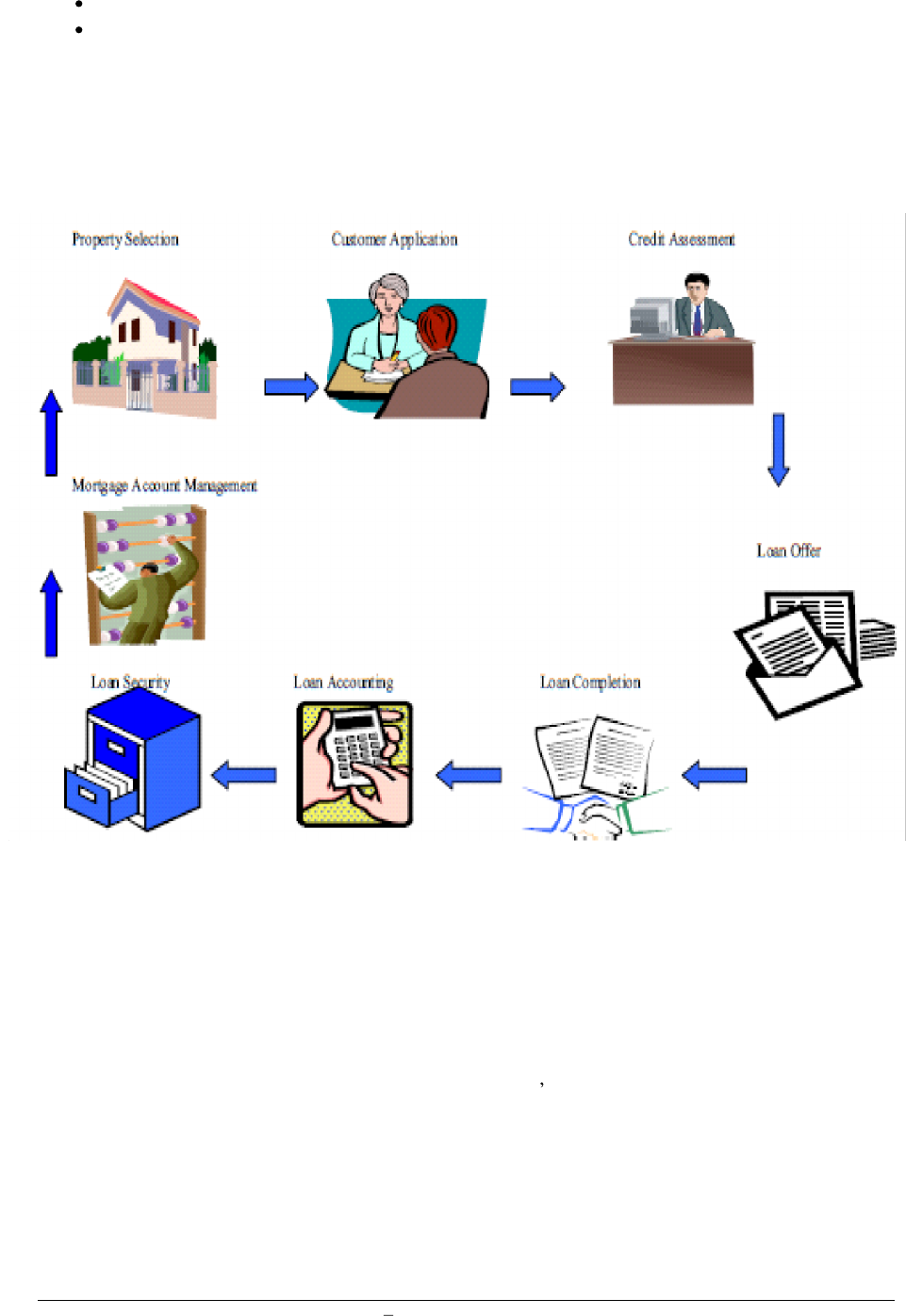
Mortgage Loan Minimum Standards Manual
June 2011
18
o
The Loan Agreement is signed and ready for registration
o
The Mortgage and/or Collateral agreement are properly
executed
and ready for registratio
n
Mortgage drawdown
Mortgage Account Management
A graphic summary of this process is presented below:
Prior to the launch of a new product or the improvement of an existing product, staff representing marketing,
sales, origination, underwriting, processing and legal should agree that the mortgage structure, the underwriti
ng
process, the standards, the documentation and verification, and the disclosure to consumers serves the long term
interests of the lender and of the potential borrower. This should be done up-front and updated from time to
time, depending on the mortgage market development, with existing products as well.
Markets are built and sustained on both investors and consumers confidence. If the business is well organised
and managed, portfolio performance may be measured and observed for the investor and rating agency to assess
governance risk.
Figure 1.
The M
ortgage Process
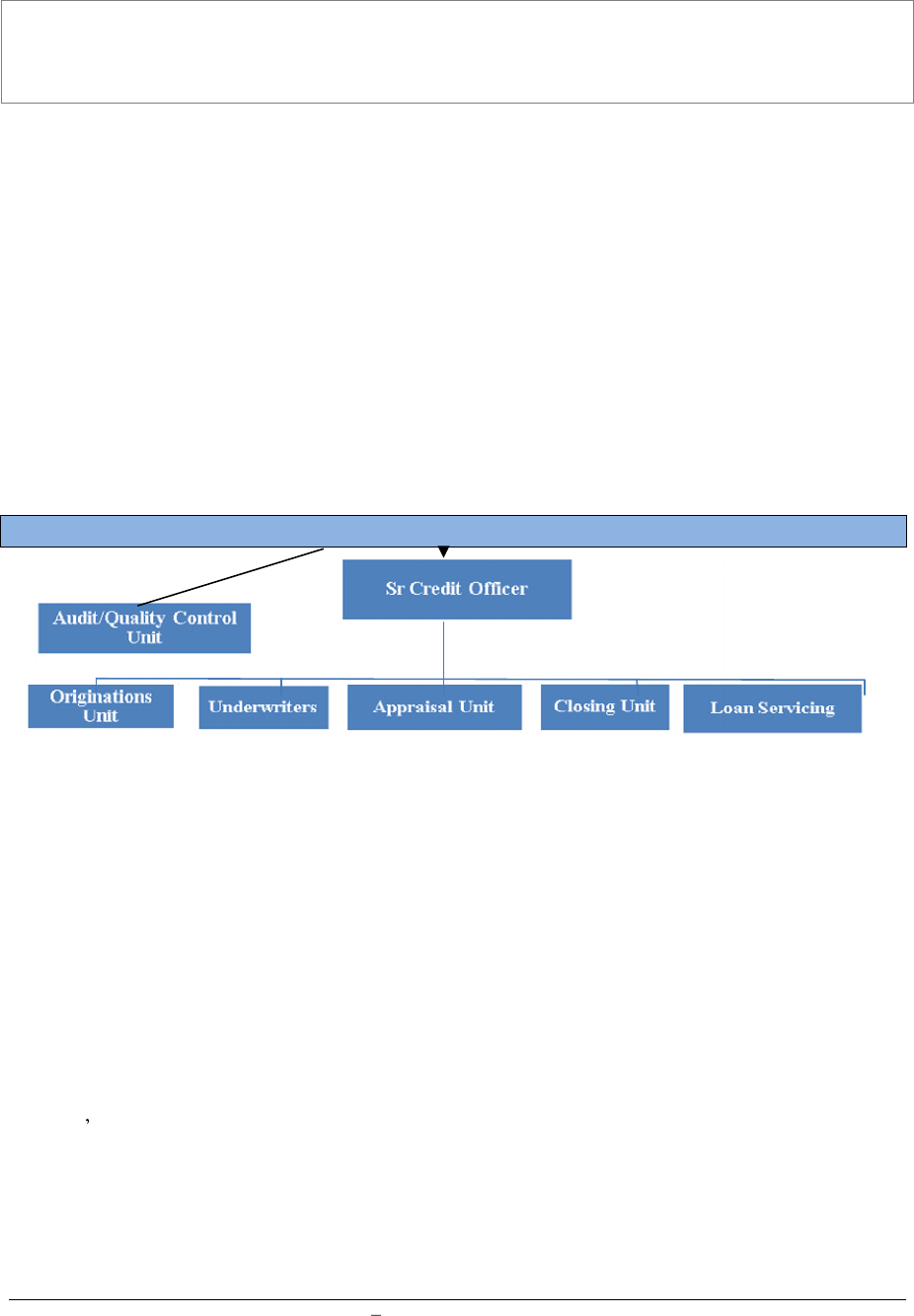
Mortgage Loan Minimum Standards Manual
June 2011
19
3.2 O
rganisational Structure
MINIMUM STAND
ARDS
Organisational structure begins at the Board of Directors level with the development of Credit Policy and
creation of an Audit Committee who reports to the
Supervisory
Boa
rd
or to an Executive management
and/or an
experienced Chief or Senior Credit Officer.
Mortgage origination lenders should be done according to an approved strategy. As mortgage lending is a long
term business, the lenders should originate their mortgage
loans
with the view that the respective loans will be
retained in their balance sheet for at least
2-
4 years.
Regardless
an
organisational structure the
may
lender adopt, it should be supported by necessary checks and
controls to ensure
mortgage lending a
nd risk mitigation
policies are adhered to.
There are two basic structures for a creating a mortgage operation, each with their unique benefits and risks:
Centrali
sed and Decentralis
ed
.
Centrali
sed loan divisions operate through several Units, including Or
iginations,
Underwriting, Appraisal, Closing and Funding and Loan Servicing. All of the units are located in the same
facility and should participate in loan committee meetings to review loan origination objectives, loan closing to
loan application ratios,
and loan performance.
Figure 2: Mortgage Loan Division organisational chart
Executive Management
In each case, as is discussed here each unit or division requires adequate support systems and controls to assure
accuracy of information for decision making purposes, quality service to customers and safeguards against
harmful activities including negligence and fraud.
Overall the Mortgage Loan Division should be managed by a Senior Credit Officer and supporting staff of
managers, department and unit heads. The graph above illustrates a recommended organisational structure for
the Mortgage Loans Division.
As is illustrated, the audit or quality control unit must report directly to the Chief Executive Officer or Audit
Committee of the Board of Directors so as to assure that there is no undue influence from other units.
Within each unit will be staff that performs specific functions. For example the Originations unit will consist of
loan originators or loan officers, and loan processors who build the loan file and verify information
such
as the
borrower s employment, bank balances, and credit. The loan processor function may include requesting the
appraisal and an examination report of the title to the collateral. Sometimes this person is also an analyst who
applies the standards of risk established by the Board of Directors or the Executive Management or
Credit
Committee
of the organisation. The analyst will summarise findings in a report to the Underwriter along with
the loan file.
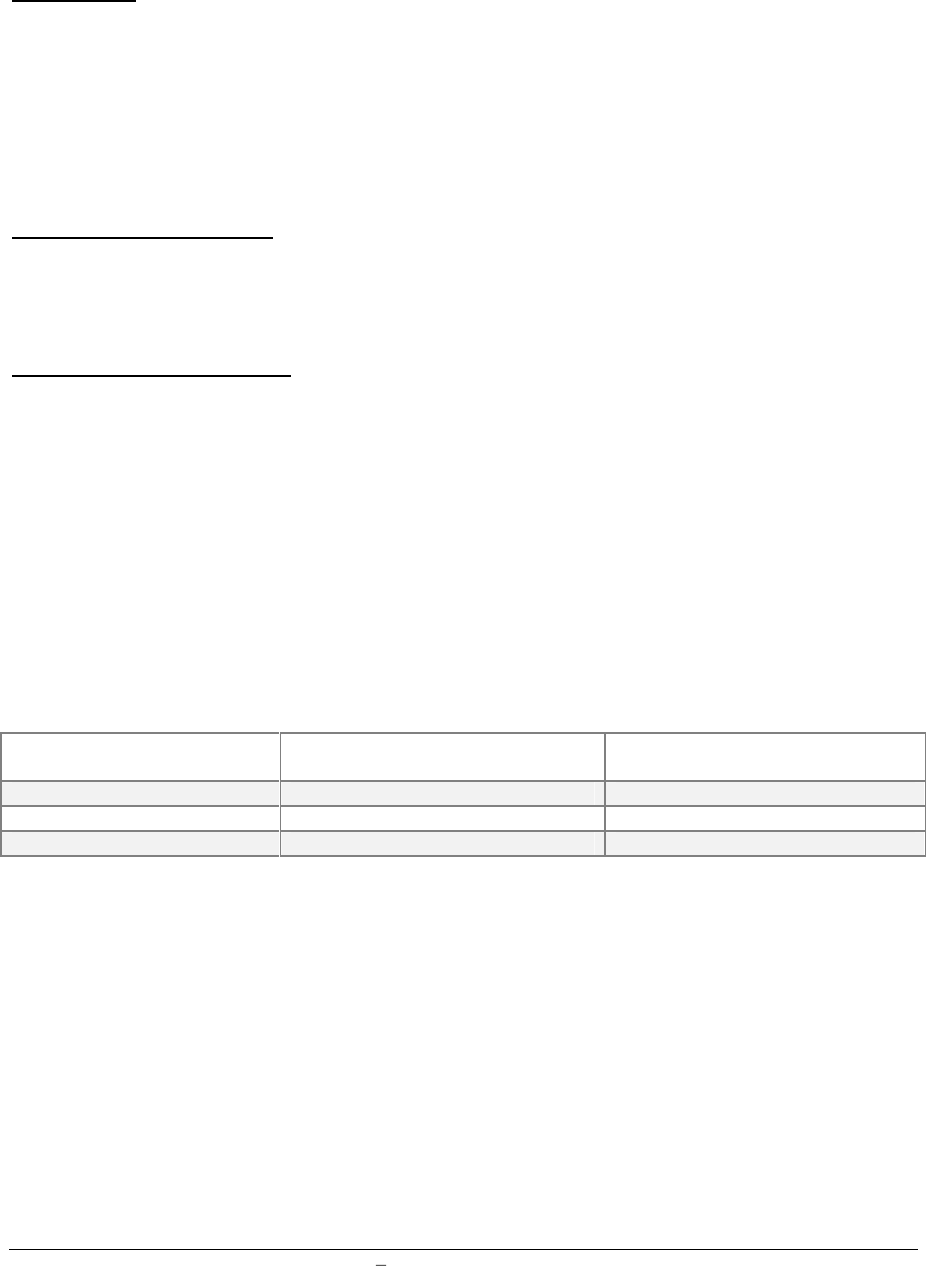
Mortgage Loan Minimum Standards Manual
June 2011
20
The Closing Unit will be comprised of a person, (perhaps an attorney)
who
prepares the loan documents and
security agreements, coordinates signing the documents and filing the loan documents with the appropriate
ministry and interacts with Treasury to fund the loan request.
Once the transaction is closed and funded, the loan file is transferred to the Loan Servicing Department for
administration. The functions of loan servicing will be discussed later.
Policy Making
Loan policy and credit standards are usually created by the
B
oard of
D
irectors
,
Executive Management
or senior
credit committee. As it relates to the decision of decentralisation the board will require a more robust system of
quality control and delegation of authority for operations.
System procedures such as loan product development, loan pricing, back office support, IT systems and loan
servicing are best left as centralised activities, Loan originations and controlled underwriting may be delegated
to branch or remote operations.
Centralised Loan Originations
Cen
tralised origination is most effective for organisations with a specified number of branches or where actual
working space in a branch is limited. Further, quality control of loan transactions and administration is better
managed since there is no need for
duplicate staff or extensive travel between branches.
Decentralised Loan Originations
When the organisation covers a vast territory or wishes to expand into multiple cities, it may be efficient and
economically viable to create Mortgage Loan Centres where the loan originations activities are closer to the
target population. In a decentralised mortgage loan centre, a loan officer and/or loan underwriter may be
delegated authority up to a predetermined level, to write and approve loans. Loan activity should be closely
monitored for quality and performance by tracking default rates by originator and/or underwriter. Even with a
decentralised system, loan authority can be limited to a predetermined amount. After which all loan requests
over a specific amount to be referred to the central loan committee at the home office, or at a minimum, require
the signature of the Senior Credit Officer. Where a Decentralised model of operation is in place, branch
managers implement bank policy in relation to application standards and documentation, loan assessment, issue
of offer documents, taking and perfecting security, issuing the loan cheque and account and arrears
management. The decentralised model would be supported by regular audit checks and balances by Head Office
to
ensure compliance with policy.
N
ote: Minimum recommended experience
sh
ould be adjusted to local markets conditions.
Branch Loan Originations
Recommended
Minimum
Experience Required
Recommended
Approval
Authority Euro
Loan Officer
>10 years
5,000
-
25,000
Loan Underwriter
>7 years
25,000 -
250,000
Home Office Review
>
7 years
>250,000

Mortgage Loan Minimum Standards Manual
June 2011
21
4.
PROPERTY VALUATION (
MS 04)
Property valuations are one of several tools that the lender uses to assess and mitigate risk in a loan request. The
measure of risk, as it relates to value of a collat
eral property is known as the Loan to Value ratio, expressed as
follows:
Loan amount /property value = LTV
75,000/100,000 = 75% LTV
The lower the L
oan
-
to
-
Value
ratio, theoretically, the lower the risk of loss in the event that the borrower does
not repay the loan; this is due to the fact that the borrower has made a significant financial investment that they
will not want to lose. Said another way, if a borrower is required to have a greater investment, the lender has a
lower risk and the greater motivation for the borrower to repay the debt Therefore, the purpose of the valuation
is to provide the lender with an independent opinion of value of a collateral property on the date on which the
valuation is made.
The Appraiser
Real property valuations are part science and part art both of which require the appraiser to have a high degree
of training and experience. The lender should consider whether it desires to develop and maintain an in-
house
appraisal unit or outsource the process to an independent appraiser
.
If the lender desires to have appraisers as
direct employees, it will be important that the appraiser will not be unduly influenced by the loan o
fficer
to
produce an opinion of value with a predetermined value. The lender must develop a screening process whereby
the appraisal request and the final opinion are reviewed by a manager. Similarly, if the appraiser is an
independent contractor, the appraisal should be requested by the loan processor or risk analyst. In either event
the Senior Credit Officer and/or Loan Committee should carefully assess the qualifications of the appraiser and
whether the appraiser has maintained
on
-
going
educational activities. If the appraiser is in house, the lender
must ensure that there is a separation between the appraisers
and the originators.
MINIMUM STANDARDS
The Lender must ensure that a proper property valuation is done by a reputable and bank approved valuer or
appraiser, and the valuation is based upon closed sales. In assessing the profile of the appraiser, the lender must
ensure that: a) the appraiser is a competent professional and a member of a recognised professional body (if
such bodies exist); b) the appraiser has adequate Professional Indemnity Insurance (if self-employed).At a
minimum, an appraiser should have 1-3 years working as an apprentice for a master appraiser before the lender
considers hiring or contracting with the appraiser. Prior to engaging an independent senior or master appraiser,
the Senior Credit Officer and a member of the quality control unit should review 3-5 appraisals that the
appraiser conducted within the last 12 months. The appraisals should be reviewed for accuracy, clarity and
substance. National standards should apply for authorisation of the evaluators (both of the lenders or
indepe
ndent evaluators, as the case may be).
The Appraisal Process
Real property valuations are made on the basis on three criteria; the market approach; the cost approach and the
income approach.
The Market Approach
An appraiser develops an opinion of value u
sing the market approach by comparing recent sales of similar (like
-
kind) properties, in a reasonable proximity of the property being appraised, also known as the subject .
What to look for: when evaluating the appraiser consider whether the comparables a
re similar.

Mortgage Loan Minimum Standards Manual
June 2011
22
Are the comparables like kind to the subject? If the subject is a 3 bedroom flat of 90 square meters, a 1
bedroom flat of 45 square meters should not be used as a comparable. If no other 3 bedroom flats of
similar room count and size are available, the appraiser should expand the search area. Likewise, a 3
bedroom flat on the second floor may have a higher value than a 3 bedroom flat on the 9
th
floor of a
building that does not have a lift.
Are the comparables within the subjects neighbourhood? Comparables should be from an area within
in 1.6 to 2 kilometres of the subject. If the appraiser cannot find a comparable in that distance the
reasons should be fully explained. The underwriter should ascertain whether the lack of comparables
may be detr
imental to the marketability of the property. For example, if no sales of 3 bedroom flats can
be found in a 2 kilometre radius, the underwriter must ask what is surrounding the property. In the
appraisal report the appraiser should have noted that the subject property was surrounded by
manufacturing plants and industrial sites. The conclusion for the underwriter would then be that the
marketability of the subject will be very limited and the loan should be denied or the LTV significantly
reduced.
Was the sale of the comparables recent? Economies and real estate markets are subject to fluctuation.
The market value of a property may have a wide swing in value in a short as six months time.
Therefore, the appraiser must select sales that are within six months
old and certainly no older than one
year. If there are no sales within either period of time, the appraiser should further discuss this matter in
the report. There are both positive and negative factors for the lack of sales in a neighbourhood such as;
the
neighbourhood is mature and homeowners enjoy their location so much they do not sell. The
positive factor is that the demand out paces supply and prices will be stable or increasing. Alternately,
if there are no sales, the appraiser should note in the rep
ort the number of homes that are for sale. If the
number of homes is significant, it is an indication that citizens are not moving into the area, and instead
are leaving which attributes to an excess supply and little demand, thereby resulting in falling p
rices.
The Cost Approach
The Cost Approached to valuation should be weighed carefully when used as a tool for determining value.
When applying the method of the cost approach of valuation, the appraiser develops an opinion of value based
on the replacement cost of the components of the subject property; those components are land costs, material
costs and labour costs.
Such costs may vary as a result of material shortages or when materials are dumped on
a market. Consequently, the appraiser should reconcile or balance each of the three methods of valuation when
making a final conclusion.
For example: if the subject is a row house consisting of 100 square meters and if the row house is situated on a
50 square meter parcel of land, it can be assumed that the house is a minimum of two stories and may or may
not have a garage. First the appraiser will value the parcel of land with other similar parcels of land. (In a fully
developed city, this may not be possible as all of the residential parcels may have been
sold).
Then the appraiser will consider the components of the subject house:
Is the house made of brick, concrete, steel or wood?
Is the roof wood shingle, asphalt shingle, clay tile or other material?
Are the heating and cooling systems passive (such as
solar) or active such as steam heat or forced air?
Are the interior finishes, such as floors, cabinets, doors and installed plumbing fixtures
2
of high,
medium or low quality?
The appraiser will consult cost reference manuals to determine the cost per square meter of each of the
components and will reconcile the findings with the current cost of labour for each trade to conclude a value.
The cost approach should not be relied on as a sole indicator of value as the cost of labour and materials is
2
In most EU countries, kitchens are not supplied with the house as they are considered personal property and therefore may
not be included in the value of the subject.
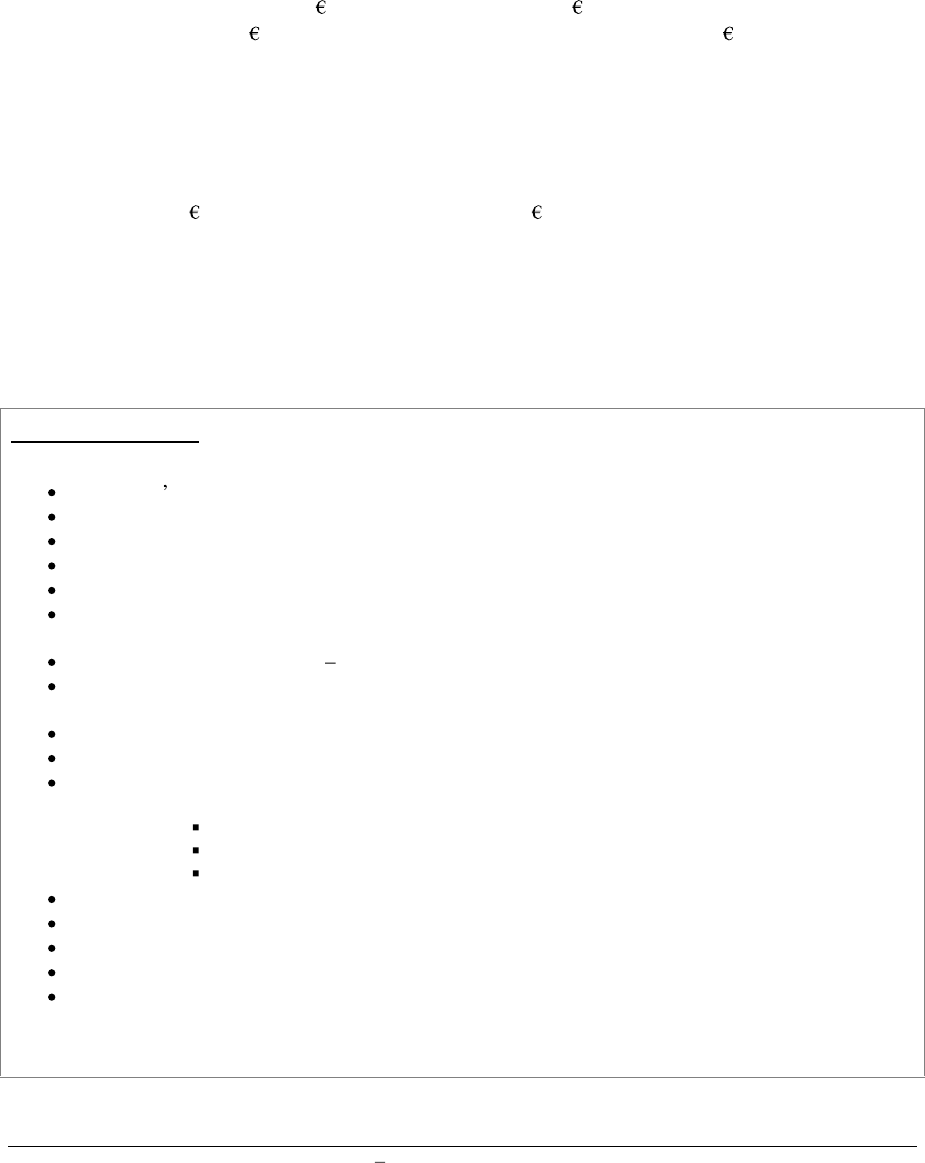
Mortgage Loan Minimum Standards Manual
June 2011
23
subject to c
hange. The cost approach is best used for financing construction or rehabilitation loans.
The Income Approach
Using the income approach is best suited for valuing rental or tenanted properties. The appraiser should
evaluate the rental or lease agreement to determine the gross monthly lease amount plus any obligations the
tenant may have to reimburse the owner for certain costs, such as property tax or rental tax if any, insurance or
public utilities such as water, electricity, natural gas, steam or coal.
Th
e appraiser will then use a method known as the Capitalisation Approach to develop and opinion of value
based upon the rate of return that an owner would realise from the Net Operating Income, (NOI), of the subject.
For example: If a property generated 700 per month x 12 months = 8,400 per year. Then if the expenses that
the owner paid were equal to
2,500 per year for taxes and insurance, the NOI would be 5,900.
To take the next step in the valuation process requires the appraiser to evaluate a reasonable rate of return on
capital. For example, a reasonable person might invest money in a low risk savings account with an annual
yield of 2% or that same person might invest in a more aggressive bond fund with a yield of 4%, while still a
more aggressive (and slightly higher risk) will be an investment in a flat with the intent to generate income at,
say 8% per annum. Therefore the formula for determining the purchase price (and therefore value) of a flat that
has a rate of return of
5,900 per year with an 8 CAP, would be 73,750. The formula is below:
5,900/.08= 73,750
In the valuation of a single family flat that is not intended for rental, the appraiser will place lesser weight on
the income approach and more on the market approac
h when reconciling the value using the three methods.
MINIMUM STANDARDS
The Appraisal Report
Appraisal reports should have detailed information about the property including:
Applicant s name
Lenders name
Address of the property, including the postal code
L
egal description as registered in the cadastral or on a survey
A discussion of the location of the property
A discussion of the surrounding neighbourhood and the elements influencing desirability by
prospective buyers
Type of construction material
wood,
brick, concrete or steel
The appraiser should observe and comment on the quality of workmanship, evidence of defects or
hazards that might jeopardise the health and safety of the occupants
The nature of the property, whether residential or mixed use (resid
ential and commercial)
Whether the current use is legal or conforms to use codes established by local authorities.
Physical description of property
o
Whether the property has:
Functional obsolescence
Physical obsolescence
An economic life at least 20 yea
rs e
xceeding the loan term
Estimated age
Estimated remaining physical life of the property
Dimensions/floor area
Number/type of rooms
Vacant or tenanted: If vacant, the appraiser should ascertain, if possible, the length of time the property
has been vacant; if for an extended period of time, the appraiser and or credit officer should further
investigate whether the lengthy vacancy has negatively impacted the physical condition of the property
and/or systems, such as heating, cooling, water and waste water syst
ems.

Mortgage Loan Minimum Standards Manual
June 2011
24
If tenanted or occupied by anyone other than the borrower the appraiser should ascertain the length of
the lease or rental agreement and the amount of rent the tenant pays.
If the property is under construction, the appraiser should ask for and carefully evaluate the budget to
complete the project. Most construction projects exceed their budget, exposing the lender to risks of an
unfinished building.
Evidence (as available) of any soil conditions such as subsidence/landslide, excessive moisture,
excess
ive rocky conditions which could impact the stability of the structure.
Ingress to and egress from the property including:
Rights of way across or through the property
Availability and security of parking
Repairs identified. A repair list should take into consideration health and safety of the structure,
cosmetic improvements and cures for functional and physical obsolescence. The repair list should
provide an opinion of the cost to cure, but should be subject to further evaluation by the Underwriter or
cre
dit analyst.
Environmental Factors. See EBRD s Environmental Procedures for Mortgage Loans (
www.ebrd.com
).
Any extensions or modifications to the original structure that would negatively affect the conclusion of
value, such as a room extension that was not constructed with quality craftsmanship thereby requiring
it to be rebuilt.
Building permits or planning permission (obtained or required as the case may be)
Services
the appraisal should state whether water, natural gas, electricity and/or other utilities, are
available. (Special note should be given to the existence of passive energy systems since such systems
may reduce the monthly expense of the borrower)
If under construction the appraiser should be provided a copy of the approved building plans and the
cost of construction budget. The appraiser should evaluate the stage of construction reached, any
deficiencies noted in the work and an estimate of time to complete the construction. Special attention
should be given to any project that has been delayed or exposed to the elements for more than a few
months as deterioration of unprotected construction materials may shorten the life and undermine the
strength of the material.
When the appraisal is complete, the appraiser should be signed and should include their qualifications and the
name of the firm.
Appraisal reports should be carefully studied by the underwriter and loan analyst. Irregular matters or anomalies
should be addressed and if satisfactory mitigants cannot be employed, the matter should be directed to the
Senior Credit Officer. Mitigants include having the appraiser address irregularities in the conclusion of value;
lowering the loan to value of the loan request or requiring the appraiser to determine a quick sale or distressed
sale value in the event the lender was required to dispose of the property in less than a normal market time.
Other Property Reports
Occasionally it will be necessary for a lender to obtain opinions of the condition of a property fro
m other experts
such as a structural or environmental engineer.
Engineering and Structural
When a lender is evaluating a loan on a property that is beyond 100 years old, or when there is evidence that the
property has had one or more vertical or horizontal additions, it is well advised to obtain an opinion of
suitability and safety from a structural engineer
3.
Further, in cases where a region has been devastated by a
catastrophic event, such as in Thailand in 2010 and Japan in 2011, the soundness of the structures may have
been undermined.
An engineer s report will detail the physical condition of the property with stress tests to determine the
remaining physical life of the property as well as potential costs to remediate conditions found.
3
In Cairo, a building collapses each week from poor structural support and from vertical additions to a
n existing building
where the foundation and lower supporting structures have not been reinforced.

Mortgage Loan Minimum Standards Manual
June 2011
25
Environmental
Not
withstanding the health and safety of the borrowers, a lender must be concerned about contaminants and
risks found in building materials and subsurface of the land. For example, prior to 1978, lead based paint was
widely used to pain the interior and exterior of homes. While it may seem unthinkable, small children who
ingested paint chips latter suffered debilitating maladies. In many countries, asbestos was used to insulate pipes
and heating systems. If airborne, asbestos causes lung cancer.
Consequently,
a lender must take these matters into consideration or at the least investigate the potential for
contaminant risk in the event that the lender must repossess the property. Appraisals should be detailed reports
and should include photographs of the interio
r, exterior, neighbourhood and of each comparable.
Lenders should refrain from using desk top valuation models or drive by evaluations for loans exceeding 50%
LTV. It is well advised that the Loan Officer make a cursory inspection of the property when meeting the
prospective borrower on site for the application and note his or her findings in the loan file.
For further information on environmental factors see EBRD.s Environmental Procedures for Mortgage Loans
(
www.ebrd.com
).
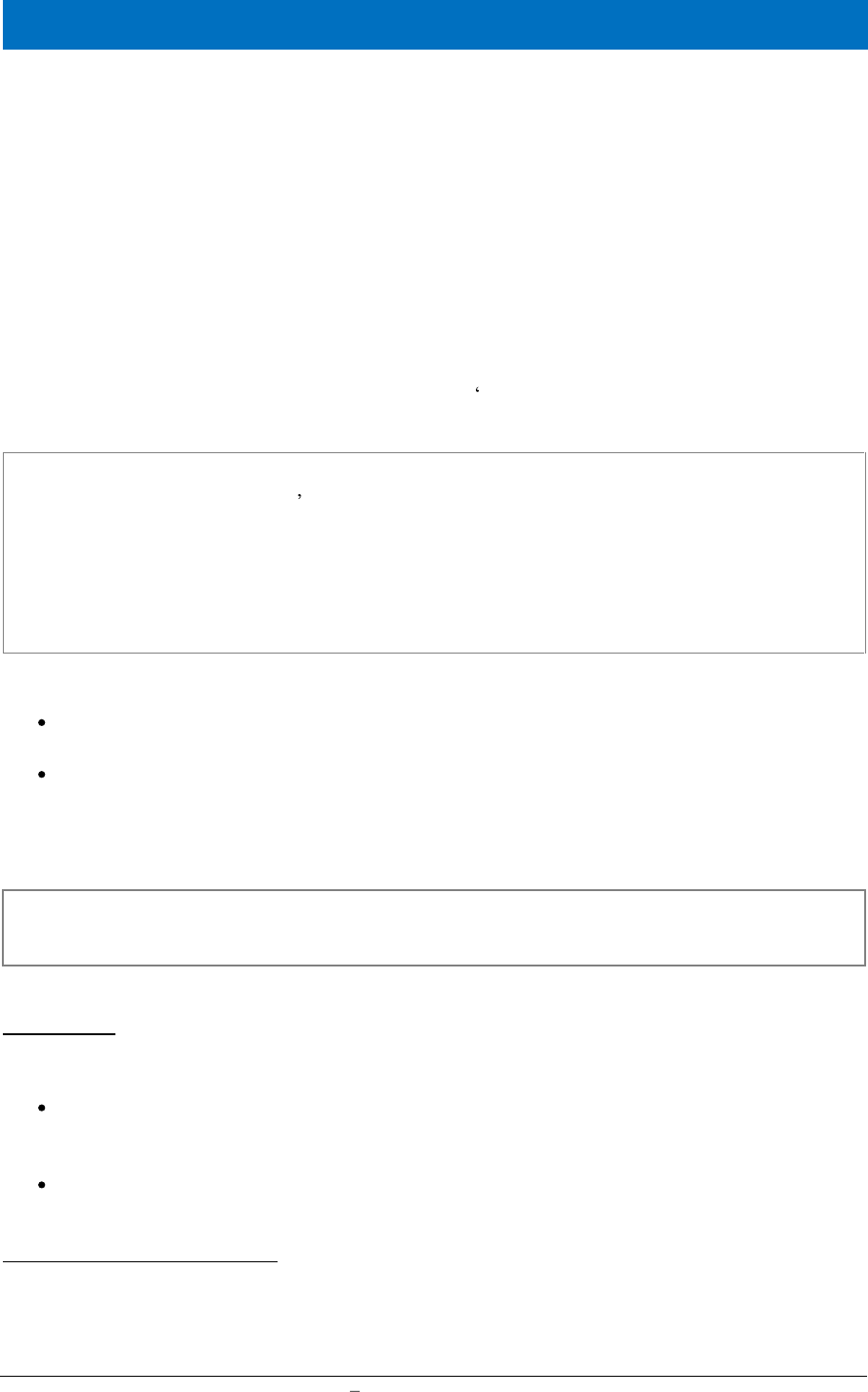
Mortgage Loan Minimum Standards Manual
June 2011
26
5.
PROPERTY OWNERSHIP A
ND LEGAL ENVIRONMENT
(MS 05)
Many aspects of property ownership have been decided by courts and national laws and therefore are very
country
-
specific
. The following chapter has been written to guide through what could be a typical legal
environment, but should be reviewed and a
dapted to the specifics in place.
A general definition 'ownership' is the right to have exclusive use of a parcel of land, home or an apartment
without worry that another person will claim an ownership or right to use the same property Ownership may be
subject to limitations made by decree. For example, a seller of a parcel of land may transfer to a buyer the right
to use and build a home on the parcel, but
may
reserve the right to any minerals found under the surface of the
land.
Ownership is also subjec
t to civil laws, such as zoning and use, height restrictions and safety matters.
In most countries, if the state needs to acquire land for social or infrastructure purposes then it may exercise its
power a (sometimes known as eminent domain) by issuing a compulsory purchase order' (sometimes known as
a condemnation order) and the owner may be compensated with the fair market value of the property.
Lenders are cautioned to have their legal staff include provisions in the loan agreement and security
agreemen
t which address the lender s superior rights to payment or settlement awards from condemnation
awards. Payment should be made to the lender and property owner jointly, which the lender may pay off the
obligation of the borrower and/or reduce the obligation
in proportion to the taking of the building or land. For
example if the collateral for a loan is a detached single family home on .5
hect
are of land and the state had
issued an order for the taking of 20% of the land for the expansion of a highway, the loan amount should be
reduced by 20%, thereby keeping the
loan
-
to
-
value
ratio within the original agreed upon amount.
Ownership can be:
Sole and separate: one person owns the property and
,
if married, the spouse
agrees to give up any claim
to ownership.
Joi
nt Tenancy: two or more people own the property with equal or unequal shares as determined
between them. In some countries all parties must agree to sell and/or pledge for collateral.
4
Tenants in
Common: Ownership consists of two or more owners, and need not be married or related, with each
having a right to sell their portion independently.
5
Types of Title
There are two basic types of title or ownership
-
Freehold and Leasehold.
Freehold estate is ownership and rights to use a property without limit in time, except for the rights of
the State
.
A freehold estate may be subject to the obligations pre-existing on the title of the property
(such as the obligation of future taxes), which were passed on to the buyer by the seller.
Leasehold estate is where the owner with freehold rights has granted a lease on the land (or building)
for a
specific
period of years and thereby gives to the leaseholder a right to use the property
exclusively. The leaseholder has complete possession of the land/property for
the specific
term
,
as long
4
Ownership has a legal basis in the laws of the land and may have an impact upon heirs of the owners. Lenders should seek
competent legal advice before crea
ting conveyance deeds that may impact the spouse or heirs of a borrower upon death.
5
Ibid
Best practice: Consult a competent attorney on family, marital and contract law and do not allow loan officers
or other staff to give legal advice on the matter of ow
nership
.

Mortgage Loan Minimum Standards Manual
June 2011
27
as the user makes payment to the owner.. Leases can be for anything from 5 years to 999 years. It is a
best practice for a lender to avoid making a loan on a property where the lease term is less than 50
years from the maturity of the loan.
Tenancy is the right in a leasehold estate to occupy for shorter terms such as letting a house or apartment for 6
months to 3 years. Tenancy is not a title and it gives no right to remain in the property beyond the contractual
term.
MINIMUM STANDARDS
Lenders should consider mortgages only for people who have Freehold or Leasehold estates with a substantial
unexpired term on the lease.
The borrower should either have:
i.
Freehold (Full ownership) legal title which gives them all rights to use the property without limit in time,
except for the right of the State to take over the property in certain circumstances
after
paying compensation
based on at least full market value.
The property may be subject to certain
rules
placed on the property by a prior owner or developer. The
lender should seek legal advice on the impact to the proposed loan as a result of the restrictions.
or
ii.
Leasehold
title with the term of the lease equal to or not less than 50 years
after
the
maturity
of the
loan.
Minimum residual should not be less than 20 years so that it will take term of mortgage into account. It
is
recognised that this type of legal distinction may not exist in all jurisdictions.
In some countries, land ownership may be held by an extended family or tenants in common if owned by a
community
.
Lenders must carefully evaluate the legal complexities and risks of lending to borrowers of
common land ownership, specifically where a lender may be restricted from foreclosure.
Registration of Title
Many countries have updated and improved their property registration systems by implementing a Land
Registry,
where titles, conveyance deeds, mortgages, encumbrances and other matters affecting real property are
registered. During the loan origination process, and before loan approval, the title to a property must be
examined, usually by a notary or other professional competent in such matters. This examination is known as
examining the chain (or abstract) of title to determine if the title has any previous claims (also known as colour
or clouds).
Claims or clouds
, such as an existing mortgage,
may inhibit the rig
hts of the lender,
and
must be removed before
the new mortgage is placed on the property. This process usually requires negotiation between the attorneys for
the parties and the preparation of
a
payoff statement. At settlement, checks may be exchanged and a release is
obtained which will be recorded in the Land Registry before the new mortgage or security agreement is
recorded.
The chain of title should identify the following:
Current owner of record
Type of ownership (freehold or leasehold)
Encumbrances on
the land such as easements for utilities
Public roadways or access to the land or building
Denominated obligations such as past due or current taxes or existing mortgages

Mortgage Loan Minimum Standards Manual
June 2011
28
Another common problem encountered by lenders is a title that is clouded by the mor
tgage loan from a previous
borrower. This is a result of the previous lender failing to record the termination of the mortgage in the Land
Register (or place in the registry of public records a Satisfaction of Mortgage). When the report of the condition
of
title reveals this condition, the previous lender should be contacted immediately. If the previous lender states
that there is still money owed to it, the previous owner must be contacted to resolve the matter. This could result
in a delay and the new len
der should not use the property as collateral until the previous mortgage is satisfied.
For this purpose, it is advised to use an independent and neutral third party such as an escrow agent and/or
attorney who will collect the satisfaction of the previous
mortgage with a promise to record the satisfaction only
when the escrow agent or attorney is in a position to 1) pay the previous lender in full and; 2) record the new
mortgage as a superior lien on the collateral property. To facilitate this activity, a title search must be conducted
on the previous owner and the collateral property. Further, if time should elapse between the time the purchase
agreement is written and accepted by both parties, the title should be searched again before settlement to be
cer
tain no other claims of title have appeared.

Mortgage Loan Minimum Standards Manual
June 2011
29
6.
INSURANCE (MS 06)
MINIMUM STANDARDS
Insurance is a secondary source of security if there should be a catastrophic event such as death of the borrower
or severe damage to the property from fire, flood or other acts of nature. The proper insurance policy will
reimburse the lender for potential approved losses.
There are several types of insurance that a lender should require (life and property) and another
(mortgage)
that
should be considered when making a mortgage loan:
Life
insurance
which insures the life of the borrower and which benefits the lender and possibly the
surviving members of the family
,
Hazard
or property insurance, including fire, flood, earthquake
which insures the collateral property
and provides protect
ion to the borrower and lender in the event of a catastrophic event
, and
Mortgage insurance
which insures the lender in the event that the borrower defaults on the loan
and/or cannot repay the debt in full.
Ultimately, the purpose of insurance is to shift the risk of loss to another entity and to provide for a cash
settlement for a catastrophic event such as a fire that destroys the collateral property.
When considering insurance, the lender and borrower must look to the capitalisation and stability of th
e
insurance company. Insurance providers should be of the highest quality
6
in order for the insured to rely upon
for payment when needed.
Life Insurance
MINIMUM STANDARDS
A Life Insurance policy on the life/lives of the borrower(s) to cover the outstanding principal for the term of the
loan. The policy is to be assigned to the lender and its value will decrease in line with outstanding balance of the
loan.
Alternately, the customer should be provided the opportunity to consider a whole life insurance policy that has
value beyond the mortgage. Such a policy is beneficial for the surviving family members. A whole life policy
can have an assignment of benefits to the lender as the first priority, which would pay off the loan and leave the
survivors with a free
and clear home as well as a potential cash benefit.
A Life Insurance policy on the lives of the borrower(s) must be sufficient to cover the outstanding principal for
the term of the loan. The policy should identify the lender as an additional loss payee in the event of death. The
policy proceeds will be used to pay off the debt and if there are additional proceeds, the survivors should receive
the balance.
Basic types of insurance are Term and Whole (Universal) Life Insurance.
6
In the US
,
the Key Best Rating Service is considered a reliable rating service which evaluates the capitali
s
ation and
stability of insurance and re
-
insurance compa
nies.
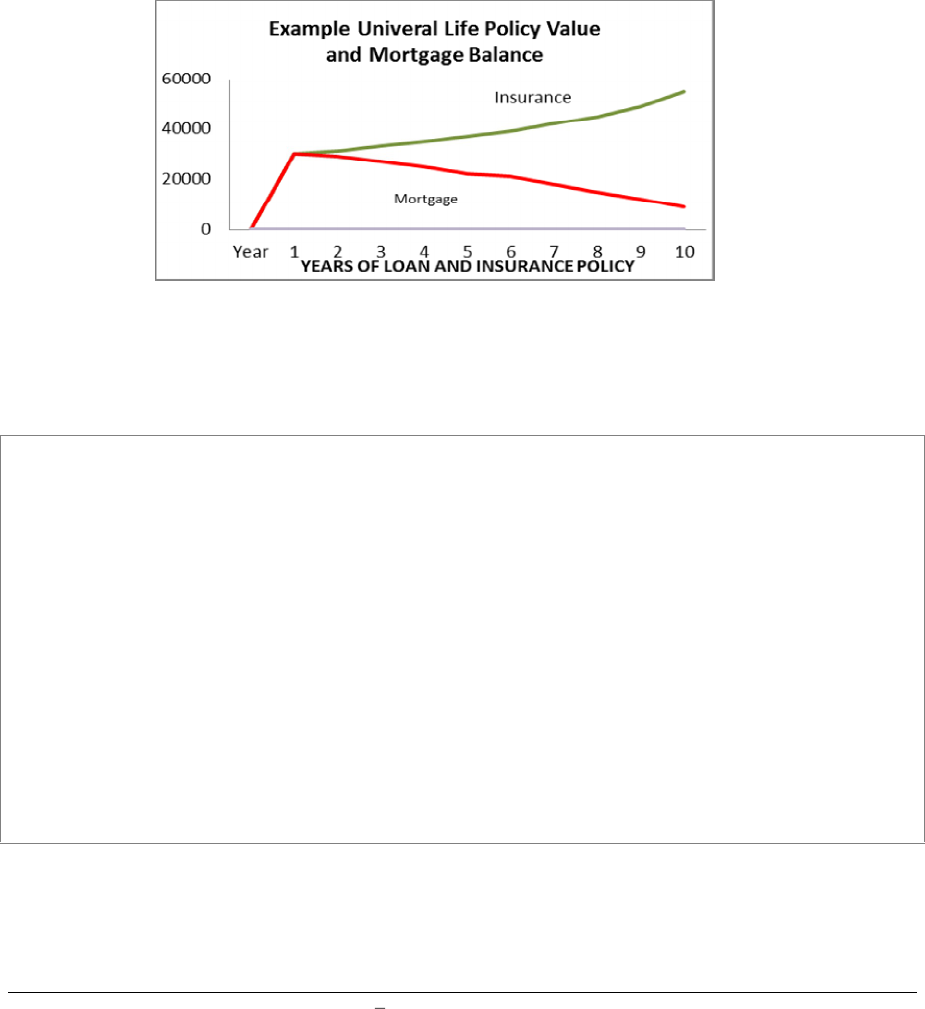
Mortgage Loan Minimum Standards Manual
June 2011
30
At the time of the loan, the customer should be provided the opportunity to consider a whole life insurance
policy that has value beyond the mortgage. Such a policy is beneficial for the surviving family members. A
whole life policy can have an assignment of benefits to the lender as the first priority, which would pay off the
loan and leave the survivors with a free and clear home as well as a potential cash benefit. The following
describes each type of policy.
Term Insurance
Term insurance is a very basic risk policy and
could be
t
he least expensive
if issued
on a euro by euro basis. The
policy typically will have a fixed annual premium during the course of the loan with a declining benefit. Term
insurance however, is the a low quality insurance that is quite profitable for the insu
rance company and provides
limited benefits to the borrower and the borrowers family as the benefit declines as the principal balance of the
loan decreases.
Whereas a universal life policy will bring more benefit to the family upon the death of the principal borrower as
the policy has a growing value, which upon death, would pay the mortgage in full and any value thereafter
would be paid to the survivors. For example:
Hazard Insurance
MINIMUM STANDARDS
Property Insurance should only be accepted
from
high
rated insurance companies with adequate reserves to
facilitate claims for catastrophic events, such as an earth quake, flood or other natural disaster.
The policy should be indexed
or
contain
defined
escalators to provide for increased coverage against loss if the
property value increases.
The initial coverage should be sufficient to replace or reconstruct the property* in a covered event.
The policy
should
be
issued in the joint names of the
borrower
and the lender
and
the interest of the lender (
as
lo
ss payee
) should be noted in the insurance policy.
*This is the amount the property should be insured for each year and it should cover the replacement cost of the
building should it be damaged or fully destroyed. This cost is linked to either a construction industry index of
costs or to the Consumer Price Index. In addition to the main building, the following should be included in the
insured amount
-
out buildings, site clearance, temporary re
-
housing costs and professional fees.
As it relates to hazard insurance, the lender must have adequate provisions in the loan security agreement to
require the insurance; to provide for verification that the insurance premium is paid when due, to provide for

Mortgage Loan Minimum Standards Manual
June 2011
31
sufficient insurance coverage to repair the property to its original condition (to the extent possible), and to
provide for a clear procedure for disbursement of the proceeds of a claim; for example:
The security agreement should provide a clear statement that:
Claims must be filed promptly (say within 10 days)
of the date of a catastrophic event
Claims must be payable to the lender and the borrower or the lender exclusively
If in the event there is damage to the collateral property, the damage must be repaired within a
reasonable time, (say 20 days),
o
The repairs
must be completed by a licensed contractor
o
The repairs must be in good workmanship
o
The repairs are subject to the approval of the lender
Mortgage Insurance
MINIMUM STANDARDS
Mortgage insurance is a credit enhancement which the lender may consider when making loans that exceed the
recommended loan to value ratio, although the maximum LTV as defined in the LMS will still have to prevail
.
The lender must assure itself that the mortgage insurance company is adequately capitalised.
T
he lender
must be
identified
as first beneficiary under the policy.
Mortgage insurance is a credit enhancement for the benefit of the lender and a buyer of the mortgage note or
securiti
sation agreement, wherein the premiums are paid by the borrower. Mortgage insurance is generally
required when a borrower request a loan with a down payment of less than 20%. For example, if a borrower has
only 15% down payment, the loan to value is 85%, the lender must displace risk. With mortgage insurance, risk
for the small down payment is shifted to the mortgage insurance company. Effectively, if the borrower defaults
on the loan, the mortgage insurance company will cover a certain percentage of any loss (in this case, the first
5% of the loan) if the borrower defaults and the property must be foreclosed and liquidated. After which, the
lender assumes the balance of any losses.
Mortgage insurance products vary by amount of coverage, method of premium payment and quality of
borrower. A lender must fully investigate the mortgage insurance company to determine whether the company
has sufficient capital and assets to absorb a systemic loss.
How it works:
Let's assume the lenders credit policy is to carry risk of 80% LTV.
The property being purchased costs 85,000 and the loan application is for 90% LTV which is 76,500.
Normally, the lender will lend 80% of
85,000, which is .68,000.
For e
xample:
Purchase price
85,000
Valuation
85,000
Amount of Loan (90%)
76,500
80% of purchase price
Amount to be bonded
8,500
Cost
7
225
7
The cost of the bond in this instance is calculated at 3% of the bond amount. In general the higher the LTV the
higher the cost i.e. the insurer is taking a greater risk.

Mortgage Loan Minimum Standards Manual
June 2011
32
Build
ers and Contractors Guarantee
In order to improve the quality of construction, some Governments, working with representatives of the
construction industry, have introduced a regulatory framework for the private house building sector.
The scheme specifies a high standard of construction and requires inspections of houses being built to ensure
compliance with the standards of construction specified. The guarantee covers homes and apartments and is
available to builders who join the scheme and meet its
require
ments.
One scheme provides the following guarantees to the purchasers of all newly constructed houses.
Guarantees house against major structural effects for 10 years
Guarantees house against smoke and water penetration for 2 years
Guarantees against loss
of phased payments before the house is completed
The 10 year and 2 year guarantees are self-evident. Let s look at the phased payment guarantee. This works on
two
levels:
Level 1
:
This is to protect the purchaser (and lender) in a situation where the builder declares bankruptcy or goes
into liquidation during the building period. The scheme will
protect the purchaser's deposit or contract payments up
to a specified maximum.
Level 2:
This comes into effect usually after the final inspection when the house is ready to be handed over to the
buyer. The financial indemnity for the remainder of the contract period now increases to a higher specified
maximum.

Mortgage Loan Minimum Standards Manual
June 2011
33
7.
CREDIT AND RISK MANA
GEMENT STANDARDS (MS
07)
MINIMUM STANDARDS
Every
lender must have a well-
defined
Credit Policy which must clearly identify the parameters by which the
lender carries out its mortgage lending activities with emphasis on practices that identify and mitigate risks. This
chapter will include subjects in sub-headings which will refer to other chapters in the manual. The elements of the
p
olicy to be discussed in this chapter include:
Introduction
to Credit and Market Risk Management
Contents of a Credit Policy
Credit Risk Management
o
Underwriting and Operational Standards
Loan Administration and Default Management
Introduction to Credit and
Market Risk Management
Key risks that financial institutions must guard against include:
Liquidity Risk
Interest Rate Risk
Currency Risk
Market Risk
Credit Risk
Operational Risk
This chapter will focus only on Market and Credit Risk in relation to Mortgages and will address specific elements
necessary in the Credit Policy.
Credit and Market Risks arise in areas such as:
Competitive
pressures
- competitors may introduce lower credit standards or accept vulnerable customers
from other lenders to gain busines
s
Aggressive pricing in the way of lower interest rates and fees
Economic downturn - leading to a contraction in employment or in property values Substantial increase
property values
as in the case of a potential market bubble
Portfolio
c
oncentrations
-
o
ver exposure to a geographical area or employer
Fraudulent
a
ctivity
- fraud by applicant, intermediary, lawyer, and valuer results in approval which in the
ordinary course would be declined.
Changing
a
ttitudes
- v
olatility
in markets/changes in social/political attitudes which make it difficult to
repossess and sell a family home.
The following approaches are adopted to manage these risks:
Maintain consistent credit standards through all phases of the economic cycle. Specifically avoid lowering
credit stand
ards in response to competitive pressure.
Investigate the integrity of the applicant at the outset and maintain a focus on 'repayment capacity'.
Stress test 'repayment capacity' by increasing the interest rate in the repayment capacity model.
Maintain and
develop comprehensive and effective systems for managing credit exposure.
Monitor and manage portfolio concentrations to avoid over exposure.
Ensure a team of experienced well trained and professional lenders are in place.
Immediately cease to deal with fraudulent parties and implement corrective actions to guard against similar
occurrences.

Mortgage Loan Minimum Standards Manual
June 2011
34
Credit grading the customers - Credit Grading is an automated system that measures risk based on payment
performance and automatically downgrades on default.
Develop an
automated collections system to follow up on arrears.
Application of loan loss provisions when making mortgage loans.
Pricing lending at margins which provides a satisfactory return on equity (ROE) and reflects the level of credit
risk and related managem
ent costs involved.
Managing the 'credit' elements of new products to ensure balanced risk reward ratio.
Regular reviews with Group Credit (if Mortgage Centre is stand
-
alone).
Full compliance with all relevant legislation and internal codes of conduct.
I.
Con
tents of a Credit Policy
-
Primarily the Credit Policy
must address:
Target borrower
s:
o
First time home buyers
o
Move up buyers
o
Refinancers
or equity release borrowers
o
Second or vacation home buyers
o
Foreign nationals
o Types of customers to whom loans will not be granted (e.g. minors, active bankruptcy or
previously foreclosed borrowers
)
Acceptable income sources
and, on a case by case, a constant and predictable stream of inflows from
remit
t
ances from abroad (based on a proper analysis by the mortgage provide
r)
.
o
Wage earners only
o
Self employed
o
Income from investments such as homes for rent
Acceptable properties such as
o
Single family homes, flats and units for rent
o
Unacceptable properties such as unimproved land
General lending parameters, such as
o
Term or tenor
of the loans made
10, 15, 20 or
25 years
o
Type of loans
Fixed rates
Variable rates
Underwriting rules
o
Housing debt to income ratios
o
Total debt to income ratios
o
Adequate reserves
Standards in relation to property valuations, such as
o
Maximum loan to value
o
Minimum experience level of appraiser
o
Minimum number of comparables used
o
Age of comparables used
Credit authority
o
Centralised operations
o
Decentralised operations
Commitment to operate to highest ethical standard and within all legislation.

Mortgage Loan Minimum Standards Manual
June 2011
35
II.
Credit Risk Man
agement
Risk management is intended to strike a balance between the minimisation of loss and business growth. The lender s
first priority is to protect the depositors money. This balance requires management to review the Credit Policy
regularly to reflect
changing business objectives and
market conditions.
The policy must address the type of credit that is acceptable to the organisation, for example, long term loans
versus short term loans, and loans for flats versus vacant land. The policy must include provisions for
identifying fraud and borrowers known to be dishonest or those that engage in risky ventures. The policy must
address lending criteria in accordance with Minimum Standards as outlined in Chapter
1.
Credit and loan standards are an integral element of Credit Risk Management which includes:
Collateral
Type of acceptable real property
Residential properties should be
the highest consideration
Undeveloped land, industrial and special use
properties should not be considered
Location of real propert
y
Properties in developed and urban areas should be
the highest consideration
Rural or remote properties should be considered on a case by case basis only
Condition of real property
Properties should be well maintained with minor repairs considered
Propert
ies requiring extensive retro- fitting or rehabilitation should only be considered with the
guidance and advice of engineers and licensed contractors
Occupancy of the real property
Owner occupied properties should be the highest priority and be offered mar
ket interest rates
Loans for non-owner occupied or tenanted properties should be adjusted for risk. The LTV should
be lower and the interest rate should be higher to
compensat
e
the lender for risk.
Value of the real property
Each lender should establish the minimum value of a property it will consider for collateral. This
value may vary based upon location and local conditions.
Capacity
The amount of the borrower s net income as it relates to the monthly payment: The maximum
Housing Debt to Income Ratio is recommended
is 35% of the borrower s net income.
The amount of the borrower s income as it relates to all revolving debt including the proposed
housing payment should be quantified: The maximum Total Debt to Income Ratio is
recommended is 50% of the borrow
er s net income.
Reserves or excess cash that the borrower has after all debts have been paid should be quantified
.
The minimum cash reserves for a borrower after all payments should take into consideration
the
number of family members living in the household, their ages and if elderly are in the house, their
need for medical treatment.
Capital
The amount of readily available cash for a down payment on the purchase of a home. The
minimum down payment requirement is recommended to be 10% for a loan insured w
ith Mortgage

Mortgage Loan Minimum Standards Manual
June 2011
36
Guaranty and 20% without a guaranty.
Capital can come from a borrower s savings, a gift from family members or the liquidation of
another asset.
Credit
A history of a borrower s payment of other credit obligations is a critical tool in evaluating future
performance.
o It is recommended that the borrower have demonstrated a consistent payment history on
revolving credit or other housing expense. Monthly payments made within 5 days of the
due date should be rated higher than borrowers who have made
payments 10 or more days
after the due date. Borrowers who have made payments more than 30 days past the due
date consistently over a period of 12 months may have underlying problems that should
be further investigated. Borrowers that demonstrate an irregular payment pattern may be
demonstrating signs of poor financial management.
Credit reports should be obtained from reliable reporting companies.
Lenders should refrain from making loans to borrowers with payment histories known to be slow.
Lenders should
refrain from making loans to any persons with a criminal background.
Foreign Currency Loans
The Credit Policy should clearly identify those circumstances where foreign currency loans will pose
unnecessary risk to the organisation and borrower.
The policy should require lenders to explain in writing to borrowers the risk undertaken by the borrower in the
case of mortgage loans denominated in a foreign currency should experience an erratic change in value.
Underwriting and Operational Standards
The operational section of the policy should set forth a standard set of procedures that the loan department will follow
when
taking an application, building the loan file with acceptable documentation and
appl
ying
underwriting rules. The
policy must ensure that underwriters and account managers apply the policy initially at credit assessment stage and
subsequently throughout the life of the mortgage. The process of quality control must be applied all during the loan
process.
For each risk factor, the lender should set
a ceiling above which it will not lend
for example if a borrower has a very
good credit rating but lower down payment the ceiling would be 8
0
% LTV if mortgage insurance is available.
The policy must also address compensating factors for reconsidering a l
oan including exceptions as well as decline and
appeals procedures. The policy should require specific factors, such as increasing property values or increasing wages.
Specifically a loan may be approved where a borrower has a very high income and lower do
wn payments. Thus a loan
with a higher LTV ratio may be made with a compensating increase in interest rate to offset risk. The same would be
true when considering a higher DTI when making smaller loans. When interest rates are increased a corresponding
inc
rease in loan loss provisions is also necessary.
Staff and Credit Training
The policy must include expected lending skills standards, lending authorities, tiered discretions, training requirements
and succession planning. Regular training for staff is a mu
st. Even seasoned loan professionals must be current on new
lending trends and regulations. The Credit Policy should be implemented by setting out clear factors to be
considered in reaching a credit decision, how each is to be taken into account and how they are to be combined
to reach an overall conclusion. Objective credit assessment and prudent credit decisions are made by
ensuring
that all loan requests are managed by experienced staff with a minimum of 12 months training. Competence is
to be judged by Chief Credit Officer or delegated experienced lender before a lending authority is authorised. A
significant commitment should be made to the training and
development of skilled lenders.

Mortgage Loan Minimum Standards Manual
June 2011
37
Loan Assessment and Quality Control
In conjunction with the application of the Credit Policies and the Underwriting Criteria the following
Six
Loan
A
ssessment
S
teps
should be undertaken before arriving at a decision.
Step 1: Documentation
Loan applications taken by loan officers should be fully complete, signed by the borrower and
represent an accurate position of the borrower s financial condition as of the date of the application.
Documentation collected from the borrower should be from sources that can be independently verified
and validated such as:
o
Wage or salary state
ments
o
Bank account statements
o
Credit accounts with other creditors such as auto loans or student loans
o
Verification of rental payment
o
Personal Identification
Disclosures
at the time of the loan application, the loan officer should provide a written estimate of
the costs of the loan. The disclosure should allow the borrower a clear picture of the amount of down
payment required, loan costs, third party reports and settlement charges that will be needed at the close
of the transaction.
Step 2: Analysis and
Verification of Ability to Pay
Using the metrics established in the policy manual, the analyst will confirm and validate:
Down payment
o
Lenders must
confirm that the borrower has a minimum of 20% cash to invest
o The funds are in a verifiable account and have been in the account for a minimum period of
time, such as three months
o
Recent or large deposits to bank accounts should be further investigated to determine that the
funds were not borrowed or from an unacceptable arrangement
Income
o The borrower is currently and gainfully employed in a trade or profession for a minimum of
one year
o
Income is expected to continue for the foreseeable future
o
Income has been independently validate
d
through the employer or accountant
o
Is greater than 35% of their housing debt
o
Is
greater than 50% of all revolving debts
Step 3: Credit History
The borrower must have demonstrated a satisfactory history of repayment of obligations such as auto loans, student
loans, credit cards or other credit arrangements. Where there is a lack of fo
rmal credit, alternate forms of credit should
be considered, such as timely payment of rent, regular deposits to a bank account and payment of utilities.
Where formal credit history is available the
analys
t and underwriter should carefully review a borrower s history
where payments have been made after 10 days of its due date. Further if a borrower has made payments after 30 days
of its due date, but less than 45 days, the risk of a slow account is much greater and should be approached with
caution.
Step 4:
Property Suitability
The collateral is a key element of mortgage lending and when using real property a lender must be assured that the
collateral is suitable for a secondary source of repayment of the loan in the event that the borrower defaults. Using t
he
appraisal or other technical reports the lender should consider the following:

Mortgage Loan Minimum Standards Manual
June 2011
38
Location
o
The location should be desirable to prospective buyers
o
It should be near employment, transportation
and
shopping
o
The location should not pose a health hazard to the
buyer
Condition
o
The structure must be safe
o The structure should be habitable, functional and have an economic life beyond the term of
the loan
Marketability
o There should be sufficient demand such that if the lender were forced to repossess the
collateral,
it could be sold in a reasonable time, (less than six months), at a price equal to or
greater than the debt
Step 5: Legal Status of the Borrower
It is necessary to verify:
The identity of the borrower
The borrower s marital status
The borrower s nationality
Step 6: Transparency and Closing Costs
In Step 1 we identify the necessity to provide the borrower with a clear and concise disclosure of the costs of the
transaction. There should be few changes to the costs, unless there has a change in circumstances which require a
change in the loan. For example; the appraised value was lower which caused the loan amount to be reduced.
A closing cost estimate should include the following:
Loan origination charges
Appraisals and structural reports
Credit reports
Title
examination reports
Attorney or settlement provider costs
Reserves for taxes, insurance or mortgage insurance
Registration fees
Local transfer taxes
The borrower should be counselled to avoid large expenditures prior to the closing, so as to be prepared fo
r the closing.
III.
Loan Administration and Default Management
Loan administration, sometimes known as Loan Servicing is the overall management of a loan portfolio after loans
close. However, sound management of a loan portfolio begins with diversification of the portfolio which is
achieved by maintaining an acceptable risk spread of geographical locations, product concentrations, employer
concentrations,
LTVs, adequacy of mortgage insurance and business sources. Limits or guidelines may be set for
certain conc
entrations. Loan Servicing is comprised of several units within the department:
Cashiering
Loan collections
Tax and insurance payment
Remittance and accounting
Recordkeeping
Customer service

Mortgage Loan Minimum Standards Manual
June 2011
39
Special servicing, foreclosure and asset management
Loan Admini
stration Policies
Loan Administration Policies and Procedures begin with the development of a comprehensive suite of
management information reports to monitor business progress (see
Chapter
11 for detail). In relation to Credit a
range of reports needs to be in place to analyse items such as new applications, loan approvals, loan declines,
aging and arrears, credit grade profile, loan payoffs and maturities and shock testing. The data should be reviewed
on a quarterly basis to identify trends that maybe use
ful or harmful to the lender.
Cr
edit Loss/ Loan Loss Provisions
While loan losses are never desired, prudent management requires planning for such an event. The lender
should confer with the Central Bank to establish range of loan loss p
rovisions which inc
lude:
a)
General provision
b)
Specific provision
c)
Write offs
a)
A General Provision
Agreed with the Central Bank is a percentage of total mortgage lending and is instituted as a hedge against
possible future losses.
b)
Specific Provisions
Are set against individual mortgages, which are in arrears and where potential loss is identified. Potential loss
arises where analysis indicates an inability to service the debt and where the net realisable value of security
held is less than the debt. It is the responsibility of the Servicing Manager with input from the
Collections
Manager
to downgrade the account and recommend an appropriate level of specific provision.
c)
Write offs
Will only be approved by duly authorised officers
, only after all of the facts of the
loan have been reviewed and all
collection efforts have failed.
7.2
M
ortgage Loan Servicing
When Financial Institutions held the mortgages they originated, they often also collected the mortgage payments
from the borrower. With the growth of the mortgage industry, and, in particular, the growth of securitisation,
those who originated the loan or mortgage were often different than those that owned the mortgage. This
necessitated the growth of another industry: mortgage servicing, or the collection and administration of the
mortgage after the loan has closed.
In general, the mortgage servicing process can be broken down into six key functions, each of which should
have its own policies and procedures:
Cashiering or Collecting Payments and posting them to a
borrowers account or ledger
Reporting of cash flows and delinquencies to management
Delinquency collections and foreclosure prevention
Loss Mitigation including verification that taxes and insurance are paid current

Mortgage Loan Minimum Standards Manual
June 2011
40
Foreclosure and special servicing
inc
luding loan losses and write offs Calculation of payoff statements
upon request
In the course of mortgage servicing, the primary contact between the servicer and borrower will be through loan
administration including collections of payments. In the vast majority of cases, this is the only relationship that
will exist between the homeowner and the financial institution.
The primary contact between the servicer and the mortgage holder will be in the reporting function. Important
data will need to be communicated. In particular, the owner will want to know the percentage of loans that are
current. For those loans that are not current, investors will need to know the data on the period of delinquency,
generally expressed in 30, 60, 90 and 120 days delinquent tranches. The servicer should be given data regarding
mortgages that have gone into foreclosure and any recovery payments that stem from that. Servicers should also
provide data on loan modifications and on prepayments sometimes known as runoff
.
When a borrower falls behind in mortgage payments, the servicer has a critical role to play. How it handles this
function can often determine whether the loan can be made current or whether the borrower will fall further and
further behind in delinquency. Servicers ca
n choose to contract this function out to counselling agencies.
Some organisations combine two or more of these functions. For instance, it is common to see delinquency
collections and prevention, loss mitigation and foreclosure in the same unit. We recommend that these be
handled as distinct functions in order to ensure that all reasonable steps are taken to bring the borrower current
rather than beginning foreclosure proceedings with little communication between servicer and borrower.
If the loan cannot be brought current, then the Financial Institution s policies on Arrears Management should
come into play. These policies should be fair, transparent, well documented, and in accordance with the relevant
laws.
There are still situations, particularly with smaller lending institutions, where the financial institution still holds
the mortgage note and/or still performs the servicing functions. In these cases, the general principles outlined
here still apply.
It should be noted that the current proposal under Basel III caps the amount of Mortgage Servicing Rights that
are considered a part of the financial institution s capital at ten
percent
. There is, however, a multi-year phase in
on this rule. For further reading, see the chapter on Basel.
7.2
Arrears Mana
gement and Repossession
As noted earlier in this chapter, lenders must have a Default and Arrears Management Policy within its overall
Credit Policy which should include specific provisions for:
Well trained team familiar with laws
Clearly documented proc
ess
Overall approach to arrears management including face to face contact and analysis of the five reasons
for delinquency with policies which provide clear solutions to reinstate a loan.
Follow up procedures with
specific action which are measurable and a
chievable.
Enforcement:
Lenders should have clearly defined policies for enforcement cases. Executory titles
should be a basic aim for any lender in the case of non-repayments and after all other alternatives were
exhausted.
Unfortunately, there are accounts that go into arrears as the customer has become delinquent on the mortgage
payments.

Mortgage Loan Minimum Standards Manual
June 2011
41
The lender s IT department should develop and provide a report to the Collections Unit that lists accounts aged by 10,
20, 30, 60 and 90 days in arrears. The C
ollec
tions
Unit must then follow procedures to contact the borrower for
payment.
The first objective should be to make every effort to bring the account current. The quicker an actual or potential
delinquency can be resolved, the more likely that both the customer and the credit institution will have of
success. Conversely, the longer the account is delinquent, the greater the likelihood of foreclosure and
repossession.
Different lenders have different process on when and how to intervene. Some lenders use system generated
letters to follow up initial arrears situations. Other lenders reach out to a borrower immediately at the end of the
payments grace period, often ten days after the payment is due.
This can serve a reminder in the event that the borrower has forgotten. It can also serve as the beginning of a
cooperative dialogue between the lender and borrower in the event the borrower has encountered unforeseen
obstacles to payment, such as the loss of a job or significant health care expenses.
When contact is made, the collector will analyse the reasons for default and outline solutions for repayment. The
collections policy must be progressive for borrowers that are further behind in payments and/or when it appears that
foreclosure is imminent.
Remedies for re
instatement of a loan include:
Partial payments or full plus partial payment
Restruct
ure or modification of the debt
Deferment of payment
This initial contact has another purpose it provides valuable data to the lending institution. Did the borrower
respon
d to the lender s inquiry? If the borrower responded and there was an agreed upon plan of action, was it
measurable and achievable? If the borrower needed a period of abatement from mortgage payments, did he or
she resume payments at the agreed to time and
amount?
If the borrower either did not respond or failed to comply with an agreement, it is essential that the customer be
advised, in writing, of the consequences of non-payment. If the financial institution has exhausted all options,
and if the borrower still does not comply with the terms of the mortgage, then it is necessary for the institution
to begin the process of repossessing the property. Legal processes vary considerably between countries and
oftentimes between different municipalities or states
within a country.
It is also important that the financial institution review all the documentation made at the time of mortgage
origination, as well as any and all follow up correspondence, to ensure that it has acted properly and in good
faith.
The Loan Servicing division should have a separate policy and procedures manual for Arrears management,
Repossessions, Loan Loss Provisions and Write- offs. From a systems point of view, arrears profiles should be
split into different categories based on the period
of delinquencies
such as 30, 60, 90 and 120+ days.
If and when it is necessary to repossess the home, it is imperative that all municipal, state and country laws are
followed. It is also important that the financial institution have written procedures and that it has the
documentation that these procedures are followed.
It is important that the lending institution take reasonable actions to prevent this from occurring. Lenders have
numerous options including a) temporary abatement;
b)
mortgage restructuring; c) accepting less than the full
amount of the mortgage ( short sale ) or; d) accepting a deed in lieu of foreclosure. However, in those cases
when repossession is necessary, the process should be clear, fair and well documented.

Mortgage Loan Minimum Standards Manual
June 2011
42
8.
DISCLOSURES (MS 08)
Advance disclosures t
o borrowers are critical to helping the borrower understand their obligations and the covenants they
have given to the lender.
Further, clear disclosures are instrumental in helping t
o reduce the loan default rate.
The following are recommended disclosures
with the ideal objective and information they should contain.
Types of Disclosures
A.
Interest Rates and adjustments
With a fixed rate loan the disclosure should simply describe the payment
ex
pected with the term and amortisation of the loan. A VRM should describe the index that the loan is tied to
and how the borrower can independently verify changes in the index. Further, the disclosure should discuss the
margin and why the margin is necessary, (to cover profit and operating expenses of the lender). Next
the
disclosure should discuss when adjustments to the monthly payment will be made and the disclosure should
provide an example of how the
payment changes with the index.
B.
Loan costs and the Annual Effective Rate
Nearly all loans have costs associated in
addition to interest. These
costs may be third party
charges such as appraisal or engineering reports, attorney s fees and abstract fees. The
borrower should be provided a copy of a Loan Cost Estimate at the time of the application which will allow the
bor
rower time to consider the financial impact of the transaction prior to paying any costs or fees. Where
possible, an Annual Effective Yield or Annual Percentage rate should be calculated and disclosed to the
borrower where they can make a comparison with o
ther loan offers.
C.
Foreign currency loans and the impact of value
flu
ct
uat
ion
This disclosure should illustrate the impact of the
loan payment and/or impact on the reduction in princip
al due to currency devaluation.
D.
Privacy and protection of personal data
Lenders should take every step necessary to protect a borrower s
personal information from being lost or stolen. A privacy and protection disclosure should clearly state who the
lender will share information with
and the borrower s agreement should be f
ormally obtained
.
E.
Fair lending and equal opportunity
-
In many countries legislation has been passed to encourage access to credit
to all citizens who are qualified. Inclusive credit requires lenders to treat every applicant with dignity and
respect and to follow basic cannons of ethics. Each lender should develop a policy statement regarding its
commitment to fair and equal access to credit and to provide that statement to each prospective borrower with a
direct phone number to an officer of the lending ins
titution who will acc
ept and investigate complaints.
F.
Borrowers
rights to receive copies of documents
Lending must be transparent to encourage trust and faith in
the process and system. Borrowers should be provided a disclosure that states that all documents used in the
loan process are available upon request.
G.
Borrowers
rights not to sign documents with blank spaces
In general, as a recommended
best
practice, a
borrower should not be required to sign any document with a blank space. However, there are those times
when specific information is not available and the borrower could give limited approval, via a specific
disclosure,
for a representative of the lender to complete a document with a blank space.

Mortgage Loan Minimum Standards Manual
June 2011
43
9.
BASEL II
AND III REQUIREMENT
S (
MS 09)
Introduction
The Basel Committee on Banking Sup
ervision is an international body of financial regulators.
The Basel II or the Capital Requirements Directive (CRD) as it is known in the EU did not fundamentally
change minimum standards in relation to the mortgage business. However, it strengthened gover
nance
arrangements and, where Credit Institutions (defined as commercial banks, non-bank financial institutions
granting mortgage loans and any other mortgage providers) are authorised to use internal risk models to manage
their mortgage portfolios; it out
lined minimum standards regarding the use and operation of these models.
As and when countries adopt CRD standards, subject to individual sovereign state discretions or regulations by
the respective Central Banks, as the case may be, Credit Institutions ar
e strongly encouraged to adopt these CRD
standards also.
In 2010, these standards were updated in what is now known as Basel III. The core of this new agreement is a
measure that will require banks to increase the amount of their common equity from two (2) percent of assets to
seven (7) percent. Common equity is considered the least risky form of capital.
Depending on the level of risk management sophistication in a Credit Institution, the CRD offers two
approaches regarding residential mortgages
a standardised approach and an internal ratings-based (IRB)
approach.
Under the standardised approach lending fully secured by mortgages will be risk weighted at 35%,
subject to certain conditions.
Under the IRB approach Credit Institutions are required to meet certain minimum qualitative and
quantitative standards and, provided these are met, Credit Institutions will be able to use internal data
to calculate the capital required to underpin their mortgage business. Thus the CRD strongly supports
the residential mo
rtgage business provided strict criteria are met.
Given the fact that Basel III is new, it has yet not delved into the specific technical issues in regard to mortgage
lending that are in the LMS. The specific details on mortgage underwriting are being discussed by an
international working group under the auspices of the Financial Stability Board (FSB) Standing Committee on
Standards Implementation (SCSI). However, while the SCSI has completed a peer review, no report has been
agreed to and issued. While the Section on Basel II included in the LMS is still applicable, it is likely to be
changed and also likely to be amended from time to time.
The draft standards under the SCSI note that:
Financial institutions should regularly review their standards on residential underwriting and adjust
them if there appears to be a build-up of risks in the housing market, or if there is a lending boom that
could pose risks to financial stability.
The regulatory framework should be broad enough to ensure that all residential mortgage lending is
supervised to protect both investors and consumers.
Mortgage data should be collected, analysed and reported at least annually.
While SCSI notes that while it will set high level principles rather than detailed international standards, it does
note that individual jurisdictions can set much more detailed standards including areas such as:
Ban on steering incentives, such as yield spread premiums, that vary based on the terms of the loan

Mortgage Loan Minimum Standards Manual
June 2011
44
Prepayment penalties
Mortgage data should be coll
ected, analysed
and reported at least annually
Borrower s ability to repay
Interest rate reset notices that require six
months notice
before an adjustable rate or hybrid mortgage is
to adjust
Appraisal reform
Corporate Governance
The credit institution s Board of Directors or an equivalent committee should review and approve all
material aspects of the grading and estimation processes. Senior management should possess a working
understanding of the credit institution s grading systems and detailed comprehension of its associated
management reports.
Senior Management should be regularly informed by these credit risk control units, which should be
independent from product underwriters. The information should include performance of the grading
processes, areas deficient and/or in need of improvement, as well as the results of previous attempts to
improve deficiencies. The reports should be detailed enough to give management specific information
by different grades and by migration across these grades, when applicable.
There should be a clear chain of authority from the very top of the organisation, which receives
information to identify and mitigate risk for the organisation, its investors and its consumers.
The credit institution should declare which approach it has adopted i.e. standardised or internal ratings
based approach (IRB), as well as information relating to management s methods for identifying and
mitigating risk.
Credit Risk Control
The credit risk control unit should be independent from the personnel and management functions
responsible for originating or renewing the bank s mortgage loan and related products. This unit should
report directly to senior management.
The primary areas of responsibility for the credit risk control unit(s) should include, but are not limited
to the following:
o
Testing and monitoring grades and pools
o Production and analysis of summary reports from the credit institution s grading sy
stems;
o Implementing procedures to verify that grade and pool definitions are consistently ap
plied
across de
partments and geographic areas;
o Reviewing and documenting any changes to the grading process, including the reason for the
changes;
o Reviewing the grading criteria to evaluate if they remain predictive of risk. Changes to the
grading process,
criteria or individual grading parameters sho
uld be documented and retained;
o Active participation in the design or selection, implementation and validation of models used
in the grading process;
o
Oversight and supervision of mode
ls used in the grading proc
ess;
o
Ongoing review and alterations to models used in the grading process.
The reports it produces should summarise the status of these mortgages, giving senior management the
ability to take action in the event of any negative trends.
The existence of an independent credit risk control unit is consistent with and does not
supplant
the
need for internal audit
function.

Mortgage Loan Minimum Standards Manual
June 2011
45
Internal Audit
At least once a year, an internal audit unit should evaluate the credit institution s grading systems and its
operations, including the
operations
of the credit function and the estimation of the risk components. This
should be done more frequently for those areas that are deemed higher risk.
Modelling Credit Risk in Mortgages (IRB approach only)
A number of Credit Institutions have invested resources in modelling the credit risk arising from their
mortgage business. Such models are intended to assist Credit Institutions in quantifying, aggregating and
managing credit risk. The models are not intended to supplement, but rather complement human judgment
and oversight which is necessary to ensure that all relevant and material information, including that which
is outside the scope of the model, is also taken into consideration, and that the model is used appropriately.
If models are used for the mortgage business they must be capable of producing robust and verifiable risk
components that are used as inputs to a formula
8
. One of the key items the model should produce is the
required amount of capital. The underlying data must be representative of the population of the Credit
Institution s actual borrowers or facilities. Credit Institutions must have written guidance.
The primary areas of responsibility for the credit risk control unit(s) should include, but are not limited to
testing
and monitoring grades and pools of mortgages. The reports it produces should summarise the status
of these mortgages, giving senior management the ability to take action in the event of any negative trends.
The formulas used as inputs into the model and the operational details of the system must be well
documented.
Loan Loss Provisions
Under the standardised approach to credit risk, general provisions can be included in Tier 2 capital subject
to the limit of
1.25% of risk
-
weighted assets.
Under the IRB approach, the treatment of the 1988 Accord to include general provisions (or general loan-
loss reserves)
in Tier 2 capital is withdrawn.
Credit Institutions using the IRB appr
oach for mortgages must compare
o
The amount of total eli
gible provisions (5 below) wi
th
o
The total expected losses amount as calculated within the IRB approach.
Where the total expected loss amount exceeds total eligible provisions, Credit Institutions must deduct the
difference. Deduction must be on the basis of 50% from Tier 1 and 50% from Tier 2. Where the total
expected loss amount is less than total eligible provisions, Credit Institutions may recognise the difference
in Tier 2 capital up to a maximum of 0.6% of credit risk-weighted assets. At national discretion, a limit
lower than 0.6
% may be applied.
General provisions or general loan-loss reserves are created against the possibility of losses not yet
identified. Where they do not reflect a known deterioration in the valuation of particular assets, these
reserves qualify for inclusion in Tier 2 capital. Where, however, provisions or reserves have been created
against identified losses or in respect of an identified deterioration in the value of any asset or group of
subsets of assets, they are not freely available to meet unidentified losses which may subsequently arise
elsewhere in the portfolio and do not possess an essential characteristic of capital. Such provisions or
reserves should therefore not be included in the capital base.
8
When such loans are past due for more than 90 days they will be risk weighted at 100%, net of specific provisions. If such
loans are past due but specific provisions are no less than 20% of their outstanding amount, the risk weight applicable to the
remainder of the loan can be reduced to 50% at national discretion. Risk components are defined in the CRD and are (a)
Probability of Default
or
PD (b) Loss Given Default
or
LGD, (c) Exposure at Default
or
EAD and (d) Maturity
M
.

Mortgage Loan Minimum Standards Manual
June 2011
46
Use of Mortgage Property as Collateral
Residential
real estate which is or will be occupied should normally be recognised as eligible collateral,
provided that certain standards are met including an independent appraisal. However, the value of the
property should not depend on the credit quality of the borrower. Financial institutions can and should
establish different standards for property that will be used as rental.
The value of the property should be monitored on a frequent basis and at a minimum once every three
years for residential real estate. More frequent monitoring should be carried out where the market is
subject to significant changes in conditions. In determining the valuation based on comparable
properties, only closed sales must be used. The property valuation should be reviewed by an
indepe
ndent valuer when information indicates that the value of the property may have declined
materially relative to general market prices.
The value of the property should be monitored on a frequent basis and at a minimum once every three
years for residential real estate. More frequent monitoring should be carried out where the market is
subject to significant changes in conditions.
The property valuation should be reviewed by an independent valuer when information indicates that
the value of the property may
have declined materially relative to general market prices.
For loans exceeding EUR 3 million or 5% of the own funds of the credit institution, the property
valuation should be reviewed by an independent valuer at least every three years. Independent value
r
should mean a person who possesses the necessary qualifications, ability and experience to execute a
valuation and who is independent from the credit decision process.
The competent authorities of a Sovereign State may authorise credit institutions to apply a 50% risk
weighting to the part of the exposure fully collateralised by residential real estate property or
commercial real estate property situated within the territory of the Sovereign State if they have
evidence that the relevant markets are well-developed and long-established with relevant loss-rates that
do not exceed the following limits:
o Relevant losses up to 50 % of the market value (or where applicable and if lower, 60 % of the
mortgage
-
lending
-value) do not exceed 0.3 % of the outstanding loans collateralised by that
form of real est
ate property in any given year.
o Overall relevant losses do not exceed 0.5 % of the outstanding loans collateralised by that
form of real estate property in any given year.
Accounting Standards
The Basel Committee recognised the need for a Pillar 3 disclosure framework that does not conflict
with requirements under accounting standards, which are broader in s
cope.
Management should use its discretion in determining the appropriate medium and location of the
disclosur
e. In situations where the disclosures are made under accounting requirements or are made to
satisfy listing requirements promulgated by securities regulators, Credit Institutions may rely on them
to fulfil the applicable Pillar 3 expectations. In these situations, Credit Institutions should explain
material differences between the accounting or other disclosure and the supervisory basis of disclosure.
This explanation does not have to take the form of
a line
-
by
-
line reconciliation.
For those disclosures th
at are not mandatory under accounting or other requirements, management may
choose to provide the Pillar 3 information through other means (such as on a publicly accessible
internet website or in public regulatory reports filed with Credit Institution supe
rvisors), consistent with
requirements of na
tional supervisory authorities.
However, institutions are encouraged to provide all related information in one location to the degree
feasible. In addition, if information is not provided with the accounting disclosure, institutions should
indicate where the addit
ional information can be found.
The recognition of accounting or other mandated disclosure in this manner is also expected to help
clarify the requirements for validation of disclosures. For example, information in the annual financial
statements would generally be audited and additional material published with such statements must be
consistent with the audited statements. In addition, supplementary material (such as Management s

Mortgage Loan Minimum Standards Manual
June 2011
47
Discussion and Analysis) that is published to satisfy other disclosure regimes (e.g. listing requirements
promulgated by securities regulators) is generally subject to sufficient scrutiny (e.g. internal control
assessments, etc.) to satisfy the validation issue. If material is not published under a validation regime,
for instance in a standalone report or as a section on a website, then management should ensure that
appropriate verification of the information takes place, in accordance with the general disclosure
principle set out below. Accordingly, Pillar 3 disclosures will not be required to be audited by an
external auditor, unless otherwise required by accounting standards setters, securities regulators or
other authorities.
Requirements of Rating Agencies and Investors
Declara
tion of which approach the credit institution has adopted i.e. standardised or internal ratings based
approach (IRB) as well as information relating to management s methods for identifying and mitigating
risk.
Rating agencies, investors and others are taking a keen interest in model documentation. They would also
be very interested in understanding the various stress tests that are used to assess the robustness and
accuracy of the modelling and testing systems.
Modelling Credit Risk in Mortgages (IRB approa
ch only)
A number of Credit Institutions have invested resources in modelling the credit risk arising from their
mortgage business. Such models are intended to assist Credit Institutions in quantifying, aggregating and
managing credit risk. The models are not intended to supplement, but rather complement human judgment
and oversight which is necessary to ensure that all relevant and material information, including that which
is outside the scope of the model, is also taken into consideration, and that the m
odel is used appropriately.
If models are used for the mortgage business they must be capable of producing robust and verifiable risk
components that are used as inputs to a formula
9
. One of the key items the model should produce is the
required amount of
capital.
The underlying data must be representative of the population of the Credit
Institution s actual borrowers or facilities. Credit Institutions must have written guidance.
The primary areas of responsibility for the credit risk control unit(s) should include, but are not limited to
testing and monitoring grades and pools of mortgages. The reports it produces should summarise the status
of these mortgages, giving senior management the ability to take action in the event of any negative trends.
The formulas used as inputs into the model and the operational details of the system must be well
documented.
Integrity of the Grading Process
A Credit Institution must review the loss characteristics and delinquency status of each identified mortgage pool
on at least an annual basis. It must also review the status of individual borrowers within each mortgage pool.
This requirement may be satisfied by review of a representative sample of exposures in the pool.
9
When such loans are past due for more than 90 days they will be risk weighted at 100%, net of specific provisions. If such
loans are past due but specific provisions are no less than 20% of their outstanding amount, the risk weight applicable to the
remainder of the loan can be reduced to 50% at national discretion. Risk components are defined in the CRD and are (a)
Probability of Default
or
PD (b) Loss Given Default
or
LGD, (c) Exposure at Def
ault
or
EAD and (d) Maturity
M.

Mortgage Loan Minimum Standards Manual
June 2011
48
Overrides
For grading assignments based on expert judgment, Credit Institutions must clearly articulate the
situations in which Credit Institution s officers may override the outputs of the grading process,
including how and to what extent such overrides can be used and by whom.
For model-based gradings, the Credit Institution must have guidelines and processes for monitoring
cases where human judgment has overridden the model s grading, variables were excluded or inputs
were altered.
Documentation of Grading System Design
Credit Institutions must document in writing their grading systems design and operational details -
documentation must cover:
Grading criteria and rationale for its choice of internal grading criteria;
Responsibilities of parties that rate borrowers and facilities;
Definition of what constitu
tes a grading exception;
Parties that have authority to approve exceptions;
Frequency of grading reviews;
Management oversight of the grading process;
History of major changes in the risk grading process; and
The organisation of grading assignment, includi
ng the internal control structure.
If the Credit Institution employs statistical models in the grading process, the Credit Institution must document
their methodologies. This material must:
Provide a detailed outline of the theory, assumptions and/or mathematical and empirical basis of the
assignment of estimates to grades, individual borrowers, exposures, or pools
4
, and the data source(s)
used to estimate the model;
Establish a rigorous statistical process (including out-
of
-time and out-
of
-sample performance tests) for
validating the model; and
Indicate any circumstances under which the model does not work effectively.
Use of a model obtained from a third-party vendor that claims proprietary technology is not a justification for
exemption from documentation or any other of the requirements for internal grading systems. The burden is on
the model s vendor and the Credit Institution to satisfy supervisors.
Validation and Documentation
Credit institutions should have a robust system in place to validate the accuracy and consistency of
their internal models and modelling processes. All material elements of the internal models and the
modelling process and validation should be documented.
Credit institutions should use the internal validation process to assess the performance of its internal
models and processes in a consistent and meaningful way.
The methods and data used for quantitative validation should be consistent through time. Changes in
estimation and validation methods and data (both data sources and periods covered) should be
documented.
The internal model and the modelling process should be documented, including the responsibilities of
parties involved in the modelling, and the model approval and model review processes.
Credit institutions must have well-articulated internal standards for situations where deviations in
realised PDs, LGDs and EADs from expectations become significant enough to call the validity of the
estimates into question. These standards must take account of business cycles and similar systematic
variability in default experiences. Where realised values continue to be higher than expected values,
Credit Institutions must revise estimates upward to reflect their default and loss experience.

Mortgage Loan Minimum Standards Manual
June 2011
49
Data Maintenance
Key borrower and facility characteristics to provide effective support to its internal credit risk
measurement. Data should be sufficiently detailed to allow retrospective reallocation of borrowers and
facilities to grades.
Borrower and transaction risk characteristics used either directly or through use of a model, as well as
data on delinquency.
Estimated PDs, LGDs and EADs, associated with pools of exposures.
For defaulted exposures, Credit Institutions must retain the data on the pools to which the exposure was
assigned over the yea
r prior to default and the realised outcomes on LGD and EAD.
Risk Management Process and Controls
With regard to the development and use of internal models credit institutions should establish policies,
procedures, and controls to ensure the integrity of the model and modelling process. These policies, procedures,
and controls should include the following:
Full integration of the internal model into the overall management information systems of the credit
institution.
Established management systems, procedures, and control functions for ensuring the periodic and
independent review of all elements of the internal modelling process, including approval of model
revisions, vetting of model inputs, and review of model results, such as direct verification of risk
computations. These reviews should assess the accuracy, completeness, and appropriateness of model
inputs and results and focus on both finding and limiting potential errors associated with known
weaknesses and identifying unknown model weaknesses.
Such reviews may be conducted by an internal independent unit, or by an independent external third
party.

Mortgage Loan Minimum Standards Manual
June 2011
50
10.
SECURITY REQUIREMENT
S (MS 10)
MI
NI
MUM STANDARDS
Prior to making any loan, the lender must take measures to assure the validity and safety of the information they
gather and that of the
collateral property.
Sound banking practices require lenders to implement policies to protect depositors and investors money. To that
end implementation of security procedures is imperative at each step of the transaction.
1.
Protection of the personal inf
ormation of the borrower
:
a.
Upon taking the loan application the loan officer should preserve the borrower s information in
secured files and/or on secured computers.
b.
When files are in public areas of an office, loan files should be kept from sight or reach of all
persons not affiliated with the lender.
c.
Employees should have a
need to know
when accessing a borrower s loan file.
d.
When utilising third party service providers, the lender should require the service provider to
restrict access to the borrower s p
ersonal information.
e.
The lender must develop and implement an alert system when unauthorised persons are
accessing borrower information.
2.
First
Mortgage Right
s
must be
registered over the property for the amount
of the mortgage. The mortgage
(also known as a security instrument) should include all interest and fees as well as advances the lender
might make to protect its interest in the agreement. This
mortgage right
may be assignable to a
third party
based
, if required,
on the consent obtained at the signin
g of the mortgage loan agreement.
Assuring that the
loan is secured by a first ranking mortgage over the property is prudent banking practice.
3.
Life Insurance:
A Lif
e Insurance policy on the life/lives of the
borrower(s), if available, must be sufficient
to cover the outstanding principal for the term of the loan. The insurance policy should be assigned to the
lender (or investor). See the discussion of term and whole
life polic
es in the chapter on Insurance.
4.
Building
or Property Insurance*: An escalating value policy to cover the replacement/reinstatement
value of the property must be obtained at the time the loan funds are advanced and the security agreement
is registered. The initial cover to be in line with the replacement/reinstatement cost in the appraisers
report. This coverage should be adjusted in line with a suitable index of construction costs. The policy is
to be in the joint names of the
borrower
and the lender, or where appropriate with the lender as a loss
payee. The lender should include in the security agreement (mortgage) detailed steps for the borrower to
follow to replace or rebuild the property.
5.
Borrower s ability to pay
: The loan must not be approve
d at the
outset unless the lender is satisfied that the
customer has the 'ability to repay'. The real property is a secondary measure to recover the loan that was
made.
As stated previously the main activity in deciding if the loan is to be approved is measuring the
customer's
'ability to repay'.
If the customer cannot meet the repayments or if there is reasonable doubt in
the mind of the underwriter the application should be declined.
An abstract of title (also known as a chain of title) should be obtained from a competent source. The lender
must
take care in reading and evaluating the risks associated with any claims or potential claims of title. One
such risk is a loss of lien charge to a subordinate position if another party is successful in proving a superior
lien right.

Mortgage Loan Minimum Standards Manual
June 2011
51
Irrespective of how strong the security is the bank should never lend on
the basis that the security can
be
foreclosed to repay the debt. Foreclosures rarely, if ever, result in a full recovery of all money and
costs to the lender.
That said, the bank
should
always take security
via a
mortgage
-
for
two reasons
:
a.
It is the
bank
s
secondary source of repayment if the loan is not repaid by the borrower
and;
b.
The
customer
knows that if payments are not made the property will be foreclosed, therefore it
is psychological collateral.
The taking of security is a critical task in the mortgage process. Lenders must ensure that
quality security is taken and there are no loopholes that might be challenged at a later stage.
6.
Mortgage Indemnity Guarantee (MIG)*:
This should become a minimum standard if the lender decides
to lend outside of
publi
shed LTV policy.
The lender should rely on the ability of the borrower to repay the loan first and then the
security provided
by the property. Only in exceptional circumstances might the lender require further support such as liens or
guarantees.
(See also
MS
01)
WHAT INVESTORS AND R
ATING AGENCY MAY REQ
UIRE
In the event of a Mortgage Bond or Securitisation issue, a full review will be undertaken of the security and
documentation supporting the proposed pool of mortgages.
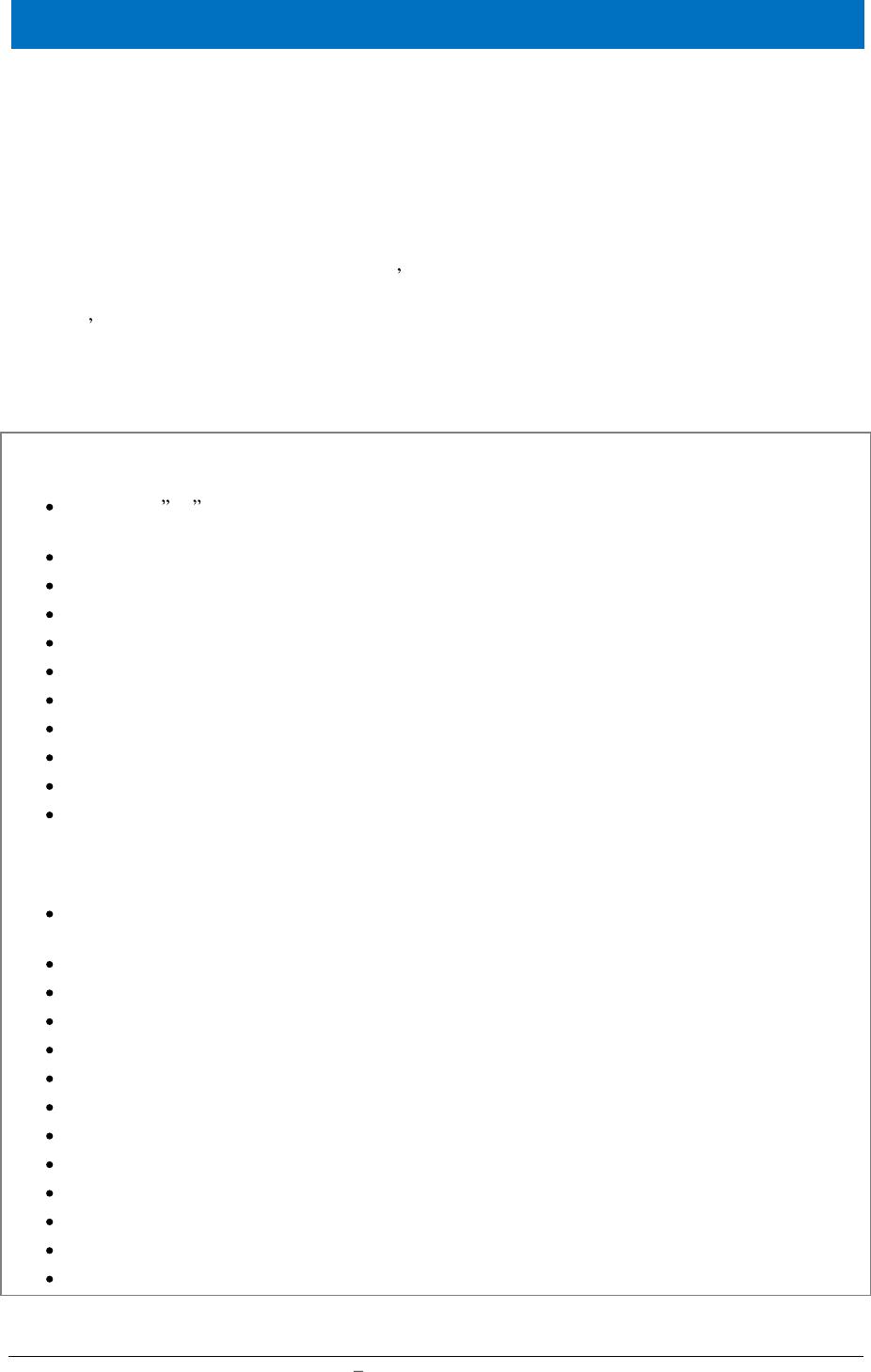
Mortgage Loan Minimum Standards Manual
June 2011
52
11.
MANAGEMENT INFORMATI
ON, IT & ACCOUNT MAN
AGEMENT
(MS 11)
MINIMUM STANDARDS
Information technology can play a vital role in helping a financial institution efficiently manage its mortgage
lending activities. A well thought out IT architecture can lead to substantial added benefits to an organisation.
At
the same time, choosing an appropriate m
ortgage
-related IT system and customising and integrating the system
into its operations can be among the most challenging tasks that a lender faces.
The use of appropriate IT tools can reduce a lender s costs in carrying out routine functions, can help en
sure that
loans are processed applying a consistent set of decision rules, and can contribute to internal controls by tying an
institution s mortgage program to other activities, such as accounting and treasury functions. IT systems can
also assist a lender in identifying how specific characteristics of its mortgages affect loan performance. This can
allow an institution to adjust its underwriting standards and pricing guidelines on an ongoing basis, to ensure
that its mortgage program continues to be profi
table.
i. Mortgage Accounting System: Comprehensive mortgage accounting system which would include the
following functions within guidelines of Credit Policy:
Ability to tag or identify mortgages as belonging to a particular funding source, cover pool or as
having been transferred to a particular SPV (special purpose vehicle)
Facility to use internal own bank standing orders and/or direct debits, if available
Facility to amend payments and to notify customers when rates change
Facility to switch from var
iable to fixed rate and vice a versa
Facility to accept lump sum reductions and/or early repayments
Facility to remove and/or add names to accounts
Management of account on death of a borrower
Facility to monitor and follow up arrears
Facility to carry out
regular or periodic annual reviews
Facility to provide statements to the customer
Systems must also have an adequate disaster recovery plan
ii. Reporting: Good reporting information which is accurate, timely and relevant. Monthly/quarterly/annual
report
s to be available by branch/area/total bank for:
Mortgage portfolio size/split by products (total value, total volume, average term, average interest rate,
average LTV, average PTI)
Share of national mortgages (where available)
Market segments
Portfolio sh
are by sales channel
Growth profile
Performance versus targets
Applications versus approvals versus declines versus drawdowns
Application pipeline
Delinquency
profile (split into 30, 60, 90 and 120 days)
Maturity profile
Geographic profile/employer profile
Profitability
Historic data retention

Mortgage Loan Minimum Standards Manual
June 2011
53
Ability to produce reports as required by rating agencies and investors* (
see Appendices A4 and A5
)
iii. Monitoring Mortgage Account: The following should be adhered to in order to ensure efficient monitoring
of ac
counts:
Approvals are converted into drawdowns
Security is in order before drawdown(s)
Repayments are up to date
Premiums on life insurance policies are up to date
Premiums on property insurance policies are up to date
Property insurance policies are index
linked, if available
Insurers report incidents of cancelled life and/ or property insurance policies
REASONS FOR BEST PRA
CTICES AND MINIMUM S
TANDARDS
Reporting and Monitoring:
The mortgage business cannot be successful unless there is regular analysis of the current portfolio
versus targets.
Remedial action may be required and it is important to know the baseline or starting point.
Rating agencies and investors require detailed reports on the lenders mortgage portfolio to rate and
to
buy mortgage bonds
or mortgage
-
backed securities.
POINT TO NOTE
1.
Mortgage Account Management:
The requirements for mortgage account management are fundamentally similar to all other lending products.
The objective is to manage and monitor the operation of the account and the relationship from drawdown to
redemption.
The accounting system should have the capability to accept debits/credits/permissions/judge accounts to be
in
arrears/issue arrears letters/calculate interest/ calculate penalty interest/provide a review
facili
ty/issue review
letters, and similar functions.
Repayments can be by cash, standing order or direct debit. Repayments should be made by the
monthly/weekly/fortnightly due date. This date should be agreed upon with the customer ideally to fit with
salary and wages payments. For efficiency the customer should have his current account with the lender.
Standing orders and direct debits should be encouraged with interbank arrangements in place for those borrowers
who hold their bank accounts elsewhere.
The system should accommodate changes in interest rates with the facility to switch between variable and fixed
rates, to amend repayments and to notify customers.
The system should be able to handle lump sum repayments and early repayments. Depending on policy and
legislation the facility should be able to calculate and charge early payment charges. Penalty charges such as
prepayment penalties would be the norm for breaking a mortgage contract but legislation in many markets may
prohibit this
.
The system and procedures should be able to add and remove names, rule off account at death or bankruptcy and
provide regular statements of account to customers. The accounting system will also have the capability to
identify or "tag" accounts, which are in a particular mortgag
e pool or have been
transferred to a specific SPV.

Mortgage Loan Minimum Standards Manual
June 2011
54
2.
IT Requirements:
There is a need for extensive IT functionality to
support
securitisation and mortgage bond issues. Requirements
for
performance metrics and analysis can be onerous if IT systems have not been developed to take into account
these requirements and can be
difficult and expensive to amend later on.
Segregation of mortgage assets between those either securitised, in a mortgage bond structure, used as
collateral
for Central Bank liquidity or in the lender portfolio means at a very minimum being
able to identify which assets
are in each structure.
Securitisation requires the cash flows of the underlying assets to be moved to a specific account and this has a
material effect on the underlying accounting arrangements and is problematic if not understood and built into
the systems.
The ability to generate meaningful historical analysis may mean tracking the performance of the
mortgages
over time and being able to explain redemption patterns; arrears; write offs and the like. In addition, integrated
customer records are now more of a requirement than before. Some jurisdictions allow for an implied set off of
deposit accounts against borrowings and these matters may
require analysis.
Backup and busin
ess continuity planning are high on the agenda for rating agencies. In addition how
technology
is employed in an organisation can be the difference between effective and efficient
processing.
One view of a modern bank is that information processing is now
a required competency. It is clear that
modern IT
investment facilitates the gathering of large volumes of data that can allow it to be analysed in a structured
manner. The more integrated the IT systems are the lower costs an organisation can have in its dealings with
customers to make them effective and profitable.
When assets are being placed in bond
structures
, investors will require information on the underlying mortgages
when they decide to buy bonds. The rating agencies perform
static pool analysis"
and need to review the history
of the underlying
mortgages.
3.
Reporting and Monitoring
Good, accurate, timely and relevant information is a critical enabler to success in any business.
Reports should be available at summary level for the Board, CEO and
Senior Management with the
facility to 'drill
down' into more detailed levels. The reporting schedule (depending on the specific need) will be issued
monthly, quarterly, semi-annually and annually. Depending on organisation structure the reports will be
av
ailable by branch, region, area and total bank.
It is important that historical information is retained at all levels including individual account performance as
rating agencies will wish to examine the lender s 'track record'.
Business performance reports
will cover:
Share of new business
volume and
percent
of growth
Share of national mortgage portfolio
-
volume
percent
of growth
Growth versus national mortgage portfolio
-
% split by market segments
-
volumes %
Split by sales channels
-
volumes %
Perfor
mance versus budget + forecasts
%
Volume of drawdowns versus applications and approvals
Number + % declines versus applications
Leakage to competitors
Pipeline analysis
Profitability
-
total/by product/by segment.

Mortgage Loan Minimum Standards Manual
June 2011
55
Maturity/employer and geographic profiles
Monitoring reports will cover:
Performance and review of individual accounts (discussed earlier)
Arrears/bad debt reports and profile
Premiums on life and
property insurance policies
whether they are up to date
Property policies indexed
Incidents of canc
elled policies reported by insurers
Rating agency and reporting requirements would include the following information:
Payment under notes transaction balances
Details of arrears
Pool indicator
s
and a summary by product of loan to value ratios
Mortgage pri
ncipal analysis and run off
Mortgage size
Geographic diversification
Arrears multiple
Seasoning
Interest rates including WAY and WAM (weighted average yield and maturity)
(
Please see Appendices A4 and A5 for a sample new issue reports for RMBS and Covered
Bond issues)
4.
Accounting Methods
There is a basic principle that a fair presentation is achieved if financial statements are prepared in compliance
with International Financial Reporting Standards (IFRS). An entity whose financial statements comply wit
h
IFRS should disclose that fact. This manual has not considered the detailed implications of either adopting IFRS
or the likely changes that are currently being debated particularly surrounding derivatives and financial
instruments.
WHAT INVESTORS AND R
AT
ING AGENCY MAY REQUI
RE
The rating agencies review the following IT systems and processes when assessing mortgage originators and
servicers:
Core systems functionality
Systems integration and interfaces
Electronic document storage with scanning and workflow
management
System security including backup and
record retention
Disaster recovery and business resumption plans/testing
Data integrity
Use of automated loan application, processing and underwriting systems
Web
-
based applications
Credit scoring
Risk manag
ement modelling
Automated valuation models
Integration of these systems as well as other business lines
Key information requirements include:
Accurate geographic location

Mortgage Loan Minimum Standards Manual
June 2011
56
Customer history on mortgage, and for example, additional equity withdrawal
Accurate
recording of the borrower s financial position
Details on property usage such as owner occupied or rented out
Type of mortgage product
Loan to value ratio (LTV) and PTI
Original valuation and most up to date valuation
FURTHER READING
Refer to
Appendices
A3, A4, and A5 on Understanding Securitisation and examples of recent Residential
Mortgage
-
Backed Securities and Covered Mortgage Bond issues.

Mortgage Loan Minimum Standards Manual
June 2011
57
APPENDICES

Mortgage Loan Minimum Standards Manual
June 2011
58
A1.
LOAN APPLICATION FORM
I. TYPE OF MORTGAGE AND TERMS OF LOAN
Amount
Interest Rate
%
No. of Months
Amorti
s
ation
Type:
Fixed Rate
GPM
Other (explain):
ARM (type):
II. PROPERTY INFORMATION AND PURPO
SE OF LOAN
Subject Property Address (street, city, province)
No. of Units
Legal Description of Subject Property (attach description if necessary)
Year Built
Purpose of Loan
Purchase
Refinance
Construction
Other (explain):
Property will be:
Primary Residence
Secondary Residence
Investmen
t
Complete this line if construction loan.
Year Lot
Acquired
Original Cost
Amount
Existing Liens
(a) Present
Value of Lot
(b) Cost of
Improvements
Total (
a + b)
Complete this line if this is a refinance loan.
Year Acquired
Original Cost
Amount
Existing Liens
Purpose of
Refinance
Describe
made
to be made
Improvements
If to
be made,
make comments
on supplemental
pages
Title will be held in what Name(s)
Manner in which Title will be held
Estate will be
held in:
Fee Simple
Leasehold
(show
expiration date)
Source of Down Payment, Settlement Charges, and/or Subordinate Financing (explain)

Mortgage Loan Minimum Standards Manual
June 2011
59
III. BORROWER INFORMATION
Borrower
Co
-
Borrower
Borrower s Name
Co
-Borrower s Name
ID number
Phone
number
Dat
e of
Birth
Yrs.
School
ID number
Phone
number
Date of
Birth
Yrs.
School
Married
Separated
Dependents
(not listed by Co
-
Borrower)
Married
Separated
Dependents
(n
ot listed by
Borrower)
Unmarried
(include single, divorced,
widowed)
no.
ages
Unmarried
(include single, divorced, widowed)
no.
ages
Present Address
Own
Rent
__No.
Yrs.
(street, city, province)
Present Address
Own
Rent
__
No.
Yrs.
(street, city, province)
Mailing Address, if different from Present Address
Mailing Address, if different
from Present Address
If residing at present address for less than two years, complete the following:
Former Address
Own
Rent
__No.
Yrs.
(street, city, province)
Former Address
Own
Rent
__
No.
Yrs.
(street, city, province)

Mortgage Loan Minimum Standards Manual
June 2011
60
IV. EMPLOYMENT INFORMATION
Borrower
Co
-
Borrower
Name & Address
of Employer
Self
Employed
Yrs. on this
job
Name &
Address of
Employer
Self
Employed
Yrs. on this job
Yrs. employed
in this line of
work /
profession
Yrs. employed
in this line of
work /
profession
Position/Title/Type
of Business
Business
Phone
Position/Title/
Type of
Business
Business Phone
If employed in
current position for less than two years or if currently employed in more than one position,
complete the following:
Name & Address
of Employer
Self
Employed
Dates
(from
to)
Name &
Address of
Employer
Self
Employ
ed
Dates
(from
to)
Monthly
Income
Monthly
Income
Position/Title/Type
of Business
Business
Phone
Position/Title/
Type of
Business
Business Phone
Name & Address
of Employer
Self
Employ
ed
Dates
(from
to)
Name &
Address
of
Employer
Self
Employed
Dates
(from
to)
Monthly
Income
Monthly
Income
Position/Title/Type
of Business
Business
Phone
Position/Title/
Type of
Business
Business Phone

Mortgage Loan Minimum Standards Manual
June 2011
61
V. MONTHLY INCOME AND COMBINED HOUSING EXPENSE I
NFORMATION
Gross
Monthly
Income
Borrower
Co
-
Borrower
Total
Combined
Monthly
Housing Expense
Present
Proposed
Base Empl.
Income*
Rent
Overtime
First Mortgage
(P&I)
Bonuses
Other Financing
(P&I)
Commissions
Hazard Insurance
Div
idends/
Interest
Real Estate Taxes
Net Rental
Income
Mortgage Insurance
Other
(before
completing, see
the notice in
describe other
income, below)
Homeowner Assn.
Dues
Other:
Total
Total
Expected Monthly Income
Jan
Feb
Mar
Apr
Mar
Jun
Jul
Aug
Sep
Oct
Nov
Dec
Self
-
Employed Borrower(s) may be required to provide additional documentation such as tax returns and
financial statements.
Other Income
Monthly Amount
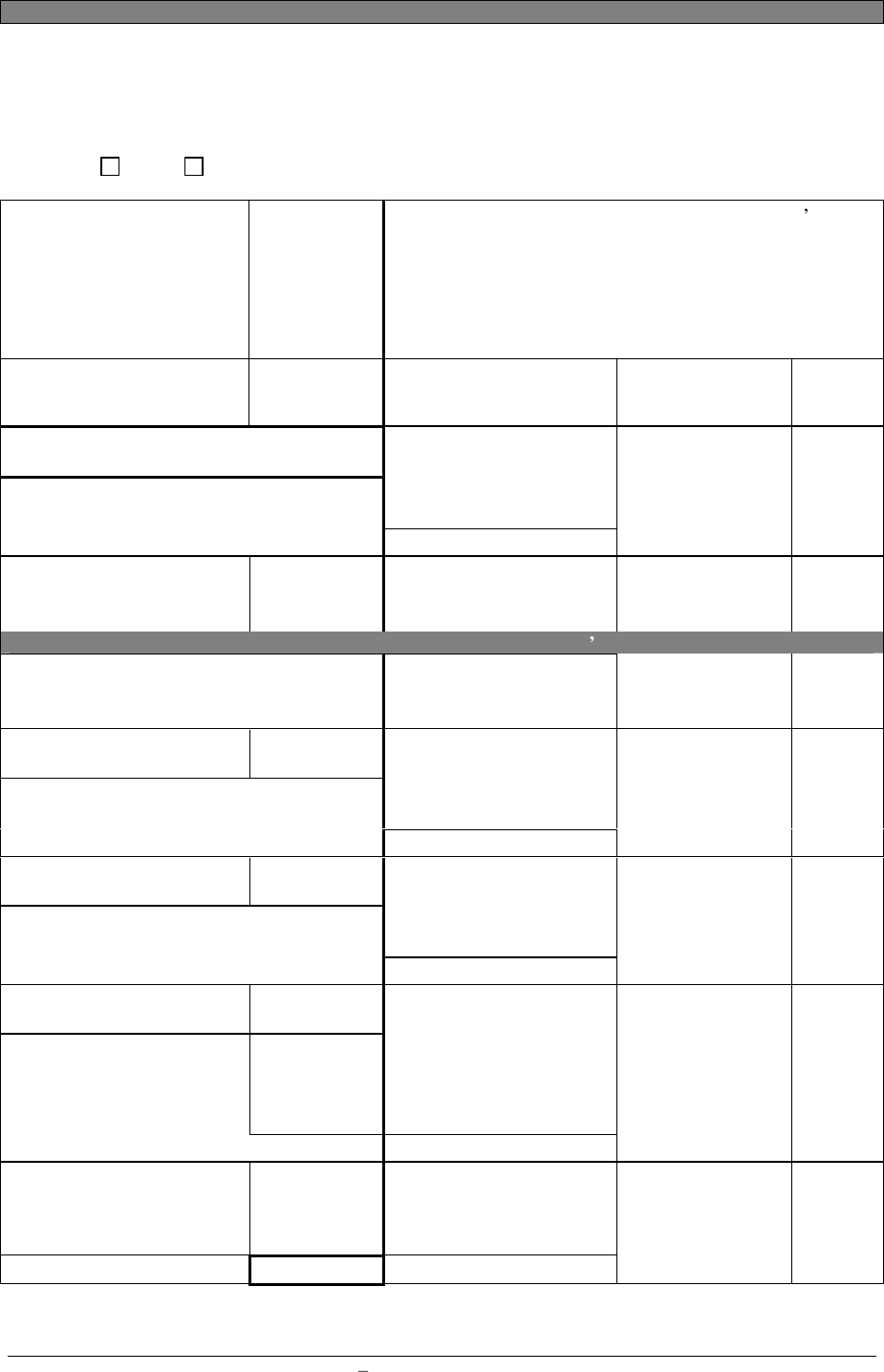
Mortgage Loan Minimum Standards Manual
June 2011
62
VI. ASSETS AND LIABILITIES
This Statement and any applicable supporting schedules may be completed jointly by both married and
unmarried Co-Borrowers if their assets and liabilities are sufficiently joined so that the Statement can be
meaningfully and fairly presented on a combined basis; otherwise, separate Statements and Schedules are
required. If the Co-Borrower section was completed about a non-applicant spouse or other person, this
Statement and supporting schedules must be completed about that spouse or other person also.
Comp
leted
Jointly
Not Jointly
ASSETS
Description
Cash or
Market
Value
Liabilities and Pledged Assets. List the creditor s name,
address, and account number for all outstanding debts,
including automobile loans, revolving charge accounts, real
estate loans, alimony, child support, stock pledges, etc. Use
continuation sheet, if necessary. Indicate by (*) those
liabilities, which will be satisfied upon sale of real estate
owned or upon refinancing of the subject property.
Cas
h deposit toward
purchase held by:
LIABILITIES
Monthly Payment
& Months Left to
Pay
Unpaid
Balance
List checking and savings accounts below
Name and address of
Company
Payment/Months
Name and address of Bank, S&L, or Credit
Union
Acct. no.
A
cct. no.
Name and address of
Company
Payment/Months
VI. ASSETS AND LIABILITIES (cont d)
Name and address of Bank, S&L, or Credit
Union
Acct. no.
Acct. no.
Name and address of
Company
Payment/Months
Name and address of Bank, S&L, or Cre
dit
Union
Acct. no.
Acct. no.
Name and address of
Company
Payment/Months
Name and address of Bank, S&L, or Credit
Union
Acct. no.
Acct. no.
Name and address of
Company
Payment/Months
Stocks & Bonds (Company
name/number & description)
Acct. no.
Life insurance net cash value
Name and address of
Company
Payment/Months
Face amount:
Subtotal Liquid Assets
Acct. no.

Mortgage Loan Minimum Standards Manual
June 2011
63
Real estate owned
(enter market value from
schedule of real estate
owned)
Alimony/Child
Support/Separ
ate
Maintenance Payments
Owned to:
Vested interest in retirement
fund
Net worth of business(es)
owned
(attach financial statement)
Job
-
Related Expense
(child care, union dues,
etc.)
Automobiles owned
(make and year)
Other Assets (itemi
se)
Total Monthly Payments
Total Assets
a.
Net Worth
(a minus b)
Total Liabilities
b.
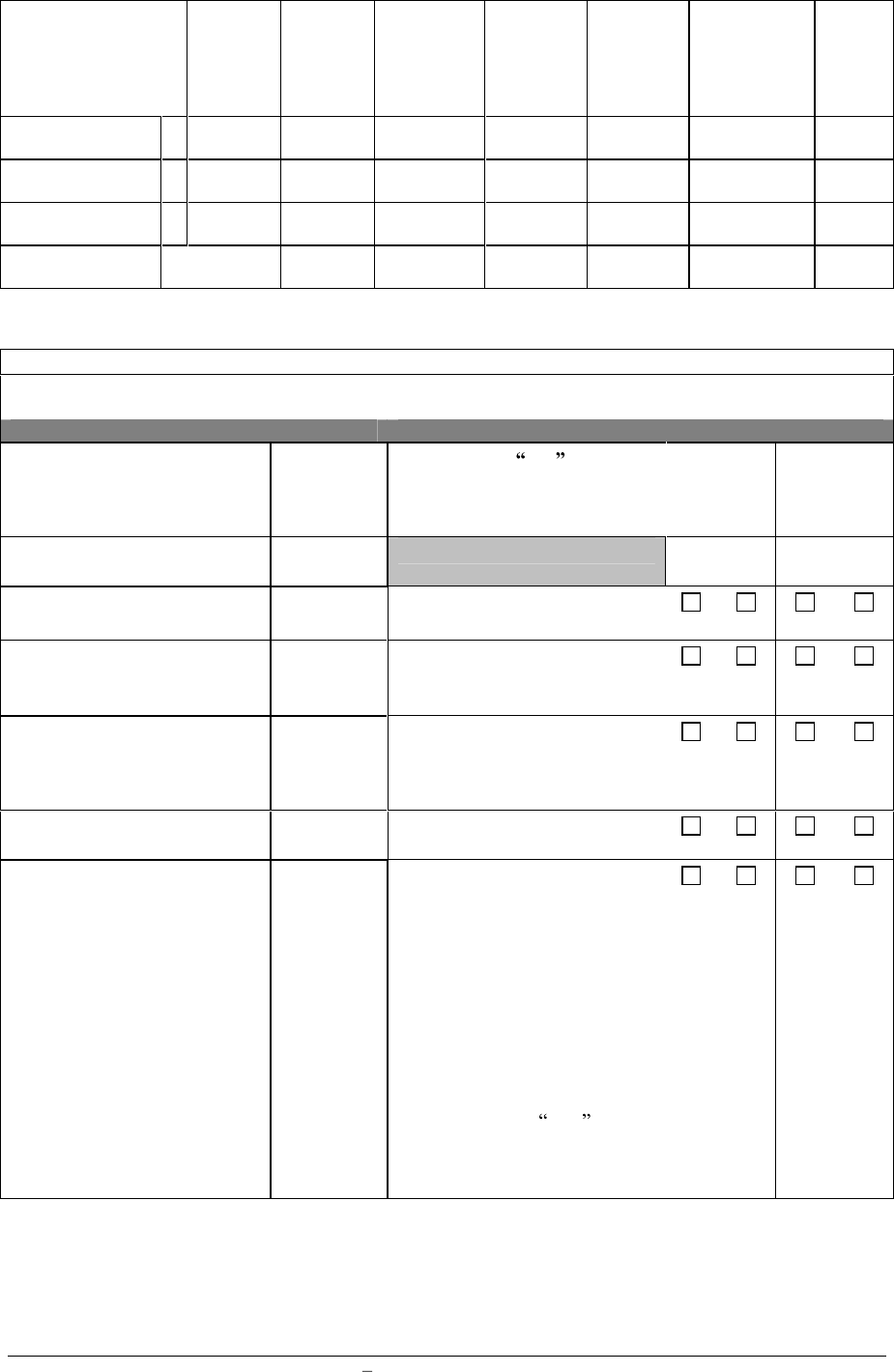
Mortgage Loan Minimum Standards Manual
June 2011
64
Schedule of Real Estate Owned
(If additional properties are owned, use continuation sheet.)
Property Address
(enter S if sold, PS if
pend
ing sale or R if
rental being held for
income)
Type of
Property
Present
Market
Value
Amount
of
Mortgages
& Liens
Gross
Rental
Income
Mortgage
Payments
Insurance,
Maintenance,
Taxes &
Misc.
Net
Rental
Income
Totals
Lis
t any additional names under which credit has previously been received and indicate appropriate
creditor name(s) and account number(s):
Alternate Name
Creditor Name
Account Number
VII. DETAILS OF TRANSACTION
VIII. DECLARATIONS
a.
Purchase price
If
you answer Yes to any
questions a through i, please
use continuation sheet for
explanation.
Borrower
Co
-
Borrower
b.
Alterations,
improvements, repairs
Yes
No
Yes
No
c.
Land
(if acquired separately)
a.
Are there any outstanding
judgments against you?
d.
Refinance
(incl. debts to be paid
off)
b.
Have you been declared
bankrupt within the past 7 years?
e.
Estima
ted prepaid items
c.
Have you had property
foreclosed upon or given title or
deed in lieu thereof in the last 7
years?
f.
Estimated closing costs
d.
Are you a party to a
lawsuit?
g.
PMI, MIP, Funding Fee
e.
Have you directly or
indirectly been
obligated on
any loan of which resulted in
foreclosure, transfer of title in
lieu of foreclosure, or judgment?
(This includes
such loans as
mortgage loans, small business
loans, home improvement loans,
educational loans, any mortgage,
financial obligation, bond, or
loan guarantee. If Yes, provide
details, including date, name,
and address of lender and
reasons for the action.)

Mortgage Loan Minimum Standards Manual
June 2011
65
h.
Discount
(if Borrower will pay)
f.
Are you presently
delinquent or in default on any
debt or any other loan, mortgage,
financial obligation, bond, or
loan guarantee?
If Yes, give
details as
described in the preceding
question.
i.
Total costs
(add items a through h)
g.
Are you obligated to pay
alimony, child support, or
separate maintenance?
j.
Subordinate financing
h.
Is any part of the down
payment borrowed?
k.
Borrower s closing costs
paid by Seller
i.
Are you a co
-
maker
or
endorser on a note?
l.
Other credits (explain)
---------------------------------------
----------------
j.
Are you a citizen of this
country?
k.
Are you a permanent
resident alien?
m.
Loan amount (exclude
PMI, MIP, Funding Fee
financed)
l.
Do you intend to occupy
the property as your p
rimary
residence?
If Yes, complete question
m below.
n.
PMI, MIP, Funding Fee
financed
m.
Have you had an ownership
interest in a property in the last
three years?
o.
Loan amount
(add m & n)
(1) What type of property
did you
own
principal
residence (PR), second
home
(SH), or investment property
(IP)?
p.
Cash from/to Borrower
(subtract j, k, l & o from
i)
(2) How did you hold title to
the home
by yourself (S),
jointly with your spouse or
jointly with another person (O)?

Mortgage Loan Minimum Standards Manual
June 2011
66
ACKNOWLEDGMENT AND AGREEMENT
Each of the undersigned specifically represents to Lender and to Lender's actual or potential agents, brokers,
processors, attorneys, insurers, servicers, successors and assigns and agrees and acknowledges that: (1) the
information provided in this application is true and correct as of the date set forth opposite my signature and that
any intentional or negligent misrepresentation of this information contained in this application may result in
civil liability, including monetary damages, to any person who may suffer any loss due to reliance upon any
misrepresentation that I have made on this application, and/or in criminal penalties including, but not limited to,
fine or imprisonment or both; (2) the loan requested pursuant to this application (the "Loan") will be secured by
a mortgage or deed of trust on the property described in this application; (3) the property will not be used for
any illegal or prohibited purpose or use; (4) all statements made in this application are made for the purpose of
obtaining a residential mortgage loan; (5) the property will be occupied as indicated in this application; (6) the
Lender, its servicers, successors or assigns may retain the original and/or an electronic record of this application,
whether or not the Loan is approved; (7) the Lender and its agents, brokers, insurers, servicers, successors, and
assigns may continuously rely on the information contained in the application, and I am obligated to amend
and/or supplement the information provided in this application if any of the material facts that I have
represented should change prior to closing of the Loan; (8) in the event that my payments on the Loan become
delinquent, the Lender, its servicers, successors or assigns may, in addition to any other rights and remedies that
it may have relating to such delinquency, report my name and account information to one or more consumer
reporting agencies; (9) ownership of the Loan and/or administration of the Loan account may be transferred
with such notice as may be required by law; (10) neither Lender nor its agents, brokers, insurers, servicers,
successors or assigns has made any representation or warranty, express or implied, to me regarding the property
or the condition or value of the property; and (11) my transmission of this application as an "electronic record"
containing my "electronic signature," as those terms are defined in applicable federal and/or state laws
(excluding audio and video recordings), or my facsimile transmission of this application containing a facsimile
of my signature, shall be as effective, enforceable and valid as if a paper version of this application were
delivered containing my original written signature.
Acknowledgement
. Each of the undersigned hereby acknowledges that any owner of the Loan, its servicers,
successors and assigns, may verify or re-verify any information contained in this application or obtain any
information or data relating to the Loan, for any legitimate business purpose through any source, including a
source named in this application or a consumer reporting agency.
Borrower s Signature
X
Date
Co
-Borrower s Signature
X
Da
te

Mortgage Loan Minimum Standards Manual
June 2011
67
CONTINUATION SHEET/RESIDENTIAL LOAN APPLICATION
Use this continuation sheet if you
need more space to complete the
Residential Loan Application.
Mark
B
for Borrower or
C for
Co
-
Borrower.
Borrower:
Case Number:
Co
-
Borrower:
Case Number:
Borrower s Signature
X
Date
Co
-Borrower s Signature
X
Date

Mortgage Loan Minimum Standards Manual
June 2011
68
A2.
LOAN APPROVAL OFFER LETTER
[FINANCIAL INSTITUTION]
[
January 15, 2011
]
[
Mr.
Client Name
1234
Road
District, City
]
Dear Mr.
Name
,
We have received your
mortgage
loan application dated January 2, 2011. We are pleased to inform you that
your application has been approved subject to verification of specific information provided by you and by your
acceptance of the terms of this letter. The loan will be secured by a single family home located at 5678 Street in
District, City. Please read this letter carefully.
Loan Amount: 200,000
Interest Rate: 11.25%
Annual Effective Yield: 12.25%
Type of Interest Rate: (Fixed or Variable)
Term of Loan: 240 months
Amortisation: 20 years (or 20 ye
ars with a 10 year call)
Payment Due Date: 1
st
of each month
Conditions Prior to Final Approval: Borrower shall provide for Lenders review and Approval:
Points
4.0% upon funding
Other Fees:
375.00 document preparation
375.00 processing
50.00 inspec
tion fee
Conditions Prior to Approval
:
1)
Borrower shall provide for Lenders review and approval an appraisal of the subject property not more than
sixty (60) days old and shall be addressed to Lender herein.
2)
Lender will inspect the property within 5 busi
ness days after acceptance of this letter.
3)
Borrower will provide a current financial statement and statement of income and expenses for the past 12
months.
Conditions Prior to Preparation of Loan Documents:
4)
The lien created herein shall be a valid first lien position. Any subordinate financing shall require the written
consent of Lender.
5)
The loan will be serviced by ABC Bank. Any set up fee and other service fee(s) shall be paid by Borrower
upon the terms and conditions set forth by Servicing Agent.

Mortgage Loan Minimum Standards Manual
June 2011
69
6)
B
orrower shall provide for general public liability insurance with Lender as an additional insured in the
cumulative principal amount of the loan(s), which shall be kept in force for the term of the loan.
7)
The loan(s) shall have a prepayment penalty equal to three months interest, if the loan or loans are paid in
full prior to three months from the first payment date. A penalty shall not b
e due for a partial prepayment.
Conditions Prior to Loan Closing:
Acceptance of Terms
:
8)
The terms and conditions herein are subject to change after Lender has reviewed any and all information
supplied by Borrower or obtained by independent sources.
9)
This letter must be accepted on or before
XXXXXX
, after which Lender may withdraw this offer without
notice.
In order to process the loan offer, you will need to schedule an appointment with one of our lending specialists
at any of our convenient ABC Bank branch offices.
Sincerely,
[
John Doe
Senior Lending Specialist
]

Mortgage Loan Minimum Standards Manual
June 2011
70
A3.
U
NDERSTANDING SECURITISATION
INTRODUCTION
This appendix is included to provide information and background on the secondary markets for those who may
not be familiar with those markets.
RESIDENTIAL MORTGAGE
-
BACKED SECURITIES (R
MBS)
Securitisation is a process whereby assets with a series of cash flows can be sold either by a true sale or a
synthetic structure by the owner of the assets to a special purpose vehicle whereby a bond can be issued backed
specifically by those assets. Securitisation transactions are "off-balance sheet" which means that the originat
ing
bank has essentially no further responsibility for the performance of the mortgages once they are sold into the
SPV.
RMBS are often rated by rating agencies and are priced relative to their risk. In effect they differ from corporate
bonds as they are backed by specific assets that are bankruptcy remote from the originator. Once the bond
interest and the capital get repaid, the excess economic benefits get transferred back to the original owner or
'originator' by way of profit extraction techniques. For the purposes of this manual we are interested in only one
asset class, namely residential mortgages. What is meant by residential mortgages is any lending where the
security is a private residence. It includes lending to acquire, develop or repair the residence or other lending
secured on the residence.
In the case of residential mortgages the asset is the outstanding loan. The borrower is contractually committed
to a series of regular payments which include principal and interest. The mortgage is secured on the residence,
and may be acquired by the lender if the borrower defaults. When these loans are 'on balance sheet' then the
lender is carrying all the risks and (rewards) of ownership. Some of the risks would be credit risk, interest rate
risk and liquid
ity risk.
Residential mortgage-backed securitisation is a funding tool where the bank sells the mortgage with the
underlying security to a "special purpose vehicle" (SPV), which is not owned by the bank. The mortgages are
usually
- but not always - sold at par. The SPV contains only mortgage assets. A bond is created, backed
specifically by these mortgages called "residential mortgage
-
backed securities" (RMBS) and is sold to investors.
The sale of these mortgages allows the bank to transfer a series of risks such as credit and interest rate risk to
third party investors. These assets are attractive to investors because defaults on residential mortgages are very
low and the longer maturity matches their liabilities.
In essence RMBS are generally regarded as b
onds that can command a high rating. Most RMBS in Europe have
a significant amount of the deal rated "AAA" which from an investor s standpoint is a top grade security. The
RMBS assets are less risky than the general risk of the originator itself. Securitis
ation allows the bonds to hold a
rating that is often many levels above the rating of the originator itself. With the lower risk of RMBS, the
required return is lower and it is advantageous for a lender to securitise its mortgages rather than issue a
corpo
rate bond.
Most RMBS are rated by a combination of Moody s, Standard & Poor s or Fitch Ratings. Based on the basis of
the rating and subsequent demand by investors the bonds are "priced" in the market. As there are many of these
transactions RMBS are now w
ell understood by investors, but individual securitisations are priced depending on
a number of factors.
Let us assume an example where the RMBS are priced at 3Month Euribor + 50 basis points. When the
prospective investors buy the bonds the net proceeds are paid back to the bank that originated the mortgages.
The cash flows of the mortgages are then paid into the SPV including both interest and principal. The
bondholders are paid interest on the basis of 3 M Euribor +50 basis points as well as any principa
l that has been
paid on the underlying mortgages.
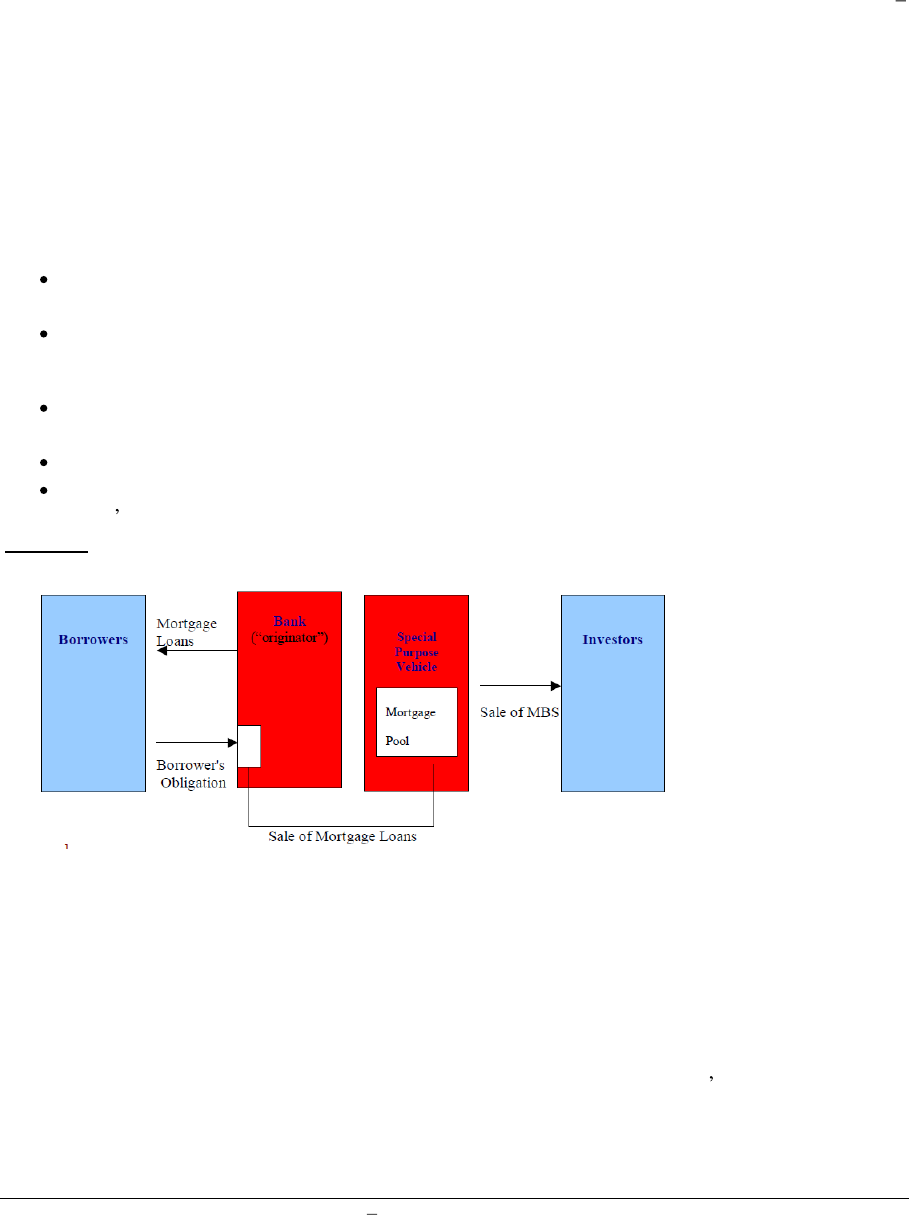
Mortgage Loan Minimum Standards Manual
June 2011
71
In our example, the interest rate charged to borrowers on the mortgages is 3Month Euribor + 120 basis points.
The difference between the bond rate and the mortgage rate is 70 basis points and this excess spread is used to
pay for servicing (generally by the originating bank), credit enhancement and other expenses of the structure.
Any additional funds remaining at the conclusion of the deal is usually extracted for the issuer. The bondholders
are only entitl
ed to the principal and interest payments described above.
Until recently, RMBS have been the most common form of secondary market refinancing tool used in the U.S.
In 2010 the volume of mortgage related securities was $2.36 trillion, which was 22% of the $10.55 trillion
residential mortgage market (1-4 family homes). This is down from a historical level of approximately 60% due
to the restructuring of the GSEs after the financial crisis (Board of Governors of the Federal Reserve System
Mortgage Debt Outstanding). The U.S. market is dominated by three agencies: Fannie Mae (formerly the
Federal National Mortgage Association), Freddie Mac (formerly the Federal Home Loan Association) and the
Government National Mortgage Association (more commonly known as Gin
nie Mae). Each of the agencies was
established as government-sponsored enterprise (GSE) by United States Federal Law to help combat shortfalls
in the US housing market. Ginnie Mae has the full faith and credit guarantee of the U.S. government; Fannie
Mae a
nd Freddie Mac do not.
Extensive legislation may not be needed to facilitate securitisation structures. The most important framework
needed by an originator would be:
the ability to create a 'special purpose vehicle' which is bankruptcy remote from the originator and is
not a subsidiary; and
the ability to transfer assets usually in a tax neutral way to the originator.
The main benefits of RMBS as a funding tool are:
Diversifying the sources of financing. RMBS is an effective method of financing mortgage growth as
against a single traditional source such as core deposits.
Reducing risk. RMBS transfers credit, interest and maturity risk from the originator to the investor.
To help capital adequacy ratios. Certain financing tools such as securitisation can remove assets from a
bank s balance sheet and thus free up capital if it was inadequate.
Exhibit 1
below maps the processes involved in mortgage
-
backed securities
Source: European Mortgage Federation: "Mortgage Banks & Mortgage Bond in Europe" Figure 3
MOR
TGAGE BONDS
Mortgage bonds are generally an 'on balance sheet' method of financing mortgages. The security for the
bondholders is the collective pool of qualifying mortgage assets. For example if there were two bond issues,
specific mortgages would not be identified with a specific bond issue. In effect the bond issues share the pool.
To make the mortgage bonds distinct from corporates, specific legislation is needed in a jurisdiction permitting
them to be issued. The reason is that the security for the bon
ds is that part of the entities assets will not be made
available to general creditors in a 'bankruptcy' or wind up situation. Mortgage bonds are also known as 'covered
bonds' for this reason. In Germany, mortgage bonds or 'Pfandbriefe' have a long track record without defaults.

Mortgage Loan Minimum Standards Manual
June 2011
72
Often jurisdictions that have introduced 'mortgage bonds' have used similar structures to those applied in the
German or Danish markets.
Often the legal issuer of the mortgage bond may be a 'mortgage bank' which could be a subsidiary of the main
bank. This structure is used to place the interests of the bondholders above those of depositors in case of
bankruptcy or distress. The qualifying assets of a mortgage bond are typically residential mortgages but may
also include commercial mortgages, government or agency debt or other high quality assets. Many of these
structural issues are addressed in enabling legislation or Central Bank/Securities Commission regulations.
Mortgage bonds are the most important funding instruments for mortga
ge lenders in Europe after retail deposits.
Against a backdrop of ongoing turbulence in capital markets, the covered bond market continued to expand: in
2009, total outstanding covered bonds grew 5% to 2.4 trillion, of which 1.6 trillion are mortgage cov
ered
bonds. The covered bond is also expanding outside Europe. South Korea entered the covered bond market in
2009. Ukraine exited the market in 2010, after the last outstanding covered bond was repaid in March. Markets
inside and outside Europe are currently conducting a feasibility study into the merits of the product as a funding
instrument for lenders. In jurisdictions, such as Australia, Belgium, Canada, Cyprus, Japan, Mexico, New
Zealand, Romania, South Korea, and the US, working groups are lobbying for dedicated covered bond
legislation. The legislative procedures are at different stages in each country.
Mortgage bonds are issued on the strength of the mortgages issued by the originator. The bonds are supported
by a collective pool of mortgages. Mortgage bonds are "on-balance sheet and the originating bank continues to
have responsibility for the performance of the mortgage even though it is now assigned to the mortgage pool.
The bondholder receives interest usually on a fixed rate basis (a small percentage of are floating rate) and the
bonds are redeemed on the basis of the bond agreement rather than in line with the pool of mortgages. For
example 'bullet redemptions' on these structures is prevalent. This contrasts with RMBS where the redemption
of t
he bonds parallels the principal payments on the mortgages.
The protected structure of a mortgage bond results in the bonds being priced lower than corporate bonds issued
by the organisation. Mortgage bonds also are generally priced at a lower spread than RMBS. A significant
reason for this is the level of over collateralisation that typically exists in a mortgage bond structure. Usually
loan to value ratios are lower and are substantially less than the mortgage s 'market value'.
The main benefits of mortgage bonds as a funding tool are:
Diversifying the sources of financing. Mortgage bonds are an effective method of financing mortgage
growth compared to a single traditional source such as core deposits;
Closer matching of maturity profiles of the underlying
assets with the liabilities financing them; and
Improving capital adequacy ratios. Certain financing tools such as mortgage bonds can have attractive
regulatory treatment.
Exhibit 2 below charts the process of mortgage bonds.

Mortgage Loan Minimum Standards Manual
June 2011
73
Exhibit 2
Mortgage Bond P
rocess
1
Source: European Mortgage Federation: "Mortgage Banks & Mortgage Bond in Europe" Figure 1
To further understand the two processes a comparative chart is shown in Table I in below.
Table I Main characteristics of covered bonds and asset
-
backed se
curities1)
Covered bonds
Asset
-
backed securities
Motivation of issuer
Refinancing
Risk reduction, regulatory
arbitrage, refinancing*
Issuer
Generally originator of loans
Special entity
Recourse to originator
Yes
Generally no
Structure
Assets generally remain on balance
sheet but are identified as
belonging to cover pool
Assets are transferred to special
entity
Impact on issuer s capital
requirements
None
Reduction
Legal restrictions on issuer or
eligible collateral
Yes (if issued under covered bon
d
legislation)
Generally none
Management of asset pool
Generally dynamic
Predominantly static
Transparency of asset pool to
investors
Limited (but quality regularly
controlled by trustees or rating
agencies)
Limited
Prepayment of assets
No pass
-
through
as assets are
replaced
Generally full pass
-
through
Tranching
None
Common
Coupon
Predominantly fixed
Predominantly floating
Source: Packer, F., R. Stever and C. Upper, (2007), The covered bond market , BIS Quarterly Review,
September.
* Under cert
ain conditions, entities might have incentives to issue ABSs with the
sole
purpose of obtaining
liquidity, as has happened in Spain during the last few years. A special regulatory framework combined with the
low cost of securitisation compared with other s
ources of financing has made Spanish banks a major issuer of
ABSs in Europe (second to the United Kingdom). Where this is the case, the frontier between ABSs and
covered bonds blurs, as both instruments are used solely to raise funds.
WHY DO EITHER?
Second
ary market activities allow the mortgage lender to access the capital markets and diversify its funding

Mortgage Loan Minimum Standards Manual
June 2011
74
sources. If the lender s existing cost of funds is expensive or does not match the long term profile of its
mortgage loans then the organisation could consider either securitisation or mortgage bonds for raising capital.
Using either of these two mechanisms will require considerable time and effort to put in place. The costs
associated with a first deal are considerable and senior management should consider a program of ongoing
issuance to amortise these expenses.
FURTHER READING
Refer to:
Appendices
A4 and A5
for examples of recent Residential Mortgage
-
Backed Securities and Covered Mortgage
Bond issues.
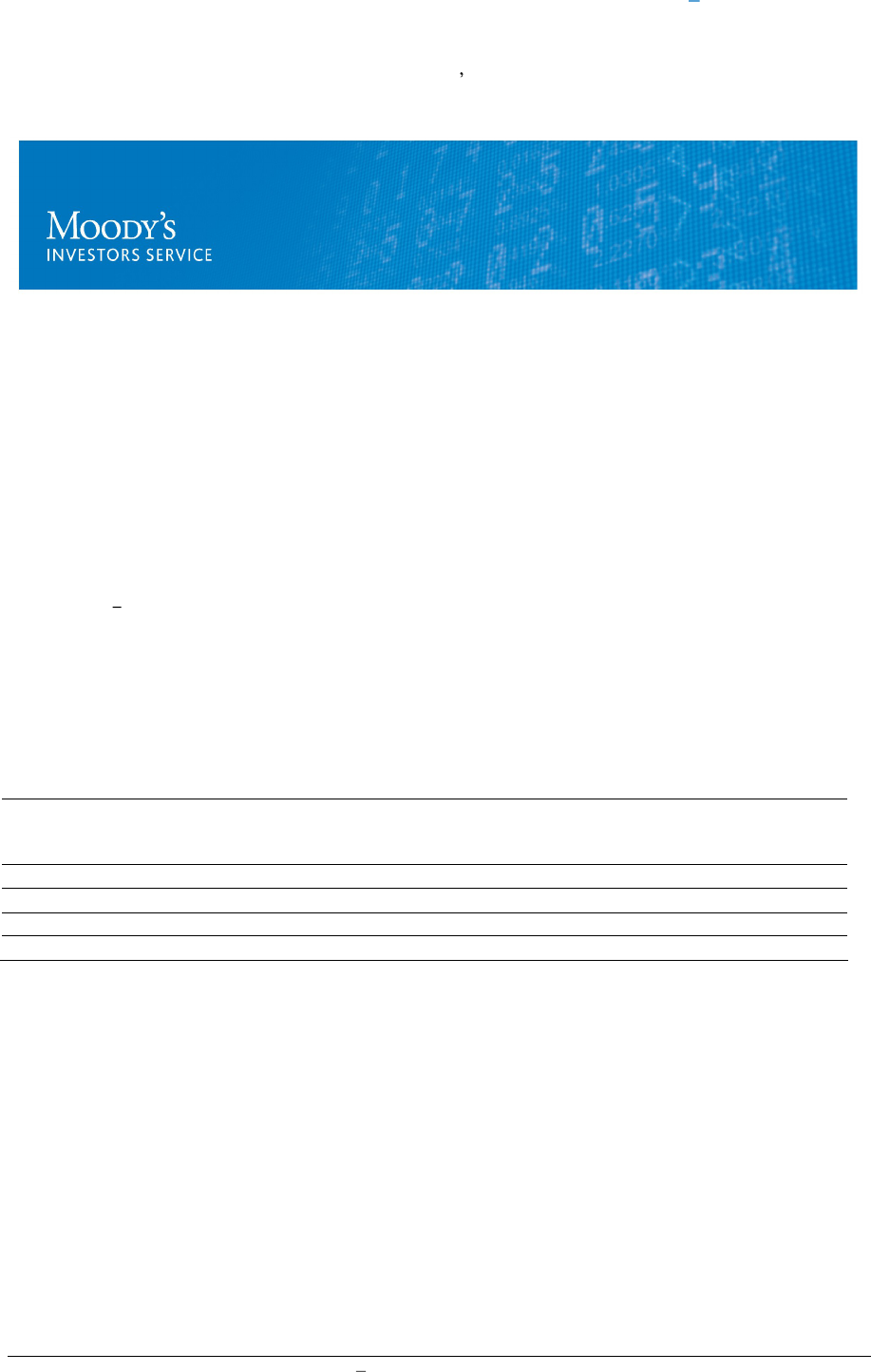
Mortgage Loan Minimum Standards Manual
June 2011
75
A4.
INVESTOR / RATING AGENCY SAMPLE REPORT
RESIDENTI
AL
MORTGAGE
-
BACKED SECURITY
This appendix cont
ains
extracts from the following Moody s new issue report. For the entire report see
www.moodys.com.
NEW ISSUE REPORT
Closed Joint Stock Company Mortgage
Agent of AHML 2010-1
RMBS/Prime/Russia
Closing Date
June 15, 2010
Analyst Contacts
Olga Gekht
Vice President Senior Analyst
44.20.7772.8675
Stanislav Nastassine
Analyst
49.69.70730.767
Definitive Ratings
SERIES
RATING
AMOUNT
(BILLION)
% OF
ASSETS
L
EGAL FINAL
MATURITY
COUPON
SUBORDI
-
NATION
RESERVE
FUND**
TOTAL
CREDIT
ENHANCE
-
MENT***
A1
Baa1
RUB 6.096
45.00
Nov 2042
9%
10%
0.7%
10.7%
A2
Baa3
RUB 6.096
45.00
Nov 2042
6.5%
10%
0.7%
10.7%
B
NR
RUB 1.355
10.00
Nov 2042
N/A
0%
0.7%
0.7%
Total
RUB 1
3.5
100.00
* At close
** As a % of total/ notes at close
*** No benefit attributed to excess spread
The subject transaction is a static cash securitisation of mortgage loans extended to obligors located in
Russia. The portfolio consists of m
ortgage loans secured by residential properties in the Russian
Federation.

Mortgage Loan Minimum Standards Manual
June 2011
76
Asset Summary (Cut off date as of 01/12/2009)
Seller(s)/originator(s):
Agency for Housing Mortgage Lending (AHML) (Baa1/P
-
2)
Servicer(s):
AHML
Receivables:
First
-
lien prime mor
tgage loans to individuals secured by
property located in Russia.
Methodology Used:
»
Moody's MILAN Methodology for Rating Russian RMBS,
July 2008 (SF131752)
»
Moody's MILAN Methodology for Rating Russian RMBS
(Russian Translation), February 2009 (SF15748
3)
»
Moody's Approach to Rating RMBS in Emerging
Securitisation Markets
EMEA, June 2007 (SF97186)
»
Moody's Approach to Rating RMBS in Emerging
Securitisation Markets EMEA (Russian Translation),
October 2008 (SF144620)
»
Cash Flow Analysis in EMEA RMBS
: Testing Features
with the MARCO Model (Moody s Analyser of Residential
Cash Flows), January 2006 (SF58290)
»
A Framework for Stressing House Prices in RMBS
Transactions in EMEA, July 2008 (SF131751)
»
V Scores and Parameter Sensitivities in the Major EME
A
RMBS Subsectors, April 2009 (SF158654)
»
V Scores and Parameter Sensitivities in the Major EMEA
RMBS Sectors (Russian translation), June 2009
(SF172528)
»
Moody s Enhanced Approach to Originator Assessments
in EMEA RMBS Transactions, October 2009 (SF1537
18)
Models Used:
MILAN (Russian settings) MARCO & ABSROM
Total Amount:
RUB 17,774,192,354
Length of Revolving Period:
Static
Number of Borrowers:
21,435
Borrower concentration:
Top 20 borrowers make up 0.81% of the pool
WA Remaining Term:
13.44 yea
rs
WA Seasoning:
1.7 years
Interest Basis:
100% fixed rate for life
WA Current LTV:
48.7%
WA Original LTV:
53.29%
Moody s calculated WA indexed LTV:
51.54%
Borrower credit profile:
100% prime borrowers
Delinquency Status:
None of the loans are in
arrears at the time of securitisation
Liabilities, Credit Enhancement and Liquidity
Excess Spread At Closing:
3.5% annualised excess spread at closing
Credit Enhancement/Reserves:
3.5% Excess spread at closing
2% amortising reserve fund (building up f
rom 0.70%)
subordination of the notes
10% financial assistance from AHML (see section
Structure, Legal Aspects and Associated Risks)
Form of Liquidity:
Excess spread, reserve fund, financial assistance from
AHML, principal to pay interest mechanism
Numbe
r of Interest Payments Covered
by Liquidity:
Approximately one interest payment (including senior
costs) is covered by the reserve fund; and four more
interest payments (including senior costs) are covered by
the financial assistance provided by AHML

Mortgage Loan Minimum Standards Manual
June 2011
77
Inte
rest Payments:
Quarterly in arrears on each payment date
Principal Payments:
Pass
-
through on each payment date
Payment Dates:
20 February, 20 May, 20 August, 20 November
First payment date: 20 August 2010
Hedging Arrangements:
None
Counterparties
Is
suer:
Mortgage Agent AHML 2010
-1
Sellers/Originators:
AHML (Baa1/P
-
2)
Contractual Servicer(s):
AHML
Sub
-
Servicer(s):
Regional Operators
Back
-
up Servicer(s):
None
Back
-
up Servicer Facilitator:
None
Cash Manager:
None
Back
-up Cash Manager:
None
Cal
culation Agent/Computational
Agent:
Citibank N.A.
Back
-up Calculation/Computational
Agent:
AHML
Swap Counterparty:
N/A
Issuer Account Bank:
ZAO Citibank (Not Rated by Moody s, rated BBB+ by Fitch)
Collection Account Bank:
Large Russian Banks
Paying A
gent:
ZAO Citibank
Management Company:
TMF
-
RUS (Not Rated)
Issuer Administrator/Corporate Service
Provider:
TMF
-
RUS, PMA
-
Service (Not Rated) (for accounting and
tax services)
Arranger:
AHML
Lead Manager(s):
ZAO Citibank
Special Depositary:
Gazpromba
nk (Baa3/P
-
3)
Moody s View
Outlook for the Sector:
Negative
Unique Feature:
Two senior tranches (Classes A1 and A2) with pro
-
rata
interest payments and time
-
subordinated principal
repayments predefault of the Mortgage Agent.
Degree of Linkage
to Originator:
AHML acts as servicer and back up cash manager. The
collection accounts are also in the name of AHML. In
addition, AHML is committed to provide financial
assistance to the transaction in the amount of 10% of the
notes outstanding. This expo
ses the Notes to the credit of
AHML: all things being equal, a downgrade of AHML s
current rating would lead to a downgrade of the Notes.
Originator s Securitisation History:
# of Precedent Transactions in Sector:
3
% of Book Securitised: Approxima
tely
30%
Behaviour of Precedent Transactions:
Through the crises delinquencies and defaults observed on
the mortgage portfolios backing prior transactions of this
issuer have been worse than the average
delinquencies/defaults reported in the Russian inde
x.

Mortgage Loan Minimum Standards Manual
June 2011
78
However, there have not been any losses in any of the
prior transactions.
Key Differences between Subject and
Precedent Transactions:
Two senior tranches (Classes A1 and A2) with pro
-
rata
interest payments and time
-
subordinated principal
repayments pr
edefault of the Mortgage Agent. The
difference in ratings assigned to these notes is primarily
due to the time subordination of principal repayment, which
results in Class A1 being repaid very quickly before losses
arise in the transaction.
Step up of the
class A2 depends on whether or not reserve
fund has been drawn below 50% of its target balance
Legal reserve and contingency reserves have been
removed from the structure
Portfolio Relative Performance:
Expected Loss/Ranking:
6%/ higher than peer g
roup due to worse performance of
the mortgage portfolios backing prior transactions.
When Moody s rated AHML 2008-
1, the expected loss
assumption was 4%. The increase of the expected loss
assumption to 6% is mainly driven by the performance of
the mortgage
portfolios backing the previous transactions
as well as the changes in the economic environment.
AHML has provided static historical information regarding
the default rates experienced by the seller on the whole
mortgage book (see section "Credit Analysis
").
MILAN CE/Ranking: 18%/in line with peer group
When Moody s initially rated AHML 2008-
1, the MILAN CE
assumption was 14.9%, which is lower than the current
MILAN CE of 18%. The increase in the MILAN CE was
driven by the general weakening in Russian eco
nomy,
which resulted in the decrease in house prices.
Weighted
-
Average Stress Rate For
House Prices:
54.4%
Potential Rating Sensitivity:
Chart Interpretation:
At the time the rating was assigned, the model output
indicated that Class A1 would have achi
eved a Baa1 rating
even if the expected loss was as high as 13.5% and MILAN
CE was as high as 28.8% and all other factors were
constant.
Factors Which Could Lead to a
Downgrade:
1. The ratings downgrade of the Russian Federation
2. The ratings downgrade o
f AHML
3. The growth of the pool delinquencies and loss rates
above expectations
4. Unforeseen regulatory changes
Strengths and Concerns
Strengths:
Concerns and Mitigants:
»
Weighted
-
average LTV
: Weighted
-
average
current LTV (based on valuation at
origination)
of 48.7% is lower than similar Russian deals.
Also, as per the Russian MBS law, there are no
mortgages in the portfolio with LTV exceeding
70%.
»
No arrears
: No loans in the pool were in
arrears at the time of their sale to the Mortgage
Agent
.
»
Other support:
In the circumstances described
Moody s committees particularly focused on the
followi
ng factors, listed in order of those most
likely to affect the ratings:
»
Unrated Account Bank: ZAO Citibank,
which is the Account Bank in this transaction,
is unrated. All collections and the reserve fund
are held in this account. This is partially
mitiga
ted by the replacement trigger as well as
incorporated into the modelling as described in
the Assets section below.

Mortgage Loan Minimum Standards Manual
June 2011
79
below, AHML (Baa1/P-
2) is obligated to
provide financial assistance to the transaction
in the amount of up to 10% of the outstanding
notes (amortising after 2 years subject to
certain conditions).
»
Other s
tructural features:
A record on the
Principal Deficiency Ledger (PDL) will be
triggered by loans in arrears for more than 90
days, which allows early trapping of excess
spread.
»
Mortgage certificates
: All mortgages are
evidenced by mortgage certificates
(
zakladnaya), which allows for an efficient
transfer of mortgages to the Mortgage Agent.
Mortgage certificates are kept in custody of the
special depository, Gazprombank (Baa3/P
-
3),
which also provides a third
-
party oversight to
the transaction.
»
Borrowers
notification:
All the borrowers
have been notified of the sale of the mortgage
certificates to the Mortgage Agent, and each
mortgage certificate has been endorsed in the
name of the Mortgage Agent.
»
Mortgage market conditions
: (i) Very limited
availability of historical performance data and
the available historical data shows significa
nt
deterioration of performance through the crisis.
Moody s has used estimates for certain
parameters based on other similar markets and
applied additional stress to account for the
uncertainty. (ii) House prices started to
decrease in Russian regions in Q
3 2008
and
may decrease even further during 2010 in some
regions.
»
Economic conditions:
i) The pool has
experienced loss of equity in the underlying
properties as indicated by the weighted
-
average
current loan
-
to
-
indexed valuation of 51.5%
(compared to current loan
-
to
-
original valuation
of 48.7%). ii) The economic situation in Russia
is starting to stabilise; however, the lagging
effects of previous economic weakness and
increased unemployment are likely to drive
delinquencies up in the short to medium ter
m.
This is mitigated by an increased expected loss
to account for this risk, which also led to a
MILAN CE in excess of that which would be
driven by the model outcome.
»
Legal and regulatory conditions: (i) The
timeliness of enforcement of the mortgage
col
lateral in the Russian regions may differ
from the largest cities such as Moscow and St.
Petersburg. These delays have been reflected in
modeling
assumptions. (ii) Legal uncertainties
still exist as the transaction relies on some legal
concepts which have
not been extensively
tested under Russian law, particularly
associated with the MBS Law as well as with
the risk of set off as described in the Assets
section below.
»
Linkage to the creditworthiness of
originator:
The ratings of the notes are likely
to be
affected if the creditworthiness of AHML
deteriorates.
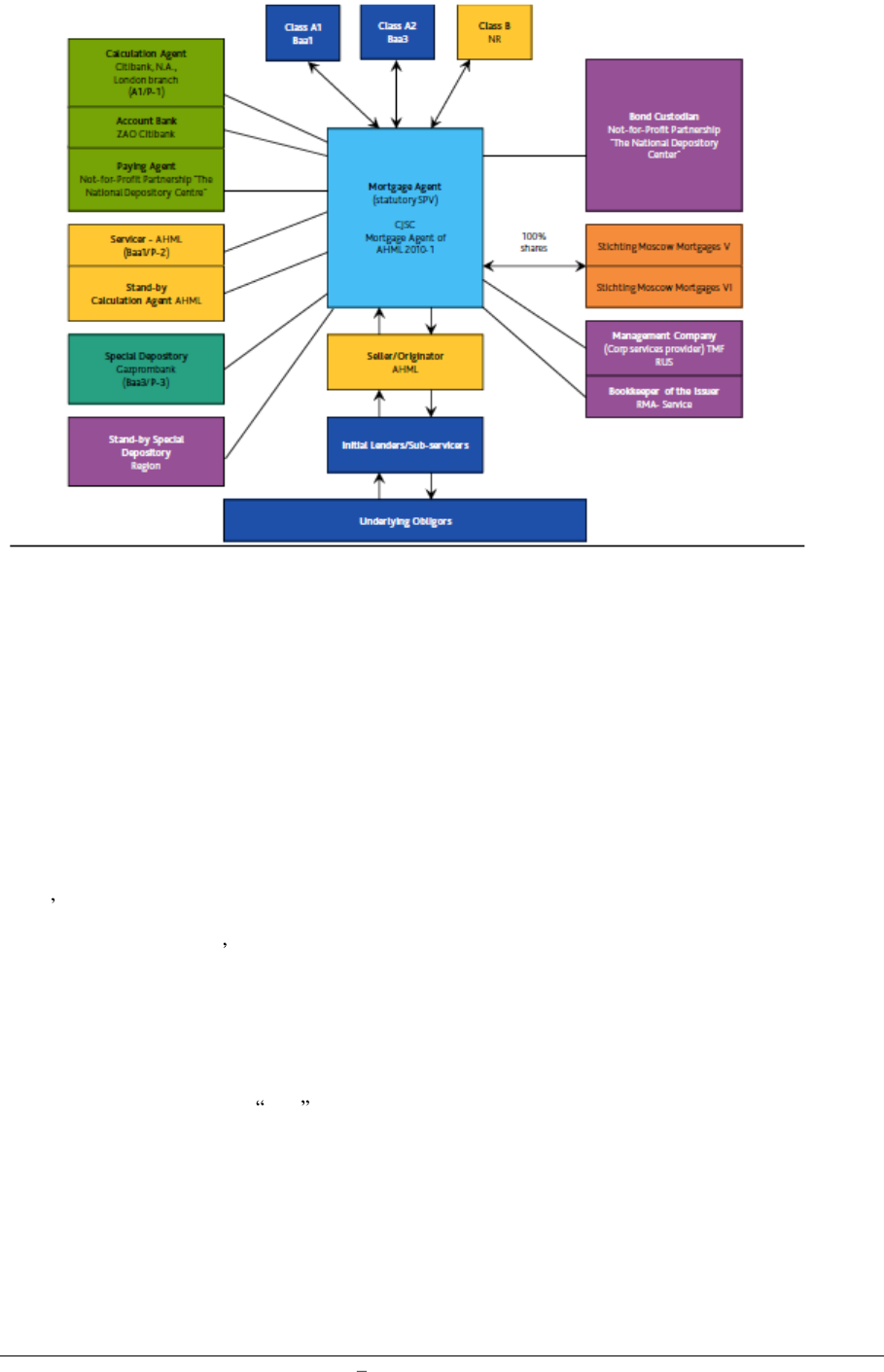
Mortgage Loan Minimum Standards Manual
June 2011
80
Structure, Legal Aspects and Associated Risks
Transaction structure
: The Mortgage Agent,
registered in the Russian Federation, has issued three
classes of Rouble denominated bonds to refinan
ce the
purchase of receivables arising from Russian
mortgage loans originated by a range of local
regional banks and non
-
banking corporate entities in
accordance with standards set by AHML. This is the
first transaction with time
-
subordinated structure
iss
ued under the Russian domestic MBS law. In the
absence of the default of the Mortgage Agent, Class
A1 will be repaid first followed by the repayment of
Class A2. Interest due for these two classes will be
paid pro
-
rata.
Allocation of payments/pre accelerat
ed revenue
waterfall
: On each quarterly payment date, the
issuer s available funds (i.e. interest amounts
received from the portfolio, the reserve fund, and
interest earned on the issuer s account) will be
applied in the following simplified order of prior
ity:
1. Senior expenses;
2. Interest on Classes A1 and A2 (pro rata);
3. Minimum Coupon for Class B (de minimis
payment of RUB0.01 per Bond);
4. Principal Deficiency Ledger ( PDL ) (to be used
to repay the notes sequentially);
5. Reserve Fund;
6. Interest
on Class B (subject to the available funds).
Allocation of payments/pre
-
accelerated principal
waterfall
:
On each quarterly payment date, the principal
amounts received from the portfolio and amounts
applied to clear PDL will be applied in the following
si
mplified order of priority:
1. Principal to pay the shortfall of payments of the
senior expenses and interest on classes A1 and A2
2. Principal payments in sequential order until repaid
in full to Class A1; Class A2 and Class B.
Allocation of payments post
default of the
Mortgage Agent (but before the Mortgage Agent
is declared insolvent)
: If the mortgage agent has
defaulted due to the reasons described below and the
notes have been accelerated, the principal amounts
received from the portfolio will be allo
cated as
follows:
1. Principal payments on Class A2 until the notional
amounts of Classes A1 and A2 are equal.
2. Pro-
rata principal payments on classes A1 and A2.
3. Principal payments on Class B (after classes A1
and A2 have been fully repaid). Interest
on classes
A1 and A2 will continue being paid prorate at that
time.
Allocation of payments/PDL
-
like mechanism
:
The PDL will be debited once the loan has been
declared defaulted. The loan is declared defaulted if it
has been 89+ days in arrears; the mortgag
ed property
is completely or partially destroyed; the relevant
mortgage loan agreement or mortgage certificate is
held void by court; or the mortgaged property has
been seized or foreclosed.

Mortgage Loan Minimum Standards Manual
June 2011
81
Originator Profile, Servicer Profile and Operating Risks
Date
of Operations Review: April 2010
Originator Background: Agency for Housing Mortgage Lending OJSC (AHML)
Rating:
Baa1
Financial Institution Group Outlook for Sector:
Stable
Ownership Structure:
100% owned by the Russian Federal Government
Asset Size:
RUB 168.8 billion
% of Total Book Securitised:
30%
Transaction as % of Total Book:
15%
% of Transaction Retained:
10%
Servicer Background: AHML
Rating:
Baa1/P
-2
Total Number of Mortgages Serviced:
Approximately 128,500
Number of Staff:
107 FTEs d
edicated to servicing (including contract
workers)
Cash Manager/Calculation Agent Background: Citibank N.A.
Rating:
Citibank N.A.: A1/P
-1
Main Responsibilities:
Preparation of investor report
Obligation to perform calculations and make
payments accord
ing to waterfall
Draw on reserve fund and/or on the AHML s
financial support
Calculation Timeline:
Calculation period, which ends on the last date of
the month corresponds to the quarterly payment
date on the 20th of the following month (for
example, calc
ulation date from October 1 to
December 31 corresponds to the payment date on
February 20). The servicer is obligated to deliver
the servicing report to the cash manager by the 6th
of the month. There is a 7 day grace period for
interest and 30 day grace p
eriod for principal
payments not made on the payment date before
this non
-
payment is classified as default of the
Mortgage Agent.

Mortgage Loan Minimum Standards Manual
June 2011
82
Back
-
up Cash Manager/Calculation Agent Background: AHML
Back
-
up Cash Manager and Its Rating:
Baa1/P
-2
Main Responsibilit
ies of Back
-
up Cash
Manager:
Same as the responsibilities of the primary cash
manager once the primary cash manager has
defaulted. As part of its role as servicer, AHML is
well equipped to perform cash management duties.
Special Depository: Gazprombank
Rating:
Baa3/P
-3
Main Responsibilities of Special Depository:
Approximately 128,500
Number of Staff:
Safekeeping and tracking of the mortgage
collateral (i.e. mortgage certificates)
Calculation and tracking of the mortgage coverage
Control over the mortg
age agent s compliance with
the regulation and obligation to notify appropriate
authorities in case of non
-
compliance of the
mortgage agent with any laws or regulations
Control over mortgage collateral and other aspects
of mortgage coverage (such as collec
tions and
reserve funds)
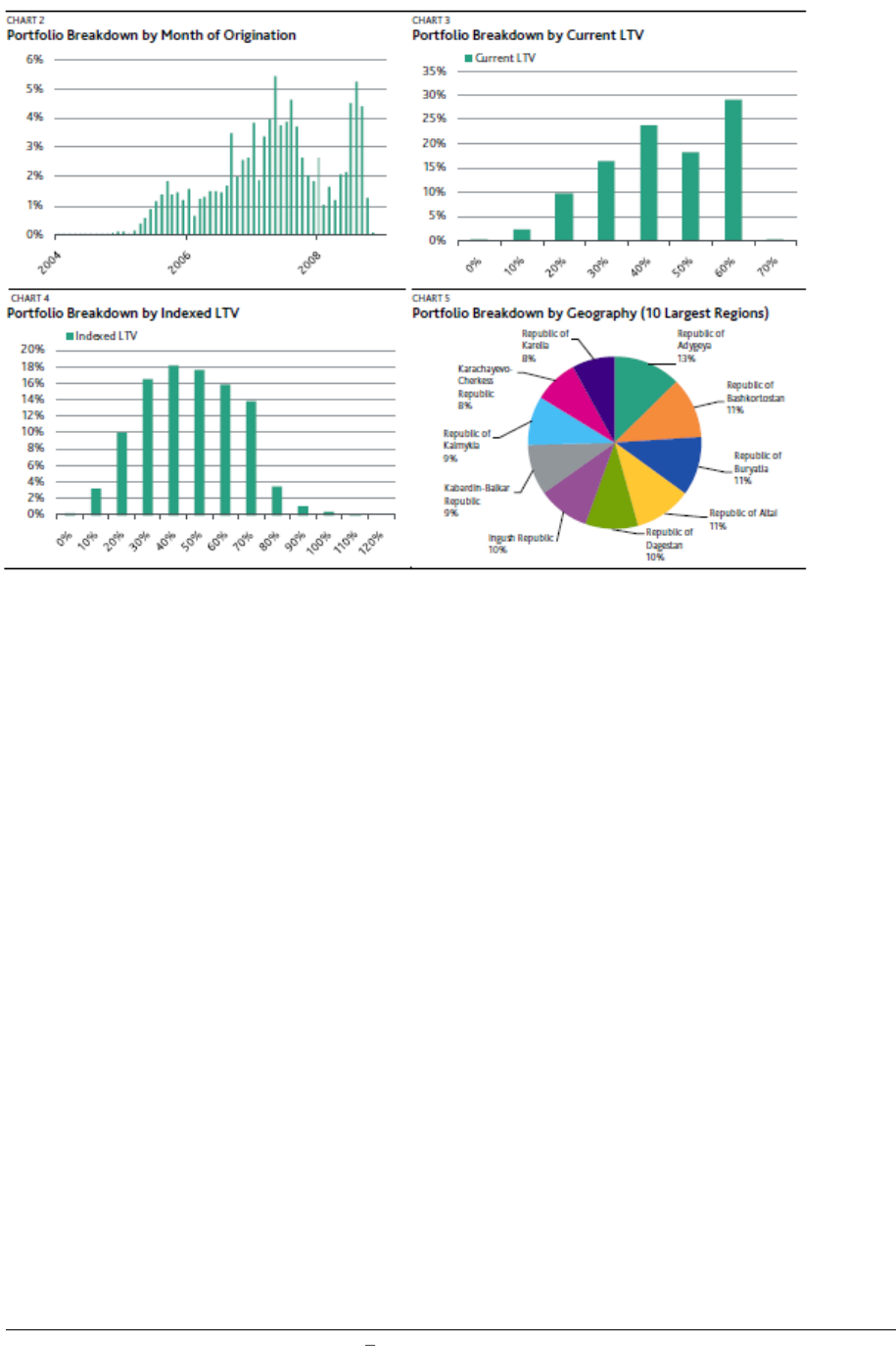
Mortgage Loan Minimum Standards Manual
June 2011
83
Collateral Description (pool as of December 2009)

Mortgage Loan Minimum Standards Manual
June 2011
84
Russian & CIS Performance Indices
February 2011
Appendix 2a: RMBS Transactions Overview
Current Performance Data
Transaction Name
Originators
Original
Balance
*
Closing
Date
Reporting
Date
Reporting
Frequency
Pool
Factor
Original
LTV
Current
LTV
C
JSC
Agent of AHML 2010
-1
-
Agency for Housing
Mortgage Lending OJSC
13,547M
Jul
-
10
Feb
-
11
Q 0.85
52.90
39.40
Appendix
3
Transaction Name
Tranche
Name
Asset
Domicile
Tranche
Currency
Original
Tranche
Balance
Current
Tranche
Balance
Original
Rating
Date
Original
Rating
Current
Rating
Date
Current
Rating
Indicator
CJSC
Mortgage Agent of AHML
2010
-1
A1
RUSSIA
Ru.Ruble
6,096M 4,407M
7/16/2010
Baa1
7/16/2010
Baa
1
(sf)
CJSC
Mortgage Agent of AHML
2010
-1
A2
RUSSIA
Ru.Ruble
6,096M 6,096M
7/16/2010
Baa3
7/16/2010
Baa3
(sf)
CJSC
Mortgage Agent of AHML
2010
-1 B
RUSSIA
Ru.Ruble
1,355M 1,355M
7/16/2010
NR
7/16/2010
NR
(sf)

Mortgage Loan Minimum Standards Manual
June 2011
85
A5.
INVESTOR / RATING AGENCY SAMPLE REPORT
COVERED MORTGAGE
BOND
This appendix con
tains
extracts from the following Moody s new issue report. For the entire report see
www.moodys.com.
NEW ISSUE REPORT
Alpha Bank A.E.
8 billion Direct Issuance
Global Covered Bond Programme
Covered Bonds / Greece
First rating assignment
20 May 2010
Analyst Contacts
Martin Rast
Vice President
-
Senior Analyst
44.20.7772.8676
Monica Bianchi
Statist
ical Analyst
44.20.7772.8745
Definitive Ratings
Cover Pool
(EUR Million)
Assets
Covered Bonds
(EUR Million)
Covered Bonds Rating
4,169
Residential Mortgage Loans
3,500
Baa3
The ra
tings address the expected loss posed to investors. Moody s ratings address only the credit risks associated with the transaction.
Other non
-
credit risks have not been addressed, but may have a significant effect on yield to investors.
Moody s has assigne
d long
-
term definitive ratings of Baa3 to the Greek mortgage covered bonds issued
directly by Alpha Bank A.E. (the issuer or Alpha) under the terms of its 8 billion Direct Issuance Global
Covered Bond Programme (the programme). The programme has been esta
blished in accordance with the
Greek covered bond legal framework1
(CB legislation).
The rating takes into account the following factors:
» The credit strength of the issuer (Ba1/NP/D+). Alpha is the third largest financial institution in Greece
with total
assets of
69.60 billion as of end-
December 2009.
» The credit quality of the assets (the cover pool) securing the payment obligations of the issuer under the
covered bonds. The cover pool mainly comprises prime Greek residential mortgage loans originated
by the
issuer. The collateral score for the initial cover pool is around 11%.
» The strengths of the Greek CB legislation: (i) the holders of the covered bonds will have the benefit of
both unlimited recourse against the issuer and a statutory pledge over the assets forming part of the cover
pool; (ii) the legal segregation of the assets in the cover pool from any bankruptcy proceedings against the
issuer; (iii) the statutory asset percentage test with a maximum of 95% and other matching tests; and (iv)

Mortgage Loan Minimum Standards Manual
June 2011
86
ce
rtain restrictions to the value of loans in the mandatory tests, resulting in inter alia no value given to (a)
loan parts above 80% LTV and (b) loans in arrears of more than 90 days.
» The contractual asset percentage set at 95%, which translates into a mi
nimum 5.26% amount of
committed over
-
collateralisation. Given this level of over
-
collateralisation in conjunction with other deal
factors (e.g. the rating of the issuer, cover pool composition), the expected loss is commensurate with a
Baa3 rating on the c
overed bonds.
» The use of contractual arrangements designed to mitigate the rating linkage between the issuer and the
covered bonds.
Strengths of the Transaction
» The issuer: The covered bonds are direct and full recourse obligations of the issuer (Ba1
/
NP/D+).
» The cover pool: the covered bonds are supported by a well
-
seasoned and granular cover pool. Only
prime residential mortgage loans are eligible. Furthermore, the statutory/ mandatory imposes that only loan
parts below 80% of the property s market
value can be used as coverage for issuing covered bonds. The
loans have an average loan
-
to
-
property market value (LTV) ratio of approximately 56.2%.
» The CB legislation: A number of provisions set out in the CB legislation are regarded favourably by
Moody
s. These include, but are not limited to, the following:
o
Asset eligibility criteria. Only assets that satisfy certain eligibility criteria can be taken into account for
the purpose of the portfolio tests.
o
Segregation. The assets assigned by virtue of
the statutory pledge or the trust deed (to the extent not
subject to Greek Law) by the issuer will be segregated from its insolvency estate. Any proceeds deriving
from the assets included in the cover pool will be used to satisfy the claims of the holders
of the covered
bonds and of the other secured creditors, in each case subject to the terms of the CB legislation and the
programme documents.
o
Servicing of the cover pool after issuer bankruptcy. Upon an issuer event, the Bank of Greece may
appoint a serv
icer if the trustee fails to do so.
o
Recourse to the issuer. If the proceeds from the cover pool
are not sufficient to repay the covered bonds following the bankruptcy of the issuer, the holders of the
covered bonds would have recourse on an unsecured bas
is against the insolvency estate of the issuer.
o
Supervision by Bank of Greece. The issuance of covered bonds is supervised by the Bank of Greece.
» Refinancing risk: In terms of its assessment of refinancing risk, Moody s views favourably the extended
ma
turity date included in the final terms of the covered bonds. However, this extension maturity only
works if an event of default does not occur, such as the breach of the amortisation test.
» Market risk: Exposure to interest rate risk is mitigated by the
portfolio tests that the issuer has to carry
out under the terms of the CB legislation. At the time of the first issuance, both the covered bonds and the
cover pool are denominated in Euros.
» Commingling risk: Commingling risk is mitigated by the followin
g measures: (i) the commingling
reserve fund to be funded if the issuer s short-
term rating falls below P
-
1; and (ii) the notification of the
borrowers to pay directly to an account at a credit institution with a rating of at least P
-
1 upon an issuer
event
.
» Set
-off risk: Moody s understands that the CB legislation would prevent the borrowers from exercising
any right of set
-off against payments due in respect of loans included in the cover pool.
Weaknesses and Mitigants

Mortgage Loan Minimum Standards Manual
June 2011
87
» The issuer: As with most covere
d bonds, until an issuer event, the issuer has the ability to materially
change the nature of the programme. For example, additional loans may be added to the cover pool, new
covered bonds issued with varying terms and different hedging arrangements entere
d into. These changes
could impact the credit quality of the cover pool or the degree of exposure to refinancing risk and/or
market risk.
Mitigants
: (i) the contractual and legislative asset eligibility criteria; (ii) the LTV limits
imposed by the CB Legis
lation; and (iii) the contractually binding level of over
-
collateralisation.
» The cover pool: The credit quality of the cover pool is reflected in the collateral score of approximately
11%.
Mitigant:
Moody s EL modelling takes into account the credit risk
of the cover pool.
» Substitution risk: As in most covered bond frameworks, there are few restrictions on the future
composition of the cover pool and hence substitution risk exists. The following should be noted:
o
The risk associated with the interventi
on of the issuer and the relevant mitigants should be considered.
o
The risk associated with the deterioration of the cover pool is mitigated by the following: (i) any asset
that is part of the cover pool before the issuer s insolvency will continue to ser
ve as security for the
covered bond holders; (ii) the CB legislation and the programme documents require the issuer to comply
with the portfolio tests and inject additional assets if such tests are breached; (iii) the pool composition will
be monitored; an
d (iv) the mandatory tests will give no value to loans in arrears of more than 90 days.
» Market risk. While the notes issued under the first series are variable rate referenced to the ECB base
rate, 39% of the assets have a fixed
-
rate term. No swap mitiga
tes such risks.
Mitigant:
Moody s has
factored in its analysis the interest rate risk and it is reflected in the over
-
collateralisation level.
» Refinancing risk. Following an issuer bankruptcy, to achieve timely payment, the holders of the covered
bonds m
ay need to rely on proceeds being raised through the sale of assets in the cover pool. The value of
the assets may also be subject to substantial volatility.
Mitigant:
Moody s modelling uses stressed
refinancing margins when modelling this transaction.
» S
overeign risk. Greece s public finance situation has markedly deteriorated and is set to remain highly
challenging. The type of economic and financial stress that would be associated with government debt
problems would somewhat weaken the credit fundamenta
ls of even highly enhanced structured
transactions.
Mitigant
:
The low TPI of this transaction limits the uplift of the rating assigned to the covered
bonds above the rating of the issuer.
» Time subordination risk: The deal does not contemplate the automat
ic acceleration of the outstanding
covered bonds upon an insolvency of the issuer. This feature may result in the later-
maturing liabilities
being de facto subordinated to the earlier maturing liabilities.
Mitigant
: When timely payments can no
longer be ma
de by the trustee, the claims of secured creditors will be paid on a pari passu basis » Income
underwriting: Generally all the loans have been checked to confirm that the borrowers can, based on their
income as it transpires from the borrower s pay slip or
tax return at the time of origination, afford to repay
the loans over their lives. However, in some cases and only for existing customers, credit is given to other
sources of income when there are indicators of higher than declared income. Those indicator
s may be (a)
qualitative information provided by the Branch, (b) availability of other assets (cash, property), (c) the
applicant is an Alpha Private Banking customer.
Mitigant: We took these characteristics into account when
calculating the collateral sco
re for the cover pool.
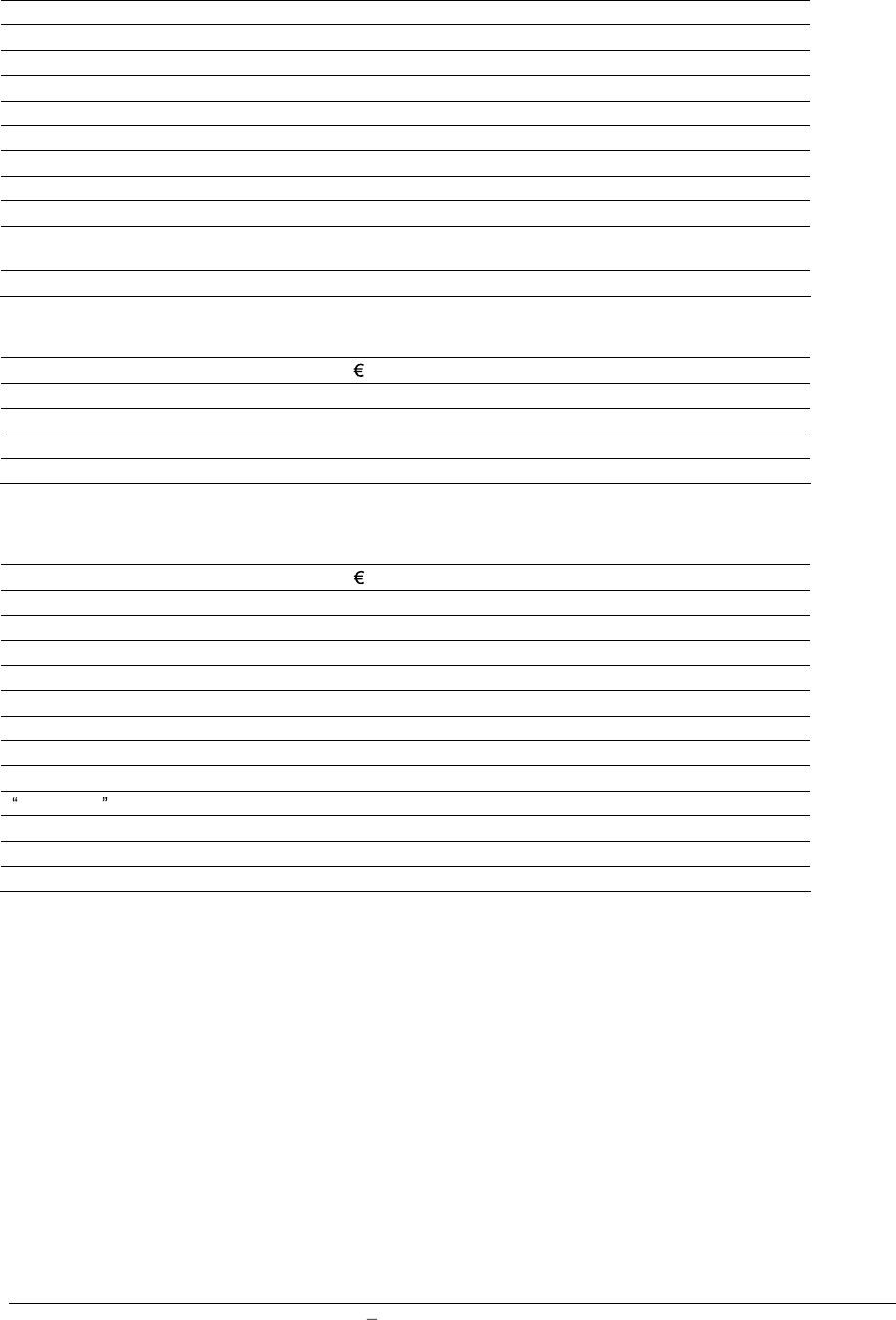
Mortgage Loan Minimum Standards Manual
June 2011
88
Structure Summary
Issuer:
Alpha Bank A.E. (Ba1, Not Prime, D)
Sponsor Bank:
Alpha Bank A.E.
Structure Type:
Direct issuance
Issued under Covered Bonds Law:
Yes
Applicable Covered Bonds Law:
Greece
Sellers/Originators:
Alpha B
ank A.E.
Servicers:
Alpha Bank A.E.
Interest Rate Swap Provider:
n/a
Asset Monitor:
Deloitte Hadjpavlou, Sofianos & Cambanis S.A
Trustee/Representative of the
Bondholders:
Citibank, N.A., London Branch
Timely Payment Indicator:
Very Improbable
Cover
ed Bonds Summary
Total Covered bonds Outstanding:
3.5 billion
Currency of covered bonds:
100% euro
Extended Refinance Period:
10 years
Principal Payment Type:
Soft Bullet
Interest Rate Type:
100% floating
Collateral Summary
Size of Cover Pool:
4.17 billion
Main collateral type in Cover Pool:
Res
idential
Main Asset Location:
Greece
Loans Count:
79,275
Currency:
Euro
WA Current LTV:
56.2% (on an unindexed basis)
WA Seasoning:
49 months
WA Remaining Term:
230 months
Interest Rate Type:
Floating 61%, Fixed 39%
Committed Over-
Collateralisati
on:
5.26%
Collateral Score:
11%
Further details:
See Appendix 1
Pool Cut
-
Off Date:
27 September 2010
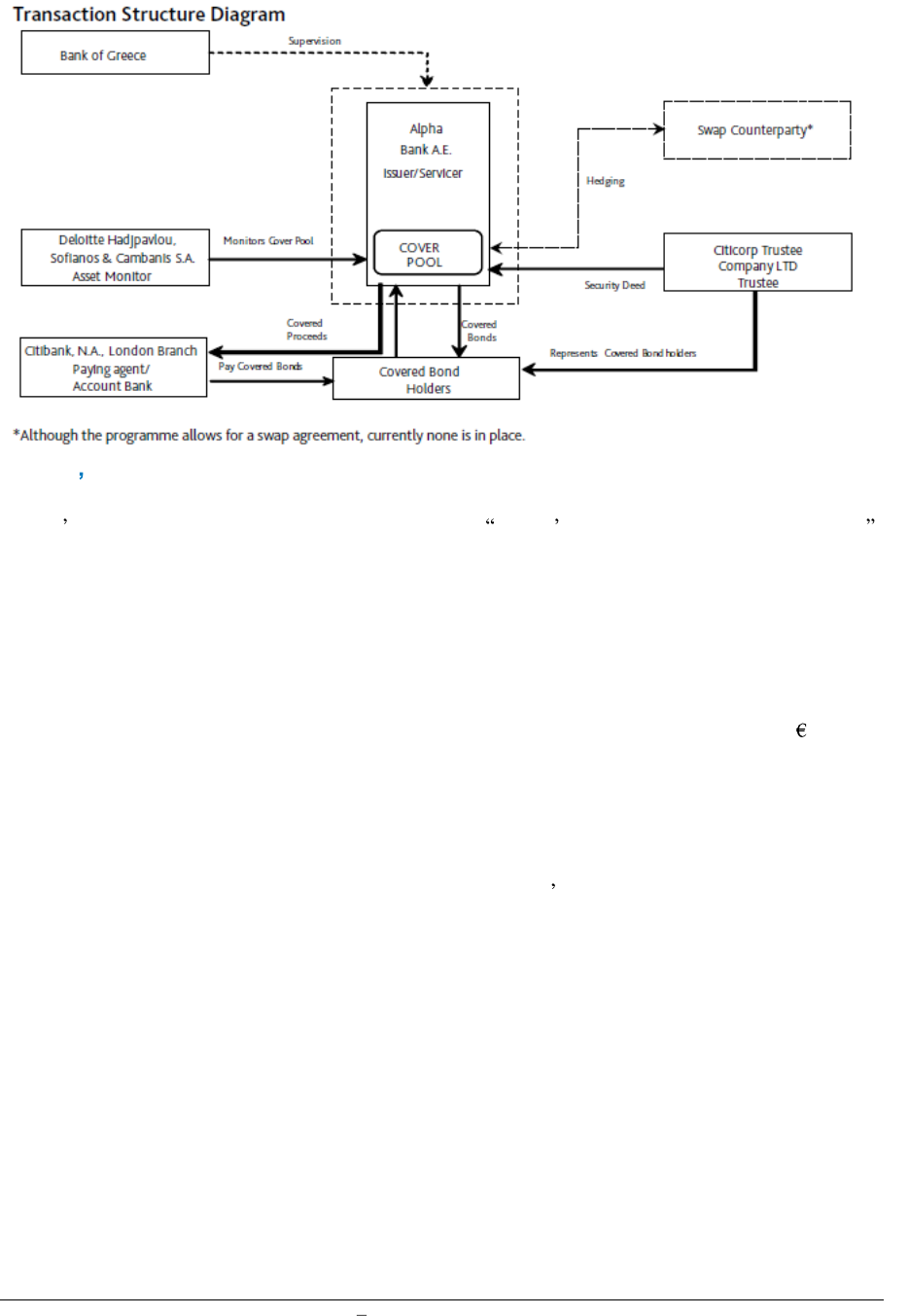
Mortgage Loan Minimum Standards Manual
June 2011
89
Structural and Legal Aspects
Moody s Rating Methodology
Moody s covered bond rating methodology special report ( Moody s Rating Approach to Covered Bonds
dated 4 March 2010) details the approach used for rating covered bond transactions. The main assumption
is that until an issuer default, the covered bond obligations are sufficiently supported by the issuer. After an
issuer default, the programme
will rely only on the quality of the cover pool (including the swaps, if any
and to the extent that they have survived). The impact of the credit strength of the issuer and that of the
quality of the cover pool are analysed below.
Credit Strength of the S
ponsor Bank
The covered bonds are full recourse to Alpha Bank A.E. (rated Ba1/NP/D+). With total assets of
69.60
billion as of December 2009, Alpha has a strong franchise in Greece as the country's third
-
largest bank,
commanding a leading position in corp
orate banking and strong retail banking penetration in recent years.
Moreover, the bank has good geographic diversification through its presence in South Eastern Europe
(SEE) and Cyprus. The rating also benefits from its good efficiency indicators, while t
he recent EUR 986
million rights issue has strengthened the bank's capitalisation.
For further information on the issuer see Related Research: Moody s Bank Credit Opinion on Alpha Bank
A.E. was last updated on 18 June 2010.
The Credit Quality of the Cover
Pool
The cover pool
The cover pool consists of loans backed by properties located in Greece. All the loans in the pool have
been originated by the issuer in line with its underwriting guidelines.
All loans pay principal on a monthly basis, and are based o
n annuity amortisation schedules. All loans in
the pool are euro-
denominated.
The current weighted
-
average loan outstanding to original market value for the entire portfolio (56.2%).

Mortgage Loan Minimum Standards Manual
June 2011
90
Approximately 6% of the pool are subsidised loans, both from the Greek Go
vernment and OEK (Housing
Agency). The subsidies cover all or part of the interest amount of the monthly instalments of the loans
concerned, but borrowers are still liable for the whole interest amount.
The subsidies vary between 17% and 100% of the inter
est amount and can be granted for a maximum of
nine years. The payments owed are debited by the issuer from the account opened in its books in the name
of the trustee. The underwriting for these loans are the same as for the other loans, subject to more strict
eligibility criteria (see Appendix 2 for details about the underwriting criteria).
The quality of the collateral is evident from the collateral score of approximately 11%. For a description of
the cover pool, please see Appendix 1.
For further informa
tion on selected questions related to Alpha s underwriting policy, please see Appendix
2.
Appendix 1: The Cover Pool
Overview
Collateral Type:
Residential Mortgage
Asset balance:
4,168,881,223
Average loan balance:
52,588
Number of loans:
79,275
Numb
er of borrowers:
57,119
Number of properties:
58,274
WA Remaining Term (in months):
230
WA Seasoning (in months):
49
Details on LTV
Details on LTV
WA current LTV (*):
56.2%
WA Indexed LTV:
53.0%
Valuation type:
Market Value
LTV threshold:
80%
J
unior ranks:
n/d
Prior ranks:
n/d
Specific Loan and Borrower characteristics
Loan and Borrower characteristics
Loans benefiting from a guarantee:
n/a
Interest Only Loans:
0.0%
Loans for second homes / Vacation:
2.1%
Buy to Let loans / Non owner oc
cupied
properties:
0.0%
Limited income verified:
50.0%
Adverse Credit Characteristics(**):
0.0%
Performance
Loans in arrears (
2months -
< 6months):
0.0%
Loans in arrears (
6months -
< 12months):
0.0%
Loans in arrears ( > 12months):
0.0%
Loa
ns in a foreclosure procedure:
0.0%
Multi
-
Family Properties
Loans to tenants of tenant
-
owned Housing
Cooperatives:
n/a
Other type of Multi
-Family loans (****)
n/a
* Based on original property valuation
** Refers to Borrowers with previous missed p
ayments, Borrowers with a previous personal bankruptcy or Borrowers with record of court claims
against them at time of origination
*** n/d : information not disclosed by Issuer
**** This "other" type refers to loans directly to Housing Cooperatives and to
Professional Landlords
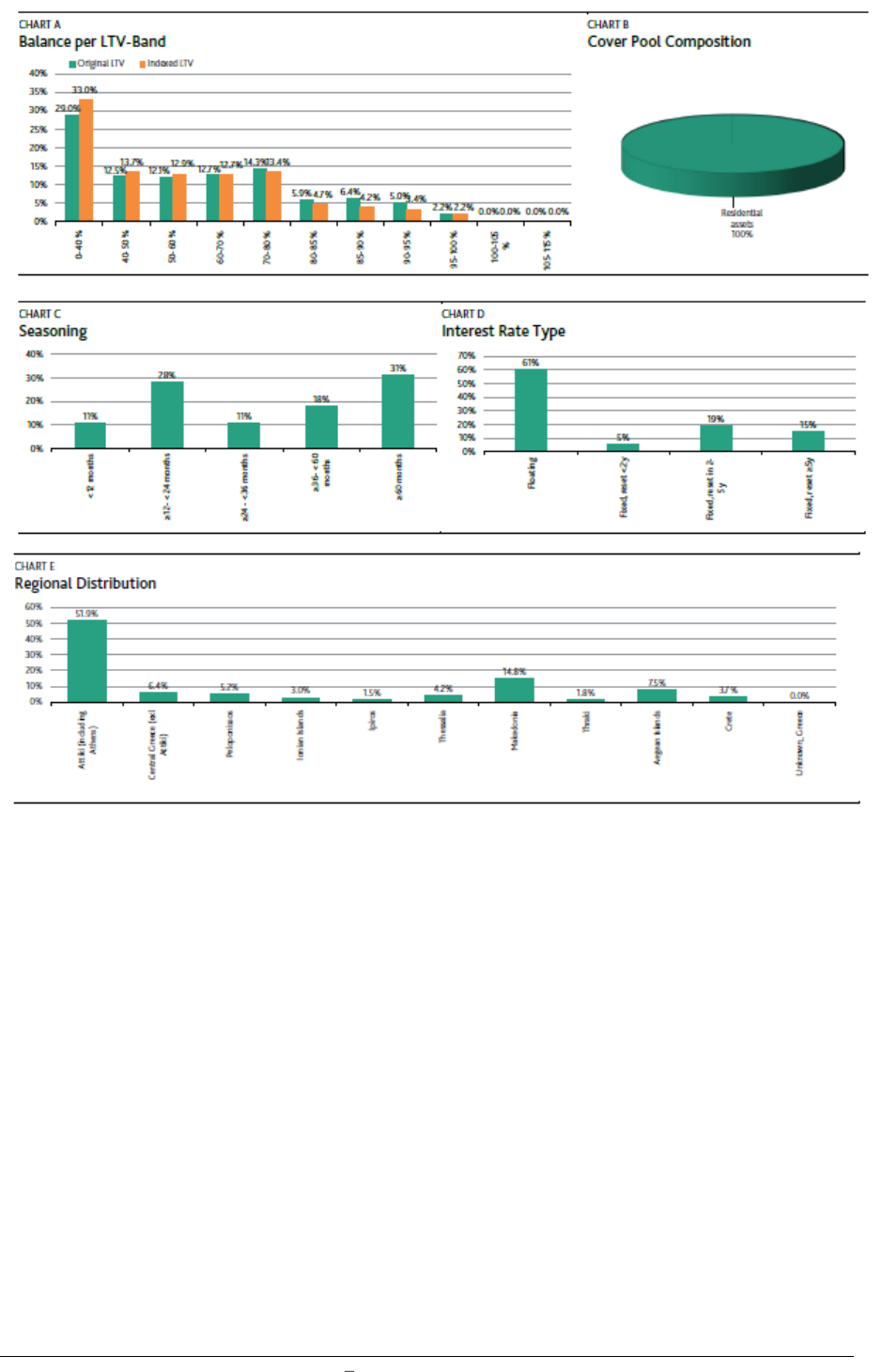
Mortgage Loan Minimum Standards Manual
June 2011
91

Mortgage Loan Minimum Standards Manual
June 2011
92
A6.
BIBLIOGRAPHY
BIS Quarterly Review: The covered bond market , Packer, F., R. Stever and C. Upper, (2007), September
Board of Governors of the Federal Reserve System: Mortgage Debt Outstanding, Release Date March 2011,
http://www.federalreserve.gov/econresdata/releases/mortoutstand/current.htm
Directive 2008/48/EC of the European Parliament and of the Council of 23 April 2008 on credit agreements for
consumers and repealing Council Directive 87/102/EEC
Directive of the European Parliament and of the Council on credit agreements relating to residential property
European Bank for Reconstruction and Development - Environmental and Social Risk Management E-
Manual,
available at:
http://www.ebrd.com/pages/about/principles/sustainability/resources/financial.shtml
European Bank for Reconstruction and Deve
lopment
List of the Minimum Standards (LMS) and Mortgage
Manual (editions 2004 and 2007, respectively)
European Central Bank: EU Banks Funding Structures and Policies (May 2009)
European Central Bank: Covered Bonds in the EU Financial System (Decemb
er 2008)
European Covered Bond Council: European Covered Bond Factbook 2010
European Mortgage Federation (2002): "Mortgage Banks & The Mortgage Bond in Europe" 4th Edition
European Mortgage Federation (2002): "2002 Factsheets
"
European Mortgage Federatio
n website
Moody's Approach to Rating RMBS in Europe, Middle East, and Africa, 2 October 2009
Moody s
Enhanced Approach to Originator Assessments in EMEA RMBS Transacti
ons, 19 October 2009

Mortgage Loan Minimum Standards Manual
June 2011
93
A7.
GLOSSARY
Accrued Interest
Interest that is earned but not paid, ad
ding to the amount owed.
Adjustable
-
Rate Mortgage
(ARM)
(Also known as a variable-rate loan) A mortgage with an interest rate and
payments that can change at specified time periods based on changes in an
interest rate index that reflects current finance market conditions, such as the
LIBOR index or the Treasury index. When the interest rate on an ARM
increases, the monthly payments will increase and when the interest rate on an
ARM decreases, the monthly payments will be lower.
Adjustment Interval
The time between changes in the interest rate or monthly payment on an ARM.
The rate adjustment interval and the payment adjustment interval are the same on
a fully amortising ARM, but may not be on a negative amortisation ARM.
Affordability
A consumer's capacity to afford a house. Affordability is usually expressed in
terms of the maximum price the consumer could pay for a house and be
approved for the mortgage required to pay that amount.
Amortisation
The process of paying a loan over a predetermined period of time at a specific
interest rate. The amortisation of a loan includes payment of interest and a
portion of the outstanding principal balance during each payment cycle.
Amortisation Schedule
A table showing the mortgage payment, broken down by interest and principal,
the loan balance, tax and insurance payments if made by the lender and the
balance of the tax/insurance escrow account.
Appraisal
A professional estimate of the value of the property, including references to sales
of comparable properties.
A
ppraiser
An independent professional who conducts an analysis of the property, often
qualified by education, training and experience to estimate value of property or
personal property. Can work independently or for lender.
Arrears
Amount past due on a mor
tgage.
Balance
The amount of the original loan remaining to be paid. It is equal to the loan
amount less the sum of all prior payments of principal.
Bankruptcy
A provision in the law that allows borrowers to, whether personal or corporate to
declare themselves with greater assets than liabilities and/or greater liabilities
than income. In some cases courts allow bankrupt borrowers relief from debt by
discharging the debt. In other cases, the court will require the borrower to make
payments to creditors.
Building Loan
Also called a construction loan. A mortgage loan made to finance the
construction of a building, administered in tranches during the construction
process.
Certificate Of Title
A legal document that indicates who is responsible for and owns
the property and
describes the property and any liens against it.
Charge
-
Off
The portion of principal and interest due on a loan that is written off when

Mortgage Loan Minimum Standards Manual
June 2011
94
deemed to be uncollectible.
Closing
On a home purchase, the process of transferring ownership from the seller to the
buyer, the disbursement of funds from the buyer and the lender to the seller, and
the execution of all the documents associated with the sale and the loan.
Closing Costs
Costs that the borrower must pay at the time of closing, in addition to the down
payment.
Co
-
borrowers
One or more persons who have signed the note, and are equally responsible for
repaying the loan.
Collateral
Property that is pledged as security for a debt. In the case of a mortgage, the
collateral would be the land, t
he house, and other buildings and improvements.
Convertible Mortgage:
A mortgage that begins as either an adjustable rate or fixed rate mortgage and
can be converted into another type of mortgage at a specified point in the loan
term.
Construction Financ
ing
The method of financing used when a borrower contracts to have a house built,
as opposed to purchasing a completed house.
Coupon
The contractual rate of interest on a credit instrument. For example a bond with
an interest rate of 6% is said to have a
coupon rate of 6%.
Credit Bureau
The company that gathers information on consumers who use credit and sells
that information in the form of a credit report to credit lenders.
Credit Assessment
Analyses the credit
-
worthiness of the borrower.
Credit Enhan
cement
A method whereby a company or individual attempts to improve its debt or
credit worthiness. The most common forms of credit enhancement are collateral
and over collateralisation, corporate guarantee, letter of credit, insurance, and
senior
-
subordina
ted structures.
Credit
-
Loss Ratio
The ratio of current credit-related losses to the current value of a mortgage-
backed security, or the ratio of total credit-related losses to total mortgages
owned by the corporation.
Credit Rating
An assessment of the credit worthiness of individuals and corporations that is
based upon the history of borrowing and repayment, as well as the availability of
assets and extent of liabilities.
Credit Rating Agency
A company that provides credit analysis services and ratings for corporate,
project finance, energy utility companies, sovereigns, public financing and
financial service companies. Standard & Poor s and Moody s are widely
recognised ratings agencies.
Credit Report
A report from a credit bureau containing detailed information bearing on credit-
worthiness, including the individual's credit history.
Credit
-
Related Losses
The sum of lost or foreclosed property expenses plus charge
-
offs.
Credit Risk
The risk that an issuer or a borrower may default on its obligations.

Mortgage Loan Minimum Standards Manual
June 2011
95
Credit Scoring
A statistical measure of credit risk calculated using recorded information
a
credit report
-
by a standardised, quantifiable method.
Default
The failure of a borrower to meet the terms of a legal contract, such as the
provisions of a mor
tgage. This can be failing to make any payment for an amount
of time or making payments below the minimum amount agreed.
Delinquency
When all or part of the borrower's monthly installment of principal and interest is
unpaid after the due date.
Delivery
The submission of all loan data and other information and documentation
required, usually used in delivering a loan to the secondary market.
Derivative Mortgage
Product
A security that pays investors with cash flows generated by an underlying
instrument,
such as mortgages or mortgage-backed securities. The most common
derivatives include multiple class securities, stripped mortgage
-backed securities,
and residuals, or tranches.
Depreciation
A decline in the value of a house due to changing market conditions, decline of a
neighborhood or lack of upkeep on a home.
Documentation
Requirements
The set of lender requirements that specify how information about a loan
applicant's income and assets must be provided, and how it will be used by the
lender.
Down Pay
ment
The difference between the value of the property and the loan amount, expressed
in currency, or as a percentage of the price. For example, if the house sells for
20,000,000 USD and the loan is for 12,000,000 USD, the down payment is
8,000,000 USD or 4
0%.
Eviction
To remove or put out an occupant of a property by legal process.
Examination of Title
Research on the title of a property from public records or an abstract of the title.
Employment Verification
The process of checking the borrower s employ
ment information.
Escrow
An agreement that money or other objects of value be placed with a third party
for safe keeping, pending the performance of some promised act by one of the
parties to the agreement. It is common for home mortgage transactions to i
nclude
an escrow agreement where the borrower adds a specified amount for taxes and
hazard insurance to the regular monthly mortgage payment. The money goes into
an escrow account out of which the lender pays the taxes and insurance when
they come due.
Eq
uity
In connection with a home, the difference between the value of the home and the
balance of outstanding mortgage loans on the home.
First Mortgage
A mortgage that has a first-priority claim against the property in the event the
borrower defaults on th
e loan.
Fixed
-
Rate Mortgage
Mortgage in which the interest rate on the
mortgage remains the same throughout
the term of the loan. As a result the monthly payment of interest and principal
remains the same through the life of the mortgage.
Forbearance
Agr
eement between a delinquent borrower and lender in which the lender

Mortgage Loan Minimum Standards Manual
June 2011
96
postpones legal action or foreclosure and the borrower agrees to a payment plan
to bring the overdue mortgage payments up to date.
Foreclosure
A legal action that terminates all ownership rights to a home when the
homebuyer fails to make the mortgage payments or is otherwise in default under
the terms of the mortgage.
Grace Period
The period after the payment due date during which the borrower can pay a
regularly scheduled payment without
penalty.
Hazard Insurance
Also known as property insurance. Insurance purchased by the borrower, and
required by the lender, to protect the property against loss from fire and other
hazards. Mortgage lenders often require a borrower to maintain an amount of
hazard insurance on the property that is equal at least to the amount of the
mortgage loan.
Home Equity Loan
A type of second mortgage in which the borrower uses the equity in their home
as collateral. This is often used for large expenses, such as home improvements,
medical bills or education tuition.
Housing Debt to Income
(HDTI)
Ratio comparing required monthly mortgage loan payments to available net
income. Recommended maximum is 28
-
33%.
Income Verification
The process of checking the borrower s
income information.
Initial Interest Rate
The interest rate that is fixed for some specified number of months at the
beginning of the life of an ARM. The initial rate is sometimes referred to as a
"teaser" when it is below the fully indexed interest rate.
Interest
The cost paid to the lender for the borrowed money.
Interest Accrual Period
The period over which the interest due the lender is calculated.
Interest Payment
The amount of interest paid each month.
Interest Rate Adjustment
Period
The frequenc
y of rate adjustments on an ARM after the initial rate period is over.
The rate adjustment period is sometimes but not always the same as the initial
rate period.
Interest Rate Index
The published index of interest rates on a publicly traded debt security used to
calculate the interest rate for ARM. The index is usually an average of the
interest rates on a particular type of security such as LIBOR.
Land Contract
A contract between a buyer and private seller of a property, in which the seller
retains the
title to the property until the buyer repays the loan, usually in monthly
installments, in full.
Late Payment
A payment received after the grace period stipulated in the note.
Lien
A perfected claim on a property for a debt or performance of an agreement
.
Loan Agreement
Agreement between the borrower and the financial institution according to which
the financial institution grants the mortgage loan to the borrower. Sometimes
known as a Security Agreement.

Mortgage Loan Minimum Standards Manual
June 2011
97
Loan Amount
The principal amount of a loan which the borrower promises to repay, as set
forth in the mortgage contract.
Loan Servicing
The process by which a lender administers a loan after closing. Activities usually
include collection of principal and interest payments until the loan is paid in full;
collections of past due amounts; verification that taxes and insurance are paid
and disbursement of interest and principal to Treasury.
Loan to Value (LTV) Ratio
The relationship between the principal balance of the mortgage and the appraised
value (or
sales price if it is lower) of the property.
Loss Mitigation
A process by which a lender or third party negotiates mortgage terms that will
reduce the likelihood of foreclosure and the resulting losses for the lender in the
event of borrower default.
Mar
ket Value
The current value of a property based on what a willing purchaser would pay.
The value determined by an appraisal is sometimes used to determine market
value.
Maturity
Date on which the last payment of principal and interest is due. This is usua
lly
but not always the term, which is the period used to calculate the mortgage
payment.
Modification
A change to the original terms of a mortgage, often made in order to make the
payment affordable for the mortgagor.
Mortgage
A security instrument entered into between a lender and borrower or buyer and
seller wherein a promise of payment and other obligations are made by the
borrower also known as the mortgagor.
Mortgage Agreement
Agreement between the borrower and the bank that pledges the property bei
ng
financed to the lender according to which the bank grants the mortgage loan to
the borrower.
Mortgage
-
Backed
Securities or MBS
An investment instrument (debt security) issued in the secondary market that
represents ownership of an undivided interest in a group of mortgages. Principal
and interest from the individual mortgages are passed-through to pay principal
and interest on the MBS.
Mortgage Bond or MB
A bond secured by mortgage loans, sometimes known as a pool of loans.
Mortgage Insurance (MI)
Ins
urance, paid for by a borrower to insure the lender against financial loss of a
mortgage lender in the event of borrower default.
Mortgage Loan Payoff
Amount
The outstanding balance of the mortgage loan including interest accrued to be
paid in full on a d
ate certain.
Mortgage Loans
Outstanding
The total amount of money that is owed by mortgagors.
Mortgage Loan Term
The period used to calculate the monthly mortgage payment.
Mortgage Payment
The monthly payment of interest and principal made by the borrow
er.
Mortgagee / Mortgagor
The lender / The borrower.

Mortgage Loan Minimum Standards Manual
June 2011
98
Negative Amortisation
A rise in the loan balance when the mortgage payment is less than the interest
due.
Non
-
Performing Loan
A loan that is not producing income, including a loan that is not accruing its
stated principal and interest
, after a specif
ic
number of days
.
Notice of Default
A formal written notice to a borrower that a default has occurred and that legal
action may be taken.
Origination Fee
An upfront fee charged by some lenders, usually expressed as a percent of the
loan amount used to offset the cost of originating the loan.
Origination
The process through which a mortgage lender creates a mortgage secured by
some amount of the mortgagor's real property.
Over collateralisation
The posti
ng of more collateral than is needed to obtain financing.
Partial Prepayment
Making a payment larger than the scheduled payment as a way of paying off the
loan earlier.
Payment Period
The period over which the borrower is obliged to make payments.
Payme
nt Shock
A very large increase in the payment on an adjustable rate loan. Also used to
describe the economic shock to a borrowers budget if they make a substantial
increase in their housing expense.
Perfecting a Title
Establishing lien priority over other claims on title or eliminating claims or any
legal question as to ownership of a lien or a property.
Pre
-
Foreclosure Sale
The sale of a property wherein the borrower is in default and the lender permits
the sale prior to the foreclosure auction.
Prepa
yment
Repaying all or part of the mortgage ahead of schedule.
Prepayment Penalty
A charge imposed by the lender if the borrower pays off the loan before a
predetermined date.
Prequalification
The process of determining whether a potential borrower has t
he ability, meaning
sufficient assets and income, to repay a loan before taking a complete application
and before the verification process.
Primary Mortgage Market
The market for issuing mortgage loans to the borrower, usually banks and non-
bank financia
l institutions.
Principal
It is the original loan amount minus the total repayments of principal made to
date The portion of the monthly payment that is used to reduce the loan balance.
The principal balance (sometimes called the outstanding or unpaid pri
ncipal
balance) is the amount owed on the loan at any given time
Primary Residence
The house in which the borrower will live most of the time, as distinct from a
second home or an investor property that will be rented.
Prior Lien
Also known as first lie
n. Highest priority debt in case of default.
Private Mortgage Insurance
Insurance which protects the lender in the case of a default by the borrower, by
paying a percentage of the loss of liquidating the property. May be required by

Mortgage Loan Minimum Standards Manual
June 2011
99
the bank if the down payment by borrowers is less than 20% of the value of the
property.
Processing
Compiling and maintaining the file of information about a mortgage transaction,
including the credit report, appraisal, verification of employment and assets, and
so on. The pro
cessing file is handed off to underwriting for the loan decision.
Pool
A collection of individual mortgages that are grouped together by primary
lenders (banks, thrifts, mortgage bankers) to constitute the collateral for a MBS.
Qualification
The process of determining whether a prospective borrower has the ability,
meaning sufficient assets and income, to repay a loan. Qualification is sometimes
referred to as "pre-qualification" because it is subject to verification of the
information provided by the app
licant.
Qualifying Income (QI)
Applicant s income that is documented and stable.
Refinance
Paying off an old loan while simultaneously taking a new one.
Remittance
The transfer of principal and interest collected from the borrower to the holder of
the m
ortgage.
Also, the transfer of money from outside the county to a citizen in the country.
Repayment Plan
Agreement between the borrower and lender allowing the borrower who is
delinquent on his mortgage to make larger monthly payments for a period of tim
e
until arrearages are repaid.
Replacement Cost
The cost to replace damaged personal property without a deduction for
depreciation.
Residual Income (RI)
Remaining income after an applicant has made the mortgage payment and all
revolving credit obligation
s.
Risk
-
Based Capital
The amount of capital necessary for a bank to have with which to absorb losses
throughout a hypothetical ten-year period marked by severely adverse economic
circumstances.
Risk
-
Based Pricing
Loans priced to take into account higher risk for lower quality borrowers. When
lending to higher risk borrowers with higher interest rates, this is called subprime
lending.
Seasoned Mortgage
A mortgage made in prior years and on which principal and interest payments
have been made on time.
Sec
urity
A negotiable instrument, categorised as debt securities or equity securities.
Scheduled Mortgage
Payment
The amount the borrower is obliged to pay each period, including interest,
principal, and mortgage insurance, under the terms of the mortgage co
ntract.
Second Mortgage
A loan with a second-priority claim against a property in the event that the
borrower defaults. The lender who holds the second mortgage gets paid only
after the lender holding the first mortgage is paid.
Secondary Mortgage
The market where mortgage loans are sold to provide liquidity to mortgage

Mortgage Loan Minimum Standards Manual
June 2011
100
Market
lenders so that they may use the proceeds to fund new mortgages.
Self
-
Employed Borrower
A borrower who owns and operates his/her own enterprise or a person declared
as self-
entrepr
eneur (in accordance with the national legislation of the respective
country)
and when requesting a loan must document income using financial
statements rather than information provided by an employer.
Serious Delinquency
A single-family mortgage that is 90 days or more past due, or a multifamily
mortgage that is two months or more past due, and the bank considers the
mortgage in danger of default.
Servicer
The party who services or administers a loan and which may or may not be the
lender who originated
it.
Servicing
Administering loans between the time of disbursement and the time the loan is
fully paid off. This includes collecting monthly payments from the borrower,
maintaining records of loan progress, assuring payments of taxes and insurance,
and pu
rsuing delinquent accounts.
Teaser Rate
The initial interest rate on an ARM, when it is below the fully indexed rate,
sometimes known as the introductory interest rate.
Title
Evidence or proof of ownership of land (also known as deed).
Title Insurance
Insurance, purchased by a buyer or borrower to protect themselves or the lender
against loss arising from prior claims which may affect the title to property.
Total Debt to Income
(TDTI)
Ratio comparing sum of all required debt payments to available net in
come.
Recommended maximum is 36
-
40%.
Underwriting
The process of assessing a loan application to determine the risk involved for the
lender and structuring the proposed loan.
Undocumented Income
Income of the borrower which is not reported to tax authori
ties.

Mortgage Loan Minimum Standards Manual
June 2011
101
A8.
LIST OF MINIMUM STANDARDS
EBRD List of the Minimum Standards for Mortgage Activities
Updated
June
2011
List of Minimum Standards & Suggested Best Practices for Financial Institutions

Mortgage Loan Minimum Standards Manual
June 2011
102
I
NTRODUCTION
This
EBRD
List of Minimum Standards (the LMS ) has been produced based on the existing
List
of
Minimum Standards and Best Practices. The LMS is outlined in the
EBRD
Mortgage Manual (the Mortgage Manual ) to provide guidance for those lending institutions that will receive mortgage financing from EBRD. A
ll
partner banks and
non
-
bank
financial institutions receiving mortgage credit lines from EBRD will comply with these Minimum Standards and Best Practices to ensure that, as much as possible,
the mortgages underwritten using EBRD funds are originated and managed in a prudent manner. In addition to supporting the primary market, the application of these guidelines
will also ensure that the mortgage loans meet standardisation requirements for the possible future issuance of
Mortgage Bond
s
(MB) or Mortg
age
-
Backed Securities (MBS).
It is
hoped that standardisation in underwriting and documentation will both improve the quality of lending processes and ultimately will facilitate the development of secondary markets.
For a mortgage portfolio to be conside
re
d suitable for inclusion in a MB or MBS, the lending institution must be aware of the prospective requirements of both credit rating
agencies and investors.
Further explanation for each standard or best practice, as required, is provided in the Mortgage Manual. The
Mortgage
Manual
was
updated in June 2011 and contains
recommendations and information based on research undertaken by the EBRD and its Consultants based on their experience in mortgage lending. It is not intended to be
definitive.
Further improvements to mortgage lending practices will be identified as the partner banks and non-
bank
financial institutions further develop this business and this
document may be updated from time to time.
The Minimum Standards and Best Practices have been divided i
nto the following categories:
MS/01
Product and
Lending Criteria
MS/02
Mortgage Documentation
MS/03
The Mortgage Process and Business Operations
MS/04
Property Valuation
MS/05
Property Ownership
MS/06
I
nsurance
MS/07
Credit and Risk Management Standards
M
S/08
Disclosure
MS/09
Basel II
and III
Requirements
MS/10
Security Requirements
MS/11
Management Information/IT and Account Management
Within each of these sections, this list outlines Minimum Standards, Best Practices, Reasons for Minimum Standards/Best Practices and Investor/Rating Agency Issues.
Moreover, the application of such Minimum Standards and Best Practices is appropriate for the ongoing management of both the primary and secondary mortgage business.

Mortgage Loan Minimum Standards Manual
June 2011
103
Minimum Standard
Section 1:
Product and Lend
ing Criteria
EBRD MINIMUM STANDARDS
EBRD SUGGESTED
BEST PRACTICE
POINTS TO
NOTE/REASONS FOR BEST
PRACTICES AND
MINIMUM STANDARDS
INVESTORS/RATING
AGENCY ISSUES
Note: These standards are meant to supplement, not replace, prudential
requirements or the lender s own standards. Where more stringent, such
requirements or standards should apply.
All mortgage products should have certain characteristics. The following
features should be observed for all types of mortgage products:
I.
Common Features
1.
Purpose: Residential properties - purchase, remortgage, build or improve,
including the relevant land, if any, principal private dwelling or
buy
-
to
-
let
houses or apartments
.
2.
Product Type:
Constant
annuity mortgage only, with full amortisation to
liquidate the
debt
by the
end of the mortgage term.
3.
Property location:
Within the
country of the lender.
4.
Borrower:
Nationals and non-
nationals
resident in the country. Nationals
and non
-
nationals resident outside the
country
purchasing within the
country.
5.
Amoun
t:
Minimum/maximum amount stated - 250,000 Euro equivalent in
local currency.
6.
Loan Term:
Minimum 5 years/maximum 30 years (subject to funding).
7.
Borrower
Age:
Minimum - age of legal contract. Maximum (at completion
of the mortgage loan term): legal retirement age, as regulated in the respective
country
, unless demonstrable evidence of sufficient pension and/or other
income
(s) to support mortgage payment through the end of
contracted
mortgage.
8.
Interest Rate: Variable or Fixed. Fixed interest rates are preferable. If they
are not available in the country or if the borrowers opt for variables rates, the
lender should appropriately inform the borrowers about the risks involved.
Teaser rates are not allowed. Interest rate switch from fixed to variable (or
vice
-versa) are allowed, but in such cases the borrower must be notified in
Underwriting Criteria is the
practical application of the
lender s Credit Policy and
the
key aspect is to establish the
applicants
ability to repay the
loan.

Mortgage Loan Minimum Standards Manual
June 2011
104
writing (at least 3 months in advance) and should the borrower choose to pre-
pay, the prepayment fee should be waived.
Variable Rate Mortgages (VRM)
:
Where the interest rate charged to the
customer is variable, it should be linked (indexed) to the relevant reference rate
for the loan currency (e.g. Libor, Euribor,
etc.
) and contain a margin for profit
.
The index should ideally be equitable, transparent and independent:
Reasonable efforts should be undertaken by lenders to link to external
indexes, such as those published by Central Banks;
When this is not possible, lenders can use internal indexes, but these
should be published regularly.
9.
Property Valuation: Should be c
arried
acc
ording to Section 4
.
The LTV
limit is to apply to the lower of either the actual purchase price or the
valuer
s
estimation.
10.
Tenure of Property: Full ownership.
Freehold
recommended. L
easehold
with minimum of 50 years after the maturity of the loan or legal maximum, if
lower (see
Section 5
).
11.
Security Required: First rank mortgage over the property. Property
insurance in the joint names of the lender and customer to cover the
replacement or reinstatement cost of the property. This policy to be index
l
inked, if available.
12.
Verification:
Supporting documents as listed in
Section 2
.
Differentiated standards apply to local currency and foreign currency
mortgages
10
:
II.
Local Currency Mortgage
Sub
-
Loans
1.
Currency:
Local currencies only
.
2.
Loan to Value (
LTV)
: Maximum 80% LTV for owner-occupied properties
.
Maximum 70% for buy-
to
-let .
3.
PTI:
Up to 50% of borrower s net income for owner-occupied properties.
Maximum 35% of borrower s net income for buy-
to
-let
(For mortgage
borrowers
with higher incomes,
lenders
may use the maximum rate, but
within
the limits of the procedures and prudential requirements of the Central Bank).
4.
Affordability Test: Use of Net Disposable Income (NDI), Debt Service
Ratio (DSR) model or Payment-
to
-Income (PTI). This model should stress test
i.
Lenders should consider
introducing geogra
phic
and employer
diversification parameters
to avoid concentration
risk by setting limits on
the percentage of the
portfolio that can be in a
particular location or
loaned to staff of a
particular employer. The

Mortgage Loan Minimum Standards Manual
June 2011
105
the customer
s ability to repay by adjusting the interest rate upwards
usually
by
3%
(300 basis points). The model should have a floor limit of funds available
for living expenses
.
III.
H
ard Currency Mortgage
Sub
-
Loans
1.
Currency:
E
uro and USD only.
2.
Loan to Value: Dependent lender C
redit
P
olicy
- maximum 70% LTV for
owner
-occupied properties. Maximum 60% for buy-
to
-let .
3. PTI:
Up to 35% of net income for owner-occupied properties. Maximum
30
%
of net income for buy-
to
-let
(for mortgage borrowers with higher
incomes,
lenders
may use the maximum rate within the limits of their
procedures and prudential requirements of the Central Bank).
4.
Affordability Test: Same as for mortgage loans denominated in Local
Currencies. In addition
, this model should test the customer s ability to repay in
case of depreciation of the local currency (it is recommended that various
degrees of depreciation are tested).
level of geographic
diversification will
dep
end on city size and
population.
ii.
For local currency loans
maximum 80% LTV
unless supported by a
mortgage indemnity
guarantee
to be exercised
in a prudent manner
(taking into account the
repayment capacity of the
mortgagees) and with
credit worthy insurers
.
iii.
For hard currency or
forex loans m
aximum
70% LTV unless
supported by a mortgage
indemnity guarantee to be
exercised in a prudent
manner (taking into
account the repayment
capacity of the
mortgagees) and with
creditworthy insurers
.
iv.
Forex loans should be
gi
ven to individuals
whose revenue is in Forex
or Forex
-
linked.

Mortgage Loan Minimum Standards Manual
June 2011
106
Minimum Standard
Section
2: Mo
rtgage Documentation
EBRD MINIMUM STANDARDS
EBRD SUGGESTED
BEST PRACTICE
POINTS TO
NOTE/REASONS FOR BEST
PRACTICES AND
MINIMUM STANDARDS
INVESTORS/RATING
AGENCY ISSUES
i.
Development of all documentation supplied in the mortgage process must
involve suitable
qualified legal
advisers.
ii.
The
Mortgage Application Form and supplementary materials should
include the following details:
Personal details, including postal codes
Occupation and income
Financial assets
Current debt/repayments
Bank account details
Details
of legal body
-
according to local legal norms (e.g. lawyer, etc.)
Current living accommodation
Details of prop
erty to be purchased/built and
postal codes
Amount of loan required
Full costs of transaction
Source of funds to cover the cost
Type of mortgage r
equired
Term/repayment schedule
Illustration of interest rate/payment changes
The Application Form(s) should meet consumer protection legislation
and must include explicit consent for inquiries to a credit bureau (if
relevant
to
country)
or credit informat
ion reporting system
.
iii.
Supporting documentation: lenders must ensure
verification
of the
information in the Mortgage Application by requesting the following
documents:
Completion of standard conditions in application form (including
authority for lender to
sell the mortgage
)
Valuation
and
/
or
structural survey report
National identity cards (according to local legislation)
Compliance with consumer
protection legislation is
mandatory,
but
best
practice would
also inclu
de
a range of risk
warnings/advice in the
offer letter/loan agreement
such as:
Advice that the home
is at risk if payments
are missed.
Advice that the
variable
interest rates
may be adjusted (up
and down) from time
to time and that the
mortgage payments
wo
uld also be adjusted
to reflect the future
change
, as the case
may be.
Advice that
movements of
exchange rates could
increase/reduce the
repayments in the local
currency (numerical
illustration is
recommended).
Advice to obtain
Application and
Supporting
Documents
The mortgage application
form
and accompanying authorisation
of borrower enables the lender to
collect all the relevant
information verifying
documentation to adequately
assess the application. The
interview is a key activity in the
assessment process.
The Offer
Letter:
The offer letter (when accepted)
is the formal
commitment
between the lender and the
customer.
General
Investors and
rating
agencies require evidence
that loan decisions are
made on the basis of
interview supported by
collection and/or retention
o
f comprehensive data.
Application
The
application
and
supporting documents
should be carefully retained
for possible review at a
later stage by auditors
acting for
investors/rating
agencies in the event of a
mortgage bond or
mortgage
-
backed
securities
iss
ue.

Mortgage Loan Minimum Standards Manual
June 2011
107
Marriage certificate or proof of marriage,
if applicable
Divorce
or
separation agreements, if
applicable
Architect certificates
-
for se
lf
-
build products
Proof of appropriate registration of the property, such as c
adastre
excerpts
or equivalent
It may be that in the case of real estate to be built or under construction, not
all the documents mentioned above will be available upfront, such as
valuation report, cadastre excerpts, etc. These should be made available in
due course as agreed with the client.
For Income Verification
,
at least one
of the following
:
-
Certificate of income from employer
- State certificate of earnings/tax paid (or similar documents
according to local legislation)
-
For self
-
employed people: c
ertified audited accounts
or local income
confirmation, as the practice may be in the respective country
Independent confirmation
real estate
taxes are up to date
, if applicable
Sav
ings
or loan statements or other justification of source of advanced
payments
Rent accounts, if relevant
iv.
The
Mortgage Offer should be documented in an offer letter and/or
mortgage loan agreement that is legally binding, complies with consumer
legislation,
safeguards the customer and the
lender
and will stand in a court
of law. The contents of the letter/agreement should include:
Name & add
ress of customer, including
postal code
Address of property being mortgaged
and
postal code
Amount of credit advanced
P
eriod of the agreement
Number of repayments
Total amount repayable
Cost of the credit
Interest rate (APR ("Annual Percentage Rate"), if available in the
respective country
Annual Effective Rate (AER). This is the rate used to compute the
equivalent, on an annual basis, of the present value of all loan
repayments and charges, future or existing, agreed between the
independent legal
advice before signing
the contract.
For Hard currency
loans, advice on
the
risk undertaken by the
borrower
in the case of
mortgage loans
denominated in a
foreign currency,
should
it
experience an
erratic change in
value
.

Mortgage Loan Minimum Standards Manual
June 2011
108
creditor and the consumer
Security
(mortgage right)
required
on the financed property
General conditions
Consents
if
required to enable the sale of mortgage loan and mortgage
right
to
third
parties, transfer of data to
third
parties and the
appointment of a
third
party administrator/ servicer, including consent
for
sharing information with the access to credit bureau data, if
existing in the respect
ive country.
v.
Post sale documentation
:
The following, at a minimum, should be provided
post sale:
Written confirmation of the key terms of the loan once the contract is
signed and subsequent notification, at least on an annual basis, in cases
where the structure of fees change (e.g., redemption penalties,
statement fee, re
-
mortgage, early repayment charges, etc.).
Annual statements to the borrower detailing the principal outstanding,
interest payments made during the year and any penalty interest.
Written no
tification
, if the mortgage is sold if required under local
legislation.
Written notification of early repayment charge
and
arrears charge
s
applied by the lender in case of arrears
and
repossession policy or
equivalent internal regulations.
vi.
Documentation
will be required throughout the entire mortgage process. A
mortgage
lender
will develop a wide range of other documents to cover
specific activities and situations. The following is a list of documents the
lender should have:
Consumer guides to process
pro
ducts
Loan disclosure forms
Relevant marketing material
Application form(s) meeting consumer legislation and
secondary
market requirements
Credit assessment template/form/system
Letter(s) of offer (loan agreement) - meeting legislative or
secondary
market
requirements
;
including sale to 3rd parties
Mortgage deed
Certificate of title report
Assignment of insurance policies forms
Valuation/property appraisal form

Mortgage Loan Minimum Standards Manual
June 2011
109
Minimum Standard Section 3:
The Mortgage Process and Business Operations
EBRD MINIMUM STANDARDS
EBRD SUGGESTED
BEST PRACTICE
POINTS TO
NOTE/REASONS FOR BEST
PRACTICES AND
MINIMUM STANDARDS
INVESTORS/RATING
AGENCY ISSUES
i.
The lender should have a written business strategy for mortgage lending
approved at the Board of Directors level.
ii.
The lender should have a written description of the key standards of the
required documentation and of the steps involved in originating a mortgage.
This should cover the process from the initial contact with the customer
until the final reimbursement of the loan, including potential collection.
This description should include: a flow chart showing the steps involved, a
written description of each step and the responsibilities of each party at
every step.
iii.
The lender should have a clearly defined organisational structure that
includes responsibilities, accountability and roles in all aspects of the
mortgage process. The mortgage business should include a highly
experienced
Senior Credit Officer to oversee loan operations, reporting to
the bank s Chief Credit Officer. The lender should have an Audit
Committee that reports directly to the designated board committee.
iv.
T
he lender should have processes in place to ensure that st
aff from all areas
of the bank or the lending institution hav
ing
a material role in the process
receive training to ensure that they understand and are committed to the
process.
v.
P
rocesses
governing
performance incentives provided to all staff, as the
case
may be,
should be consistent with the fact that mortgages are long
-
term
loans.
Prior to the launch of a new
product or the improvement
of an existing product, staff
representing marketing,
sales, origination,
underwriting, processing
and legal should
agree
t
hat
the mortgage structure,
underwriting process,
standards,
documentation
and verification, and the
disclosure to consumers
serves the long term
interests of the lender and
of
the potential borrower.
This should be done
up
-
front and updated from time
to
time, depending on the
mortgage market
development,
with existing
products as well.
The
mortgage lending process is
the foundation for the largest
financial transaction that most
consumers will undertake in
their lives. It is imperative that
each member o
f
staff, whether
they be in sales, marketing,
underwriting, processing, legal
or
in
other
functions,
understands and is committed to
a process that is clear, fair,
transparent and consistent. For
the protection of both the
borrower
and the bank, the
lender
needs to ensure that the
mortgage is within the
customers means over the long-
term and consumers need to be
fully aware of the
commitments
and
risks
they are
taking.
Markets are built and
sustained on both
Investors and Consumers
confidence. If the
bu
siness
is well organised and
managed, portfolio
performance may be
measured and observed for
the investor and rating
agency to assess
Governance Risk.

Mortgage Loan Minimum Standards Manual
June 2011
110
vi.
Regardless of whichever organisational structure the lender adopts, it
should be supported by
the
necess
ary checks and control
s
to ensure policies
in relation to mortgages are adhered to.
The two main types of organisational structures are:
Centralised Approach
:
vii.
Centrali
sed loan divisions operate through several units, including
Originations, Underwriting, Appraisal, Credit, Closing and Funding and
Loan Servicing. All of the units are located in the same facility and should
participate in loan committee meetings to review loan origination
objectives, loan closing to loan applicatio
n ratios and loan perform
ance.
viii.
In a centralised business model, loan approval may be delegated to an
Underwriter, the Senior Credit Officer and for large credits, the Credit
Committee o
r
the Board of Directors
, with all respective approval from the
Credit Department or similar u
nits
.
Decentralised Approach
:
ix.
A decentralised business model could be more effective for a large
branch operation or an organi
s
ation that services a wide geographical area.
However, the decentralised model often requires the delegation of
authority for loan approval. The authority may be placed with a branch
manager, for instance. However, all mortgage loans originated by a third
party (other than the lender) should be checked by the Credit Department
(or similar unit) of
lender financing the respective
loans.
x.
Credit authority should be delegated for lower denominated credits and
larger credits should require a review by a regional manager or the Senior
Credit Officer.
xi.
The decentralised model also requires greater scrutiny of loan
performance, including by the Credit Department or other similar unit.
i.
Research shows that
many of the largest and
most successful
mortgage lenders have
centralised their
operations with
b
ranches
being responsible for
business development,
sales and Customer
Service.
Where a decentralised
model is adopted, it should
be supported by regular
audit checks and balances
by Head Office - Credit
Department
or the Audit
Committee to ensure
compliance with policy.
One method for
determining compliance is
to review loan perform
ance.
A high default rate per loan
originator is a sign of
potential problems with the
structure in place
.
Where a decentralised model of
operation is in place, branch
managers implement bank
policy in relation to: application
standards
and documentation,
loan assessment, issue of
offer
letter
, taking and perfecting
security, issuing the loan cheque
and account and arrears
management. The decentralised
model would be supported by
regular
Credit and Audit checks
and balances by Head Office to
ensure compliance with policy.
Financial institutions need to
demonstrate that capital and
shareholder funds are being
managed prudently and that
adequate risk management
controls are in place.
Rating Agencies and
Auditors acting on behalf
of Investors will assess the
process procedures and
standards of lenders.
A measurement of quality
is loan performance.
Investors will look
carefully at loan default
rates to determine whether
the organisation is well
managed. When default
rates increase, greater
ov
ersight is necessary to
evaluate the effectiveness
of policy and supervision.

Mortgage Loan Minimum Standards Manual
June 2011
111
Minimum Standard
Section
4: Property Valuation
EBRD MINIMUM STANDARDS
EBRD SUGGESTED
BEST PRACTICE
POINTS TO
NOTE/REASONS FOR BEST
PRACTICES AND
MINIMUM STANDARDS
INVESTORS/RATI
NG
AGENCY ISSUES
i.
Lenders must ensure that a proper property valuation
takes place
.
ii.
The
Valuation Report
must contain the following details:
Lenders and Applicants name
Address of the property, including the postal code, and legal
description as register
ed in the cadastral or on a survey
.
A
description
of the location of the property.
A
description
of the surrounding neighbourhood and the elements
influencing desirability of prospective buyers.
Description of property
with
estimation of age.
Type of const
ruction material
wood, brick, concrete or steel
.
The appraiser should observe and comment on the quality of
workmanship, evidence of defects or hazards that might jeopardi
s
e the
hea
lth and safety of the occupants.
The nature of the property, whether residential or mixed use
(r
esidential and commercial).
Whether the current use is legal or conforms to use codes established
by local authorities.
Dimensions/floor area.
Whether the property has a remaining economic life at least 20 years
exceeding the loan te
rm.
Number and type of rooms.
If
v
acant, the appraiser should ascertain
, if possible,
the length of time
the property has been vacant. If vacant for an extended period of time,
the appraiser and or credit officer should further investigate whether
the lengthy vacancy has negatively impacted the physical condition of
the property and/or systems, such as heating, cooling, water and waste
water.
If tenanted or occupied by anyone other than the borrower, the
appraiser should ascertain the length of the lease or rental agreement
and the amount of rent the tenant pays.
Any
physical
extensions
of the structure including p
lanning
It is critical that the
appraiser
is
not influenced
by the loan originator, the
seller or agents r
epresenting
the buyer or seller.
Appraisals should be
detailed reports and should
include photographs of the
interior, exterior,
neighbourhood and of each
comparable.
Lenders should refrain from
using desk-top valuation
models or drive by
evaluations for loans
exceeding 50% LTV.
It is well advised that the
Loan Officer make a
cursory inspection of the
property when meeting the
prospective borrower on site
for the application.
An appraisal of collateral
property must provide the lender
with an independent assessment
of the property that is being
offered as security.
One of several purposes of the
appraisal is to determine the
L
TV
. Th
is
should be based on
the lower of the market value or
the purchase price. In addition,
the appraisal establishes the
value for insurance and
highlights repairs needed to the
property.
Mortgag
e borrowers should be
warned about negotiating a
purchase price greater than the
appraised value. While it is
possible a borrower may have a
need or desire for a property and
may be willing to pay more than
its appraised value, lenders
should not make a loan on the
basis of the purchase price, but
on the value as determined by
the appraisal.
Further, lenders should be on
guard for a fraudulent scheme
known as cash to borrower
Investors make decision
s
to purchase loans or whole
portfolios on the basis of
perceived risk. A critical
measurement of risk is the
L
TV
calculation. Accurate
values are necessary to
make such an assessment.

Mortgage Loan Minimum Standards Manual
June 2011
112
permission (obtained o
r required as the case may be).
Services
water, gas, electricity or other utilities, as available. If
under constr
uction
stage reached/work, estimated budget and time
to complete.
Evidence
(as available) of any soil conditions such as
subsidence/landslide,
excessive moisture, excessive rocky conditions
which could impact
the stability of the structure.
Market value,
using a minimum of 3 recently closed comparable (like
-
kind) properties in a reasonable proximity
to
the subject property. The
market analysis should include the estimated marketing time for an
arm s length sale to a reasonably informed buyer.
Purchase
Pri
ce.
The appraiser should carefully examine the sale
history of the property and address sudden and/or substanti
al increases
in price or value.
Reinstatement
replacement cost. The replacement cost should address
current availability and costs of materials and labour while addressing
each component of the property
.
If occupied by tenants or if intended to be a property for let, an
income analysis to determine the Capitali
s
ation Rate
.
Repairs identified. A repair list should take into consideration health
and
safety of the structure, cosmetic improvements and cures for
functional and physical obsolescence. The repair list should provide
an opinion of the cost to cure, but should be subject to further
evaluation by the Underwriter or credit analyst
.
Environme
nta
l Factors. See EBRD s Environmental Procedures for
Mortgage Loans (
www.ebrd.com
).
Recommendation(s).
Signat
ure/qualification/name of firm.
iii.
Criteria for selecting the valuation firm: In assessing the profile of the
appra
iser, the lender must ensure that: a) the appraiser is a competent
professional and a member of a recognised professional body (if such
bodies exist); b) the appraiser has adequate Professional Indemnity
Insurance (if self-
employed)
; (c) the appraiser is i
ndependent.
At a
minimum, the appraiser should have one year of experience as an
apprentice or junior appraiser working under the tutelage of a senior or
master appraiser. Prior to engaging an independent senior or master
appraiser, the Senior Credit Officer and a member of the quality control
often accomplished with an
accomplice and an appraiser.

Mortgage Loan Minimum Standards Manual
June 2011
113
unit should review 3-5 appraisals that the appraiser
has
conducted within
the last 12 months. The appraisals should be reviewed for accuracy, clarity
and substance. National standards should apply for authorisation of the
evaluators (both of the lenders or independent evaluators, as the case may
be).
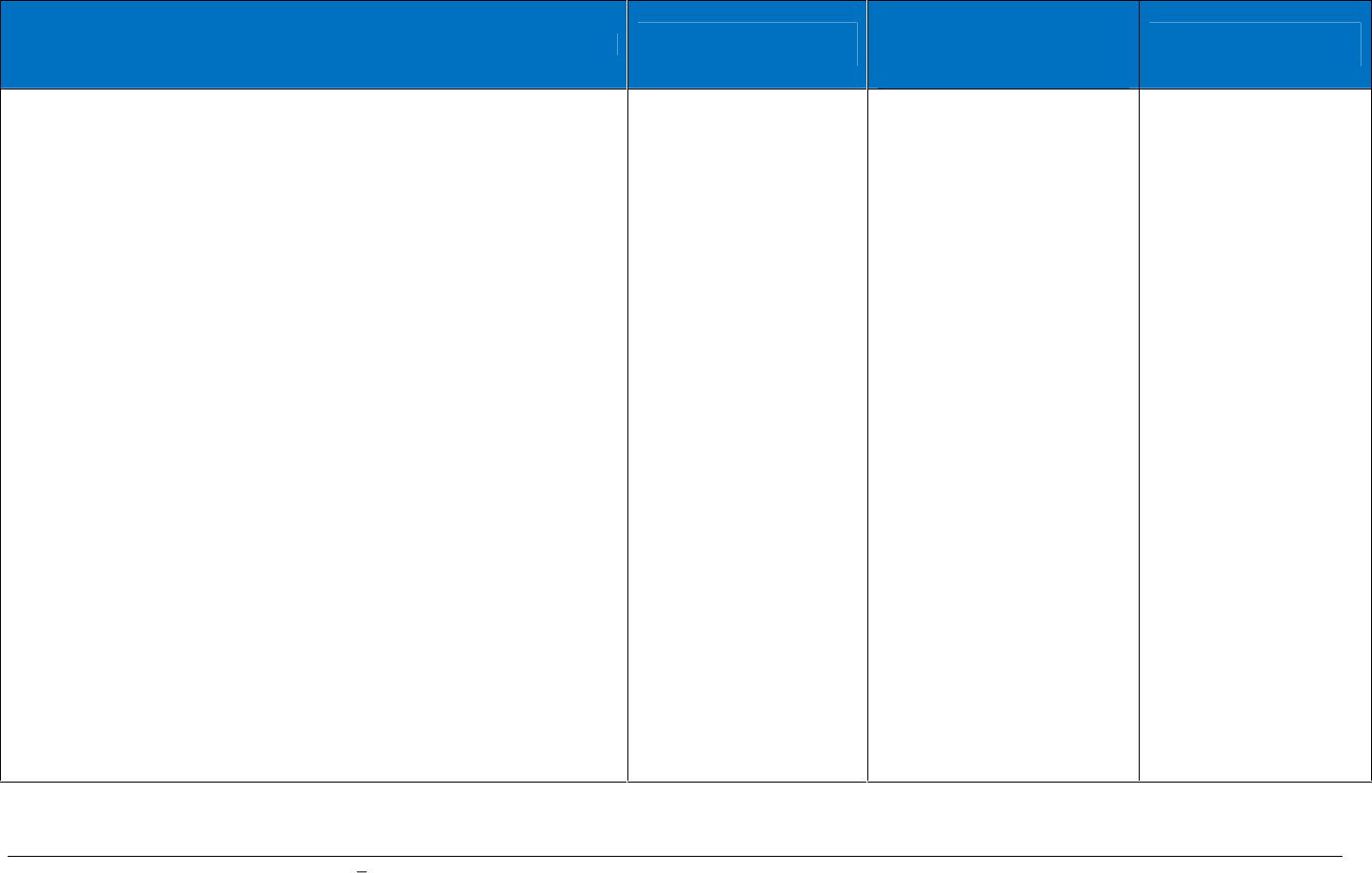
Mortgage Loan Minimum Standards Manual
June 2011
114
Minimum Standard Section 5:
Property Ownership
EBRD MINIMUM STANDARDS
EBRD SUGGESTED
BEST PRACTICE
POINTS TO
NOTE/REASONS FOR BEST
PRACTICES AND
MINIMUM STANDARDS
INVESTORS/RATING
AGENCY ISSUES
T
he borrower should either have:
iii.
Freehold
(Full ownership)
legal title which gives them all rights to use the
property without limit in time, except for the right of the State to take over
the property in certain circumstances and when the State
pay
s
compensation based on at least full market value.
The property may be subject to certain covenants, conditions and
restrictions placed on the property by a prior owner or developer. The
lender should seek legal advice on the impact to the proposed loan as a
result of the restrictions.
or
iv.
Leasehold
title (in countries where this is applicable) with the term of the
lease equal to or not
less than 50
years
after
the
maturity
of the
loan.
Lenders must be able to grasp
tangible security in the event of
loan default.
Lenders should establish, by use
of the appraisal, the estimated
time necessary to market the
property in the event it is
n
ecessary to foreclose
.
Investors and Rating
Agencies need comfort
that the mortgage customer
owns the property and it is
good security for the loan.
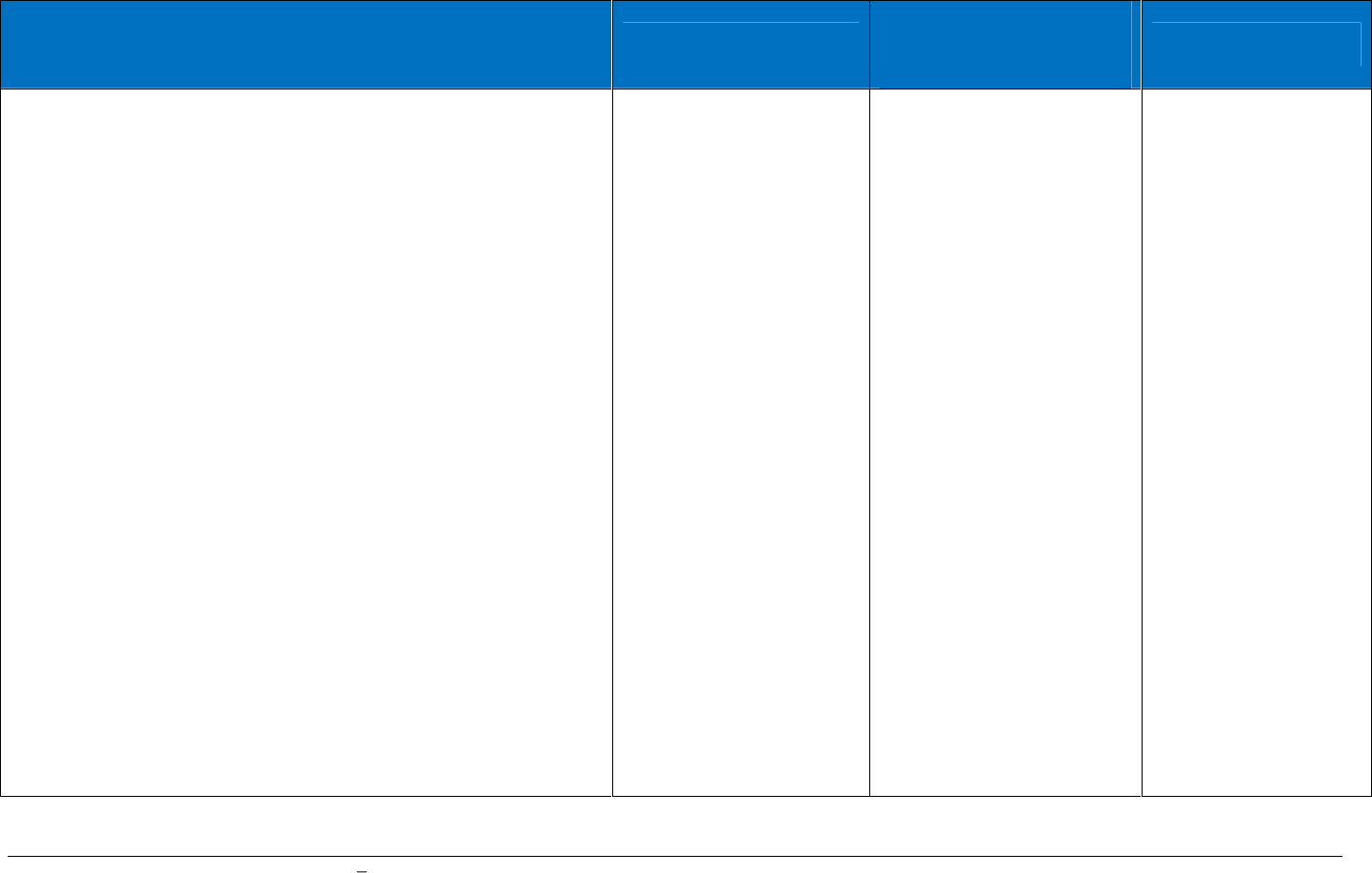
Mortgage Loan Minimum Standards Manual
June 2011
1
15
Minimum Standard Section 6:
Insurance
EBRD MINIMUM STANDARDS
EBRD SUGGESTED BEST
PRACTICE
POINTS TO
NOTE/
REASONS FOR BEST
PRACTICES AND
MINIMUM STANDARDS
INVESTORS/RATING
AGENCY ISSUES
i.
Life Insurance: A Life Insurance policy on the life/lives of the
borrower(s) should be required in an amount to cover the outstanding
principal for the term of the loan. The p
olicy
should
be assigned to the
lender. I
ts value will decrease with o
utstanding balance of the loan.
Alternately, the customer should be provided with the opportunity to
consider a whole life insurance policy that has value beyond the
mortgage. A whole life policy can have an assignment of benefits to the
lender as the first priority, which would pay-off the loan, and leave the
survivors with a free and clear home as well as a potential cash benefit.
As an alternative to Life Insurance (if available), the Lender could also
propose a Payment Protection Insurance.
ii.
The buyer should contract Property Insurance from a high-
rated
insurance company with sufficient reserves to withstand claims for
catastrophic events, such as an earthquake, flood or other natura
l
disasters.
The policy should be indexed or contain defined escalators to provide for
increased coverage against loss, if the property value increases. The
initial coverage should be sufficient to replace or reconstruct the
property* in a covered event.
The policy is to be issued in the joint names
of the customer and the lender or the interest of the lender (
as loss payee
)
should be noted in the insurance policy, as the case may be.
iii.
Mortgage insurance: As a c
redit
enhancement should be carefully
conside
red in the context of current market conditions
.
*This is the amount the property should be insured for each year and it
should cover the replacement cost of the building should it be damaged
or fully destroyed. This cost is linked to either a construction industry
i.
Insurance premiums
shoul
d be pro-rated (1/12
of the renewal premium)
and added to the principal
and interest payment along
with 1/12 of the taxes, if
any
.
ii.
Basic property insurance
typically covers the
structure against hazards
such as fire and flood.
Borrowers should be
counsell
ed on the benefits
of obtaining additional
insurance coverage for
their contents and personal
property
and
this
can be
made an option that the
borrower may elect to
purchase from the lender
at the time of settlement.
iii.
Mortgage Insurance
Guaranty (MIG) e
nab
les
the lender to lend more
with the risk being
underwritten by an insurer,
or effectively pushing the
risk off the balance sheet.
It is recommended that
any loan with an LTV
When housing supply is below
norms and when prices increase,
credit enhancements may lead
to increased speculation and
access to credit for borrowers
that may present a higher risk.
Credit enhancements such as a
Lenders should exercise
great caution to ensure
that the mortgage
insurance company has
sufficient assets and
capital to withstand
multiple claims, such as
those experienced in the
mortgage crisis of
200
8/2009
.

Mortgage Loan Minimum Standards Manual
June 2011
116
index of costs or to the Consumer Price Index. In addition to the main
building, the following should be included in the insured amount - out
buildings, site clearance, temporary re- housing costs and professional
fees.
greater than 80% have
such insurance as a
requirement of the loan.
co
-borrower or additional
collate
ral may be compensating
factors used on a case by case
basis.
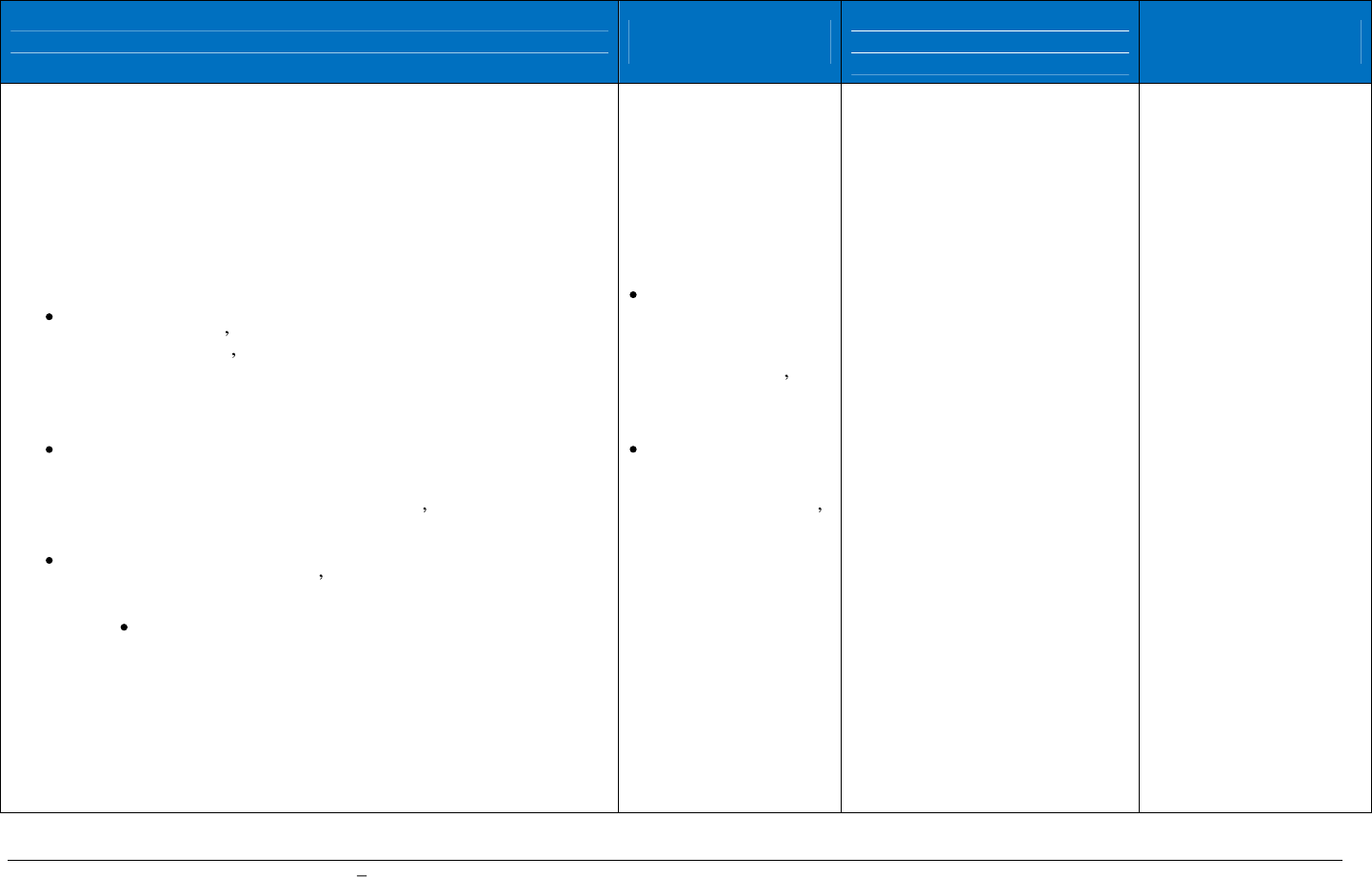
Mortgage Loan Minimum Standards Manual
June 2011
117
Minimum Standard Section 7:
Credit and Risk Management Standards
EBRD MINIMUM STANDARDS
EBRD SUGGESTED
BEST PRACTICE
POINTS TO NOTE/REASONS
FOR BEST PRACTICES AND
MINIMUM STANDARDS
INVESTORS/RATING
AGENCY ISSUES
i.
Credit Policy - The lender must have a defined Credit Policy which must
contain
parameters on the best practices that the lender carries out while
engaging in
i
ts mortgage lending activities.
Primarily, the Credit Policy must identify acceptable risks as to a borrower,
in terms of Capacity, Capital, Credit, and Collateral. As a general principle,
lenders should not lend only on the basis of Collateral. Collateral should be
treated as a last resort or safeguard for the proposed mortgage loan. The
Credit Policy should address:
Ca
pacity
o
The borrower
s net income as it relates to the monthly payment
.
o The borrower s income as it relates to all revolving debt
including the proposed housing payment
.
o Reserves or excess cash that the borrower has after all debts
have been paid.
Capital
o The amount of readily available cash for a down payment on
the purchase of a home.
o Capital can come from
the
borrower
s savings, a gift from
family members or the liquidation of another asset.
Credit
o A history of
the
borrower s payment of other credit oblig
ations
is a critical tool in evaluating future performance.
B
orrower
s should demonstrate a consistent payment history
on revolving credit or other housing expense. Borrowers
who have made payments more than 30 days past the due
date consistently over a period of 12 months may have
underlying problems that should be further investigated.
Borrowers that demonstrate an irregular payment pattern
may be demonstrating sign
s of poor financial management.
o Credit reports should be obtained from reliable reporting
co
mpanies.
Turnaround time in the
credit process is customer
responsive, efficient and
consistent with quality
assessment. This depends
on individual banks but
could range from 24
hours to 7 days.
The maximum
Housing Debt to
Income Ratio is
recommended at 35%
of the borrower s net
income
(see also
Section 1).
The maximum Total
Debt to Income Ratio
is recommended at
50% of the borrower s
net income (see also
Section 1)
.
Financial institutions need to
demonstrate that capital and
shareholder funds are being
managed prudently and that
adequate risk management controls
are in place
.
Loan Assessment:
Loans are underwritten in
accordance with clearly defined
standards. Risk is taken in line with
p
ublished policy.
Credit Risk Management:
Implements policies for prudent
business management.
Arrea
rs Management and
Repossession:
Good b
usiness p
ractice.
Credit policies and operations
manuals are useful only to the
extent of the training that loan
personnel receive.
Organi
sations should schedule
regular training on the subject
matter of lending and to review
past mistakes.
A financial organisation
must have a
documented
Credit Policy to establish
the risk parameters under
which it operates.
The
policy mu
st
give clear
guidance and direction to
staff and demonstrate to
potential Investors and
Rating Agencies the type
and style of risk
management in place.
It should be evident to all
external parties that
prudent, structured risk
management practices are
in
place.

Mortgage Loan Minimum Standards Manual
June 2011
118
Collateral
o
Type of acceptable real property
Residential properties, preferably the one being financed
and only if not possible, on other properties of consistent
value.
o
Location of real property
Properties in developed and urban areas
are preferre
d
Rural or remote properties
can
be considered on a case by
case basis only, after carefully estimating the market
liquidity
o
Condition of real property
Properties should be well maintained with
only
minor
repairs
required
For properties requiring extensive retrofitting or
rehabilitation
, the Lender should seek guidance and advice
from
engineers and licensed contractors.
o
Occupancy of the real property
Owner occupied properties should be the highest priority
and be offered
market
interest rates
Loans for buy-
to
-let or tenanted properties should be
adjusted for risk. The LTV should be lower and the interest
rate should be higher to compensate the lender for risk (see
also Section 1)
.
o
Value of the real property
Each lender should establish the minimum value of a
property it will consider for collateral. This value may vary
based upon location and local
conditions
.
o Environmental matters in the C
redit
Policy should address
the
EBRD's Environmental Procedures for Mortgage Lending, as
amended from time to time (www.ebrd.com
).
All lending decisions must be made on the basis of verifiable information and
documentation in addition to the judgment of a seasoned and well trained loan
underwriter.
The lender must set standards which ensure that underwriters and account
managers apply the policy initially at credit assessment stage and
subsequently throu
ghout the life of the mortgage.
Self
-
Build Projects
Lenders
are cautioned about
engaging in self-build projects.
Many owner-builders underestimate
the true cost of construction and
may not have adequate skills to
complete the project with quality
craftsmanship.
Traditionally, construction and self-
buil
t projects provide the highest
degree of risk. The risk of
development should be reflected.
Investors typically will not
buy construction loans.
Organi
sations should not
look to investors to assume
the risk and ma
nagement of
construction loans.

Mortgage Loan Minimum Standards Manual
June 2011
119
The C
redit
P
olicy should include the appro
ach to Exception applications
and
applying compensating factors for reconsideration of a loan which appears to
make common sense, but does not meet every aspect of the policy
.
The policy must include steps for
lenders
declining loans which are not based
on sound banking principles. Lenders should have
procedures
for appealing or
reconsidering a negative loan decision.
Interest
Rates and Loan Products:
The interest rate charged to customers should be adequate to cover the bank's
cost of funds plus a suitable margin for profit. The lenders should have a
clearly written policy to avoid dealing with high risk borrowers and/or with
fraudulent customers.
Fixed Rates should be matched with the cost of funds and have sufficient
margin to allow for minor flu
ct
uations in the cost of money. Further, it is
critical that the fixed rate loan be matched to a similar maturity of deposits;
e.g. l
onger term loans to longer term deposits.
Interest rates may be different for
various
loan products such as purchase,
refinance or home equity and construction or self-build loans to reflect the
level of risk associated with that product.
Foreign Currency Loans: The C
redit
Policy should clearly identify those
circumstances where foreign currency loans will pose unnecessary risk to the
organisation and borrower.
The policy should require lenders to explain in writing to
borrowers
the risk
undertaken by the
borrower
in the case of mortgage loans denominated in a
foreign currency
should
it
experience an erratic change in value
.
Mortgage Assets and Liabilities Management:
Lenders should:
Avo
id an Originate and Distribute model in underwriting mortgage
loans.
Match their funding for mortgage lending for a period of at least 3
years; alternately, the loans should include a provision to reset the
interest rate to market rates at specific anniv
ersaries of the loan.
I
f the
lender is not keen
or
ready to take the risk of
fixed interest rates, the
lender should consider
variable rates.
Marginally capitalised lenders
should avoid risk based loans.
Lenders are recommended not to
engage in risk based pricing wh
ich
would substantially increase loan
loss reserves and should implement
caps on the number of risk-
based
loan portfolio.

Mortgage Loan Minimum Standards Manual
June 2011
120
Plan to keep their originated mortgage loans in their balance sheets
for at least 3 years.
As
part of the C
redit
Policy, the Loan Servicing Division should have a
separate policy and procedures manual for Arrears M
anagement,
Reposse
ssions, Loan Loss Provisions and Write
-
of
fs.
Lenders must have an Arrears Management Policy for Mortgage Lending
Risk Framework. This should be part of the overall Credit Policy and i
nclude
specific provisions for:
Well t
rained team familiar with collect
ion practices and local laws.
Clearly documented process for contacting borrowers.
Overall approach to arrears
including
face to face contact
;
analysi
s of
reasons why the borrower has not made a payment and outline
solutions for repaying the debt
Follow up procedures with
action
items
specific
,
measurable
and
achievable.
Collection and Enforcement:
i.
The Credit Policy should include procedures for managing the loan after
closing until full repayment. This is known as
Loan Servicing Policies
.
ii.
Lenders should have clearly defined policies for loan enforcement.
Foreclosure on the property should be the final aim for any lender in the
case of persistent non-repayments, but only after all other alternatives have
been exhausted.
iii.
Taking possession of the collateral should be the last resort solution and
should be exercised with care and in accordance with the legal requirements
in the respective country.
iv.
Lenders should assess the potential damage to its market image and
position in case of forced executions of the
collateral.

Mortgage Loan Minimum Standards Manual
June 2011
121
Minimum Standard
Section 8: Disclosure
EBRD MINIMUM STANDARDS
EBRD SUGGES
TED
BEST PRACTICE
POINTS TO NOTE/REASONS
FOR BEST PRACTICES AND
MINIMUM STANDARDS
INVESTORS/RATING
AGENCY ISSUES
Mortgage lenders should have appropriate disclosure policy. The following
minimum standards should be applied:
i.
Lenders should have procedures to make all disclosures to the prospective
customers as required by the law and/or consumer protection act in the
respective country.
ii.
All mortgage documentation, starting with the Mortgage Application
Forms
, has to make sure that consumer protection legislation is observed,
as required by the legislation of the respective country. Also, key
information regarding inter alia APR and AER should be disclosed to the
customers (see Section 2).
iii.
Post sale documentation and the mortgage provider s obligations in
relation to servicing the mortgage loans should be fully disclosed.
iv.
For mortgages denominated in foreign currencies (as mentioned in
Section 1), the depreciation risk should be disclosed upfront.
Good disclosure policy will make
mortgage lending a safer activity as
no unjustified claims would be
submitted by the customers.
Investors and Rating
Agencies need comfort
that the mortgage
customer
is fully aware of
all details of the relevant
mortgage transaction they
have entered into.

Mortgage Loan Minimum Standards Manual
June 2011
122
Minimum Standard
Sec
tion
9
:
Basel II and III Requirements
The Basel Committee on Banking Supervision is an international body of
financial regulators.
The Basel II, or the Capital Requirements Directive (CRD) as it is known in the EU, does not fundamentally change minimum standards in relation to mortgage business.
However, it strengthens governance arrangements and, where Credit Institutions (defined as commercial banks, non-bank financial institutions granting mortgage loans and any
other mortgage prov
iders) are authorised to use internal risk models to manage their mortgage portfolios
. I
t outlines minimum standards regarding the use and operation of these
models. As and when countries adopt CRD standards, subject to individual sovereign state discretio
ns or regulations by the respective Central Banks, as the case may be, Credit
Institutions are strongly encouraged to adopt these CRD standards also.
In 2010, these standards were updated in what is now known as Basel III. The core of this new agreement is a measure that will require banks to increase the amount of their
common equity from two
(2)
percent of assets to seven
(7)
percent.
Common equity is considered the least risky form of capital.
Depending on the level of risk management sophistication in a Credit Institution, the CRD offers two approaches regarding residential mortgages
a standardised approach and
an internal ratings
-
based (IRB) approach.
Under the standardised approach
,
lending fully secured by mortgages will be risk weighted at 35%, su
bject to certain conditions.
Under the IRB approach Credit Institutions are required to meet certain minimum qualitative and quantitative standards and, provided these are met, Credit
Institutions will be
,
able to use internal data to calculate the capital
required to underpin their mortgage business.
Thus the CRD
strongly supports
residential mortgage business provided strict criteria
are met.
Given the fact that Basel III is
relatively
new, it has not yet delved into the specific technical issues with regard to mortgage lending that are in the LMS. The specific details on
mortgage underwriting are being discussed by an international working group under the auspices of the Financial Stability Board (FSB) Standing Committee on Standards
Implementation (SCSI). However, while the SCSI has completed a peer review, no report has been agreed to and issued. While the Section on Basel II included in the LMS is
still applicable, it is likely to
be
change
d
and also likely t
o be amended from time to time.
The draft sta
ndards under the SCSI note that:
Financial institutions should regularly review their standards on residential underwriting and adjust them if there appears to be a
build
-up of risks in the
housing market or if there is a lending boom that could pose risks
to financial stability.
The regulatory framework should be broad enough to ensure that all residential mortgage lending is supervised to protect both investors and consumers
.
Mortgage data should be collected, analy
s
ed and reported at least annually.
While SCSI notes that while it will set high level principles rather than detailed international standards, it does note that individual
countri
es can set much more detailed
standards in areas such as:
Borrower
s ability to repay
Qualifications of mortgage len
ders
Ban on
steering incentives, such as yield spread premiums, that vary based on the terms of the loan
Prepayment penalties
Interest rate reset notices
that require six
months notice
before an adjustable rate or hybrid mortgage is to adjust
or
Appraisal
reform
INTRODUCTORY REMARKS

Mortgage Loan Minimum Standards Manual
June 2011
123
i.
Corporate Governance
The credit institution s Board of Directors or an equivalent
committee should review and approve all material aspects of the
grading and estimation processes
.
Senior management should possess a working understanding of
the credit institution s grading systems and detailed
comprehension of its associated management
reports.
ii.
Credit
Risk Control
The credit risk control unit should be independent from the
personnel and management functions responsible for originating or
renewing the bank s mortgage loan and related produc
ts.
This unit
should report directly to senior management
.
iii.
Inte
rnal Audit
At least once a year, an internal audit unit should evaluate the
credit institution s grading systems and its operations, including the
operation
of the credit function and the estimation of
risk
components. This should be done more frequently for those are
as
that are deemed higher risk.
iv.
Modelling
Credit Risk in Mortgages
(IRB approach only)
If models are used for the mortgage business, they must be capable
of producing robust and verifiable risk components that are used as
inputs to a formula.
One of the key items the model should produce
is
the required amount of capital.
v.
Use
of Mortgage Property as Collateral
Residential real estate which is or will be occupied
should
normally be recognised as eligible collateral, provided that certain
standa
rds are met including an independent appraisal.
However,
the value of the property should not depend on the credit quality of
Senior
Management should be
regularly informed by these credit
risk control units, which should
be independent from product
underwriters.
The information
should include performance of
the grading processes and areas
deficient and/or in need of
improvement,
as well as the
results
of previous attempts to
improve deficiencies. The reports
should be detailed enough to give
management specific information
by
different grades and
by
migration across
these
grades
,
when applicable.
The primary areas of
responsibility for the credit risk
control unit(s) should include, but
are not limited to, testing and
monitoring
grades and pools of
mortgages.
The reports it
produces should summarise the
status of these mortgages, giving
senior management the ability to
take action in the event of any
negative trends.
The formulas used as inputs into
the model and the operational
details of the system must be well
documented.
To demonstrate a clear chain of
authority from the very top of the
organi
sation which receives
information to identify and mitigate
risk for the organisation, its
investors and its consumers
.
To provide information from a unit
that is
independent
from the rest of
the organisation and whose function
is to continually test for risk.
The existence of an independent
credit risk control unit is consistent
with and does not
supplant
the need
for internal audit
function.
The models are best used as a
management tool, used in
conjunction with human
judgment.
Declaration of which
approach the credit
institution has adopted i.e.
standardised or
internal
ratings
based approach
(IRB) as well as
information relating to
management s methods for
identifying and mitigating
risk.
Rating agencies, investors
and others are taking a
keen interest in model
documentation.
They
would also be very
interested in understanding
the various stress tests that
are used to
assess
the
robustness and accuracy of
the
modelling and testing
systems.
EBRD MINIMUM STANDARDS
EBRD SUGGESTED BEST
PRACTICE
POINTS TO NOTE/REASONS
FOR BEST PRACTICES AND
MINIMUM STANDARDS
INVESTORS/RATING
AGENCY ISSUES

Mortgage Loan Minimum Standards Manual
June 2011
124
the borrower. Financial
institutions
can and should establish
different standards for propert
y that will be used as rental.

Mortgage Loan Minimum Standards Manual
June 2011
125
Minimum Standard
Section 10: Security Requirements
EBRD MINIMUM STANDARDS
EBRD SUGGESTED BEST
PRACT
ICE
POINTS TO NOTE/REASONS
FOR BEST PRACTICES AND
MINIMUM STANDARDS
INVESTORS/RATING
AGENCY ISSUES
i.
First Mortgage Right is to be registered over the property for the
amount
of the mortgage plus interest. This mortgage right is to be
assignable to a third
party
(together with the mortgage loan) based,
if required by the law, upon the consent obtained at the signing of
the
offer
letter
or the mortgage loan agreement.
ii.
Life Insurance
11
: A Life Insurance policy on the life/lives of the
borrower(s) should cover the outstanding principal for the term of
the loan, as
and
when
available in the local market. The insurance
policy is to be assigned to the lender and its value should decrease
in line with outstanding balance of the loan.
iii.
Buildings Insurance
12
: An index linked property policy to cover
the replacement/reinstatement value of the property should be
required. The initial cover should be in line with the replacement or
reinstatement cost in the Valuer s or Appraiser s Report.
This
cover should be adjusted over t
ime to be in line with an appropriate
index of construction costs. The policy is to be in the joint names
of the customer and the lender.
i.
A Mortgage Indemnity
Guarantee (MIG*). This would
become a Minimum Requirement
if the lender decides to lend
outsi
de of published LTV policy.
Lending outside of the published
LTV policy should only be done
under exceptional circumstances
and should require the approval
of senior management, if
permitted at all (see also Section
4).
ii. Lenders should rely
first
on th
e
ability of the borrower to repay
and then security provided by the
property. Only in exceptional
circumstances should the loan
require further support such as
additional liens or guarantees.
The need for these additional
guarantees should indicate that
this loan should be reviewed by
senior management.
* as outlined in
Section 7.
Assuring that the loan is secured by
a first ranking mortgage over the
property is prudent banking
practice.
Further, the lender must be assured
that the borrower will have the
ability
to repay the loan and to do
so on
a
timely basis.
Documentation
should be in the loan file to verify
the ability to repay.
The value of the
property as a security interest is
only relevant as a fall back position
in the
event of non
-
payment.
In the event of a Mortgage
Bond or Securitisation
issue, a full review will be
undertaken of the security
and documentation
supporting the proposed
pool of mortgages.
Therefore, the lender
should ensure that the
underwriting standards are
in place, that
documen
tation to verify the
borrower
s ability to repay
is in the loan file and that
there is a system in place to
spot check and monitor the
loan files.

Mortgage Loan Minimum Standards Manual
June 2011
126
Minimum Standard
Section 11: Management Information, IT and Accounting Information
EBRD MINIMUM STANDARDS
EBRD SUGGESTED
BEST PRACTICE
POINTS TO NOTE/REASONS
FOR BEST PRACTICES AND
MINIMUM STANDARDS
INVESTORS/RATING
AGENCY ISSUES
i.
Mortgage Accounting System: Comprehensive mortgage accounting
system that would include the following functions within the guidelines of
the
Credit Policy
:
Ability to "tag" or identify mortgages as belonging to a particular
funding source, cover pool or as having been transferred to a particular
SPV
Facility to use internal bank standing orders/direct debits, if available
Facility to
amend payments
and
notify customers when rates change
Facility switch from variable to fixed rate and vice
-a-
versa
Facility to accept lump sum reductions
and
/
or
early repayments
Facility to remove/add names to accounts
Management of account on death of a
borrower
Facility to monitor
and
follow up on arrears
Facility to carry out regular/annual reviews
Facility to provide regular
statements to the customer
Systems must also have an adequate disaster recovery plan
ii.
Reporting:
Good reporting information which is accurate, timely and
relevant. Monthly/quarterly/annual reports should be available by
branch/area/total bank for:
Mortgage portfolio size and/split by products (total value, total
volume, average term, average interest rate, average LTV, average
PTI)
Share of national mortgages (where available)
Market segments
Origination
channel
Growth profile
Performance v
ersus
targets
Applications versus approvals versus declines versus drawdowns
Application pipeline
Arrears profile (split into:
<
30, 60, 90 and 120
days)
Reporting and Monitoring:
The mortgage business cannot be
successful unless there is regular
analysis of the current portfolio v
t
argets.
Remedial action may be required
and it is important to know the
baseline or starting point.
Rating agencies and
investors
require
detailed reports on the
lenders mortgage portfolio to
rate/buy mortgage bonds or
The rating agencies review
the following IT systems
and processes when
assessing
mortgage
originators and servicers:
Core systems
functionality
Systems integration
and interfaces
Electronic document
storage/scanning and
workflow
management
System security
/backup/retention
Disaster recovery and
business resumption
plans/testing
Data integrity
Use of automated
underwriting systems
Web
-
based
applications
Credit scoring
Risk management
modelling
Automated valuation
models
Integratio
n of these
systems as well as
other business lines
Key
information

Mortgage Loan Minimum Standards Manual
June 2011
127
Maturity profile
Geographic profile/employer profile
Profitability
Historic
al
data retention
Ability to produce reports as required by rating agencies and investors
iii.
Monitoring Mortgage Account: The following should be adhered to in
order to ensure
efficient monitoring of accounts:
Approvals are converted into
draw
downs
Security is in order before drawdown
(s)
Repayments are up to date
Premiums on life insurance policies are up to date
Premiums on property insurance policies are up to date
Property in
surance policies are index linked
Insurers report incidents of cancelled life/property insurance policies
mortgage
-backed securities. (see
s
ection on rating agencies)
requirements:
Accurate geographic
location
Customer history on
mortgage
and, for
example, additional
equity withdrawal
Accurate recording of
the
borrower s
financial position
Details on pr
operty
usage such as owner
occupied
or
rented out
Type of mortgage
product
Loan to value ratio
(LTV) and PTI
Original valuation and
most up to date
valuation
